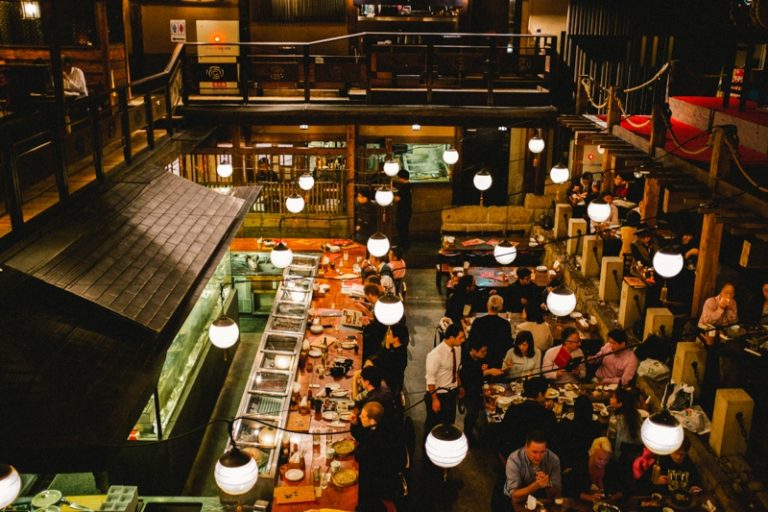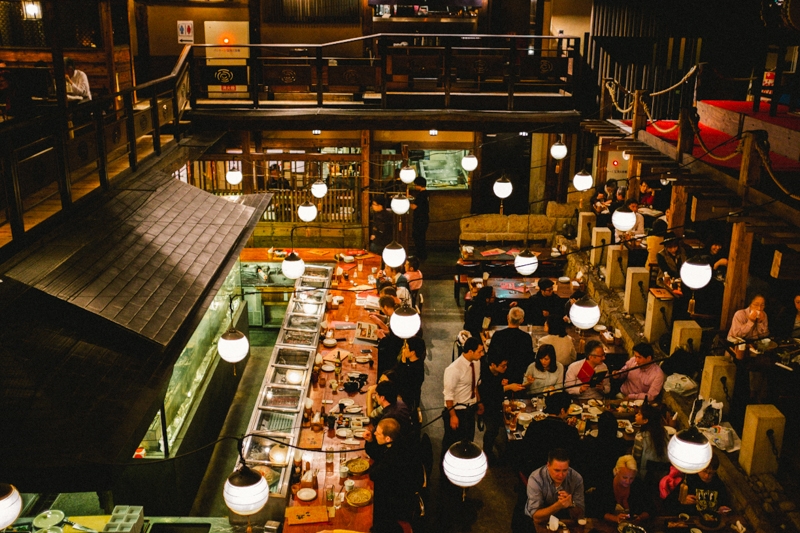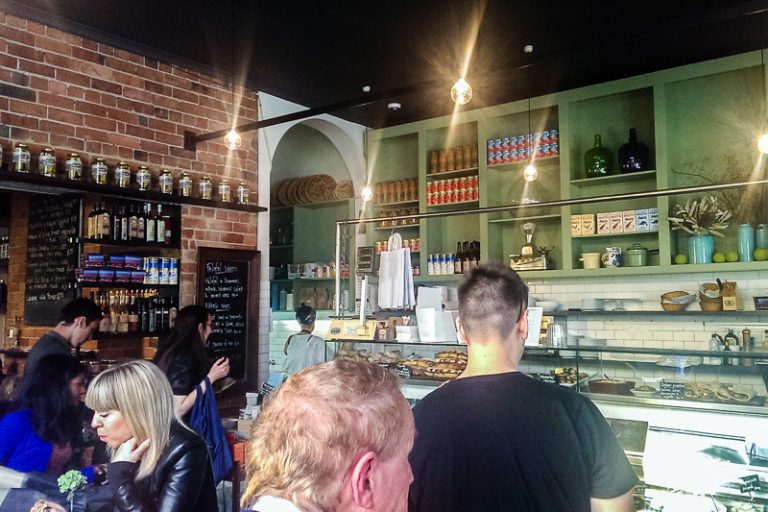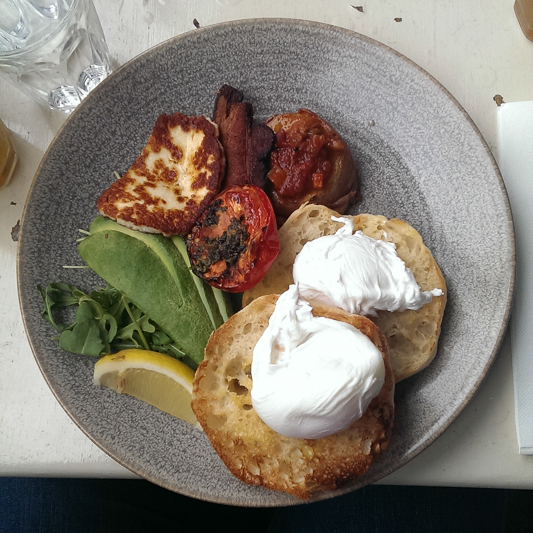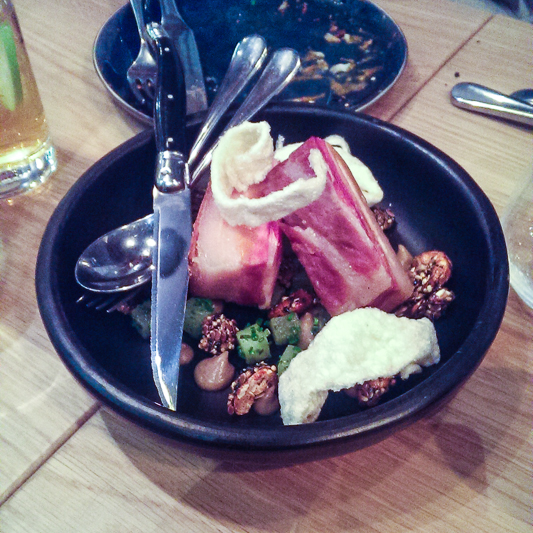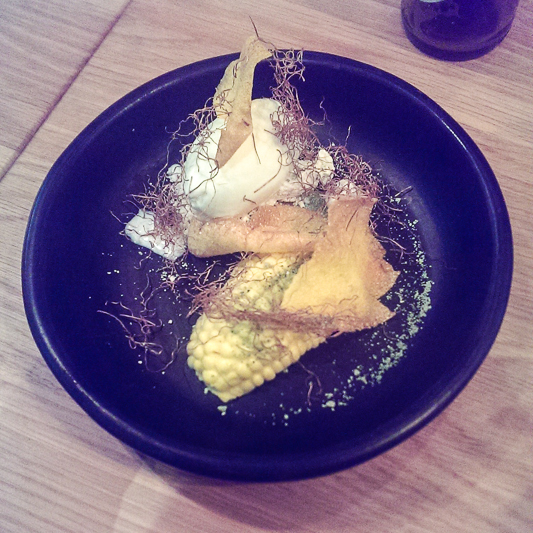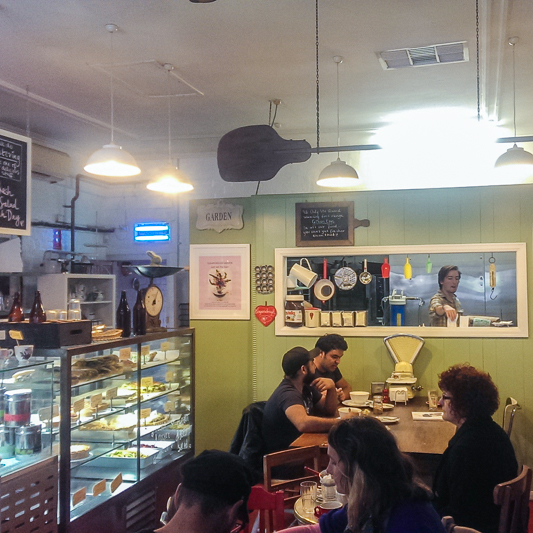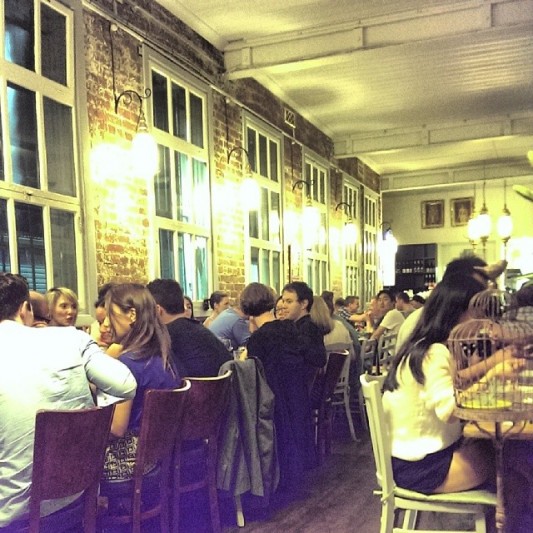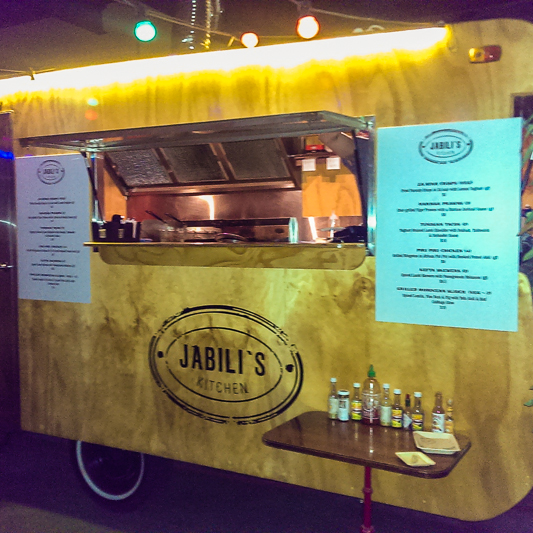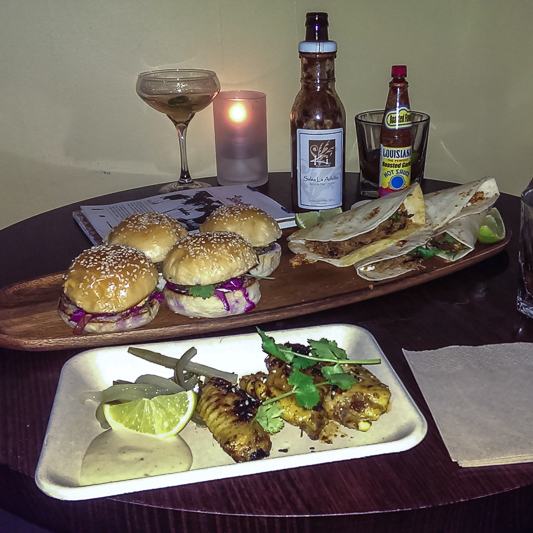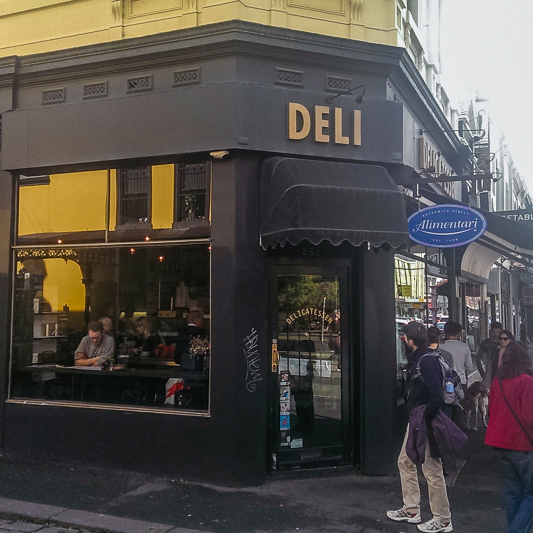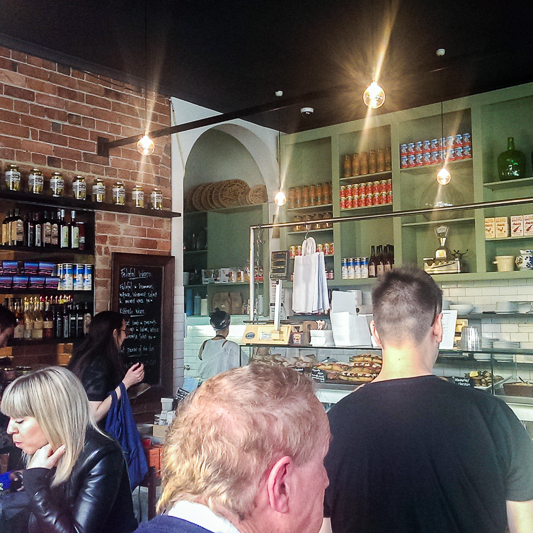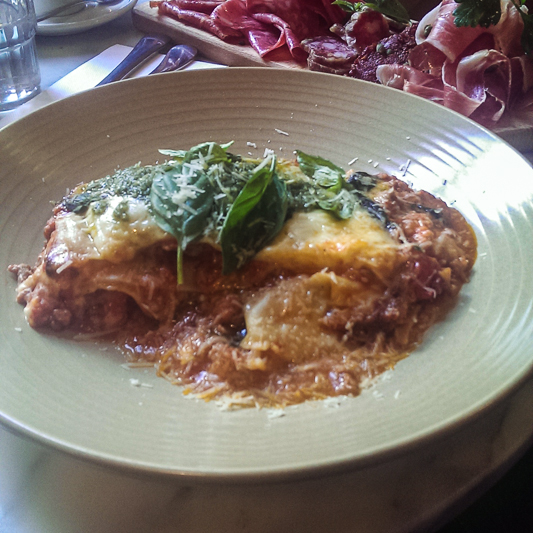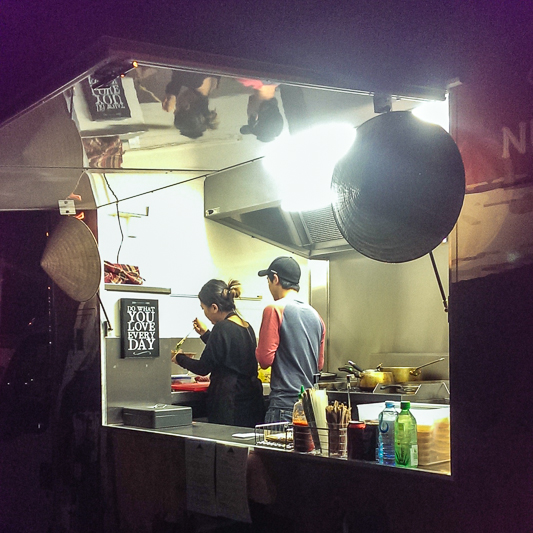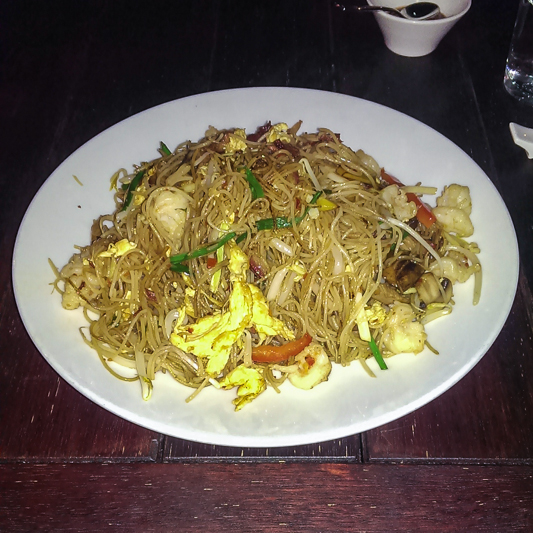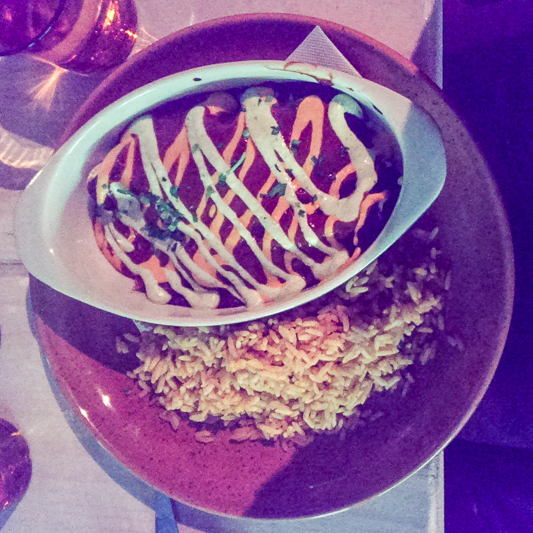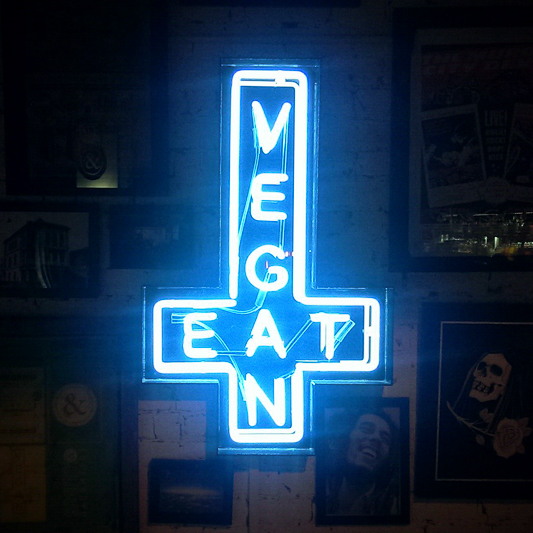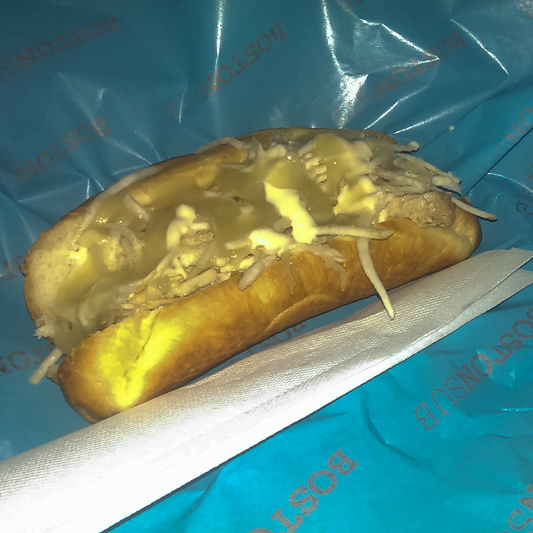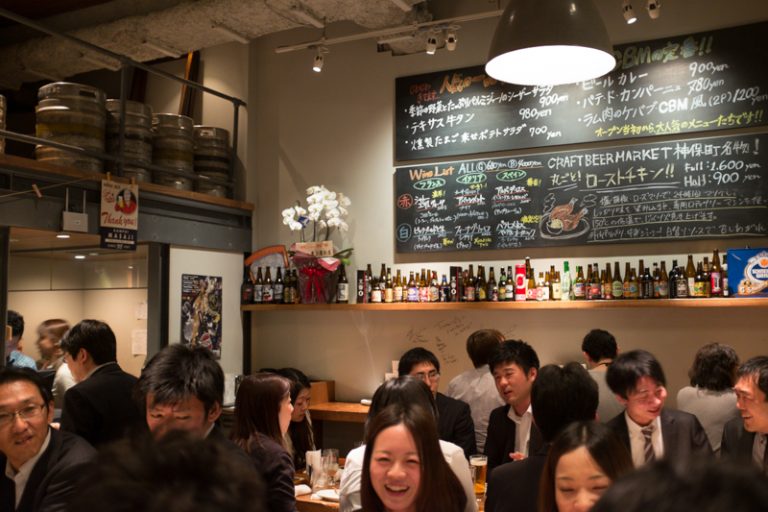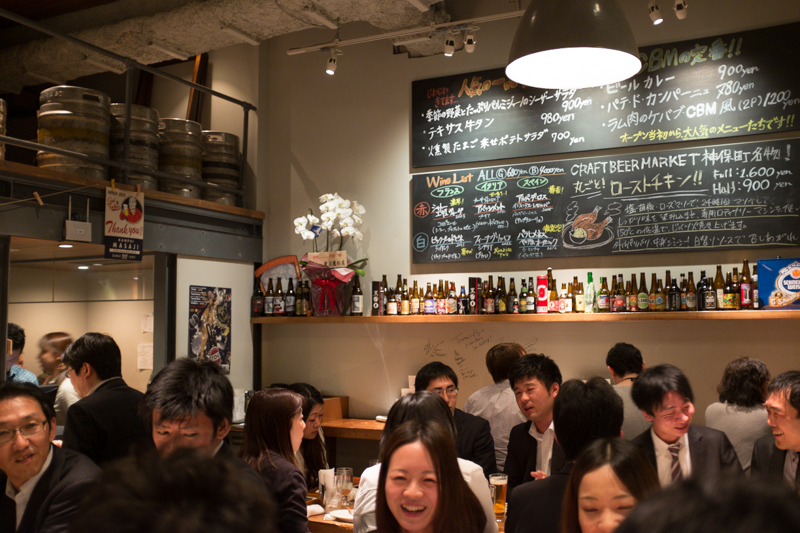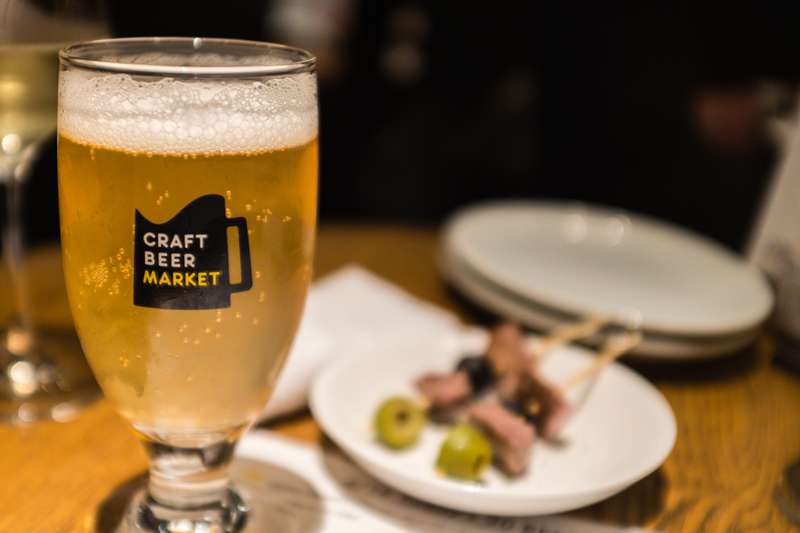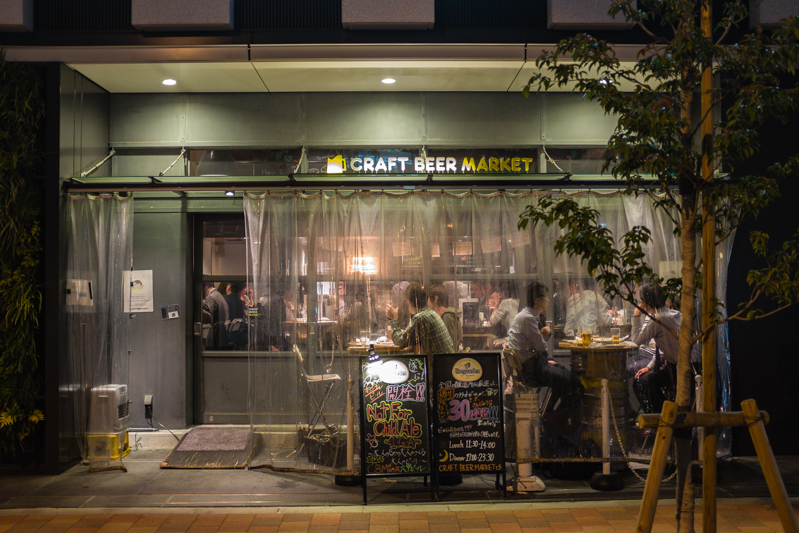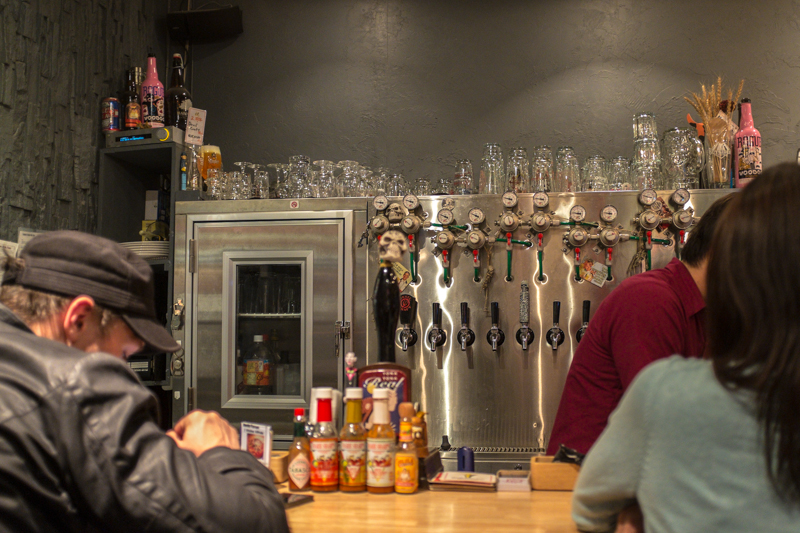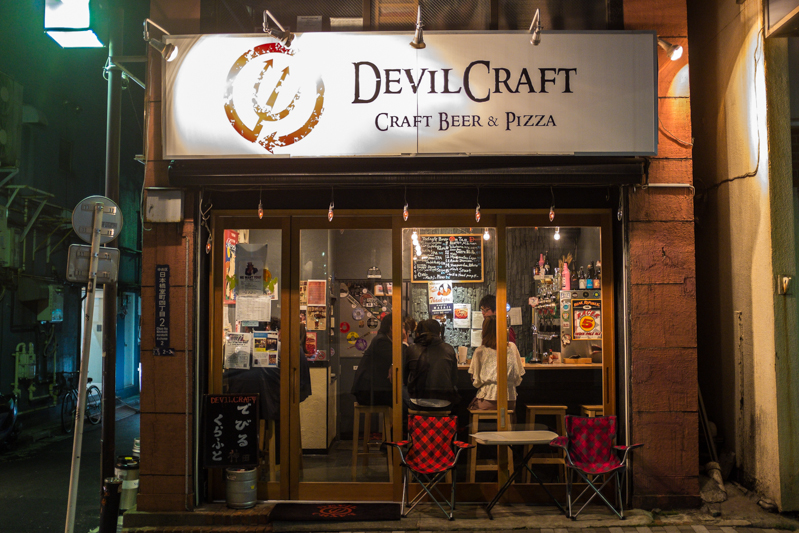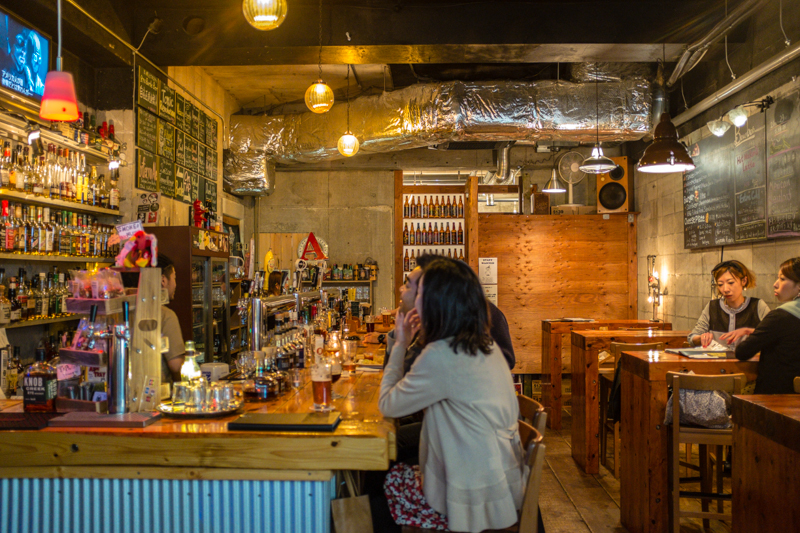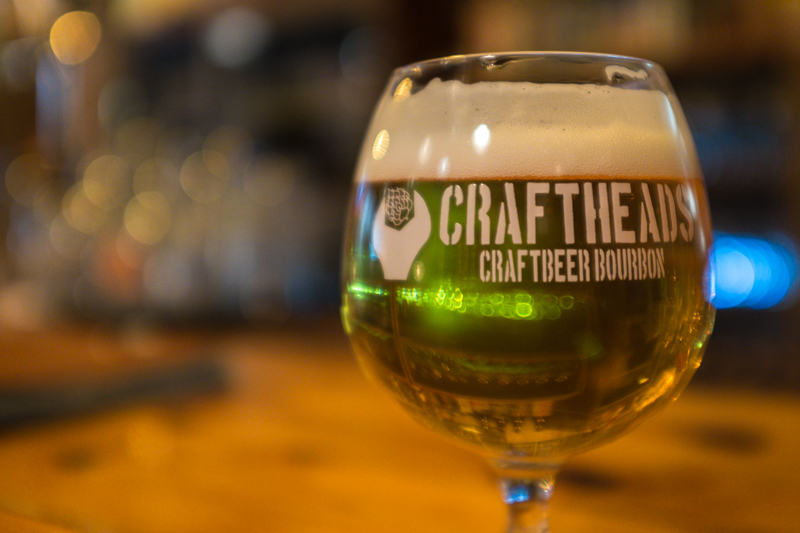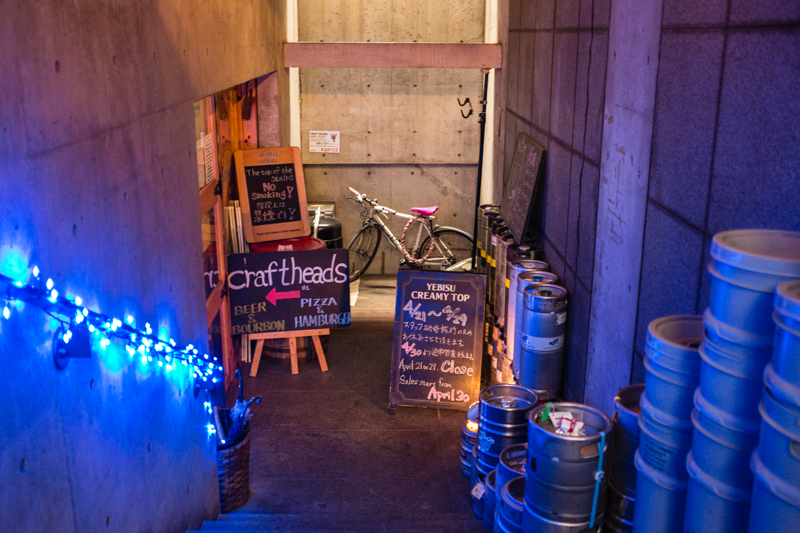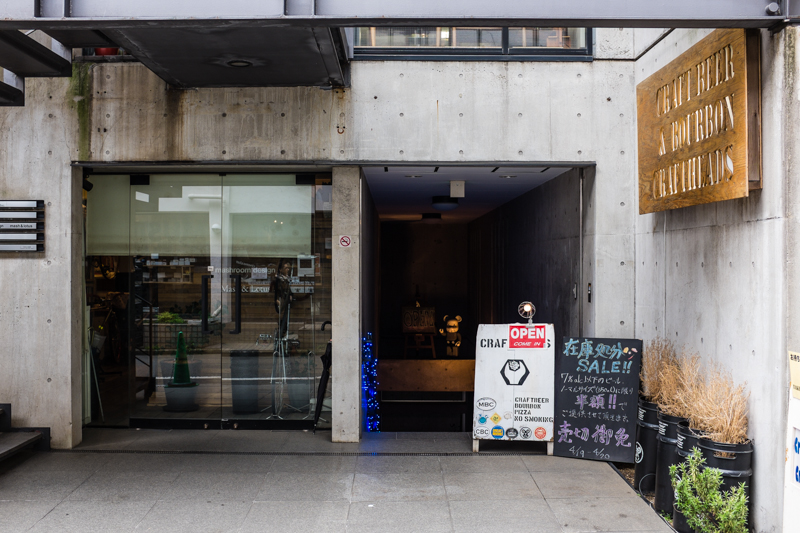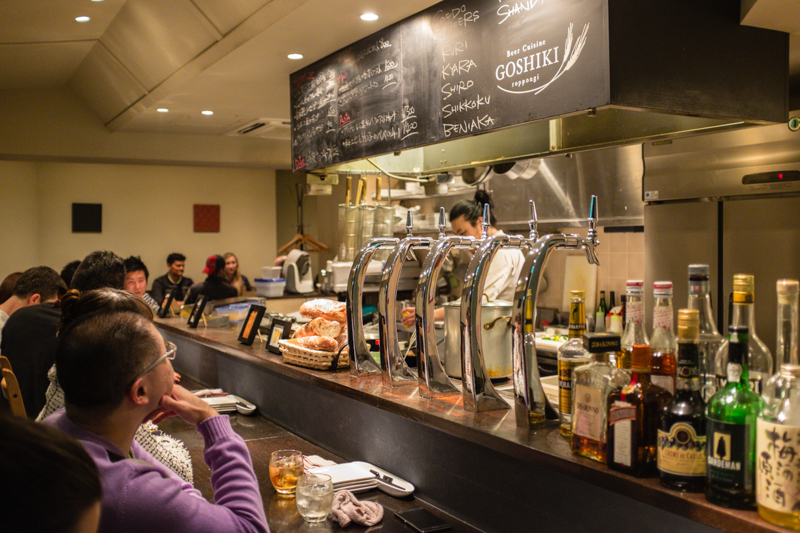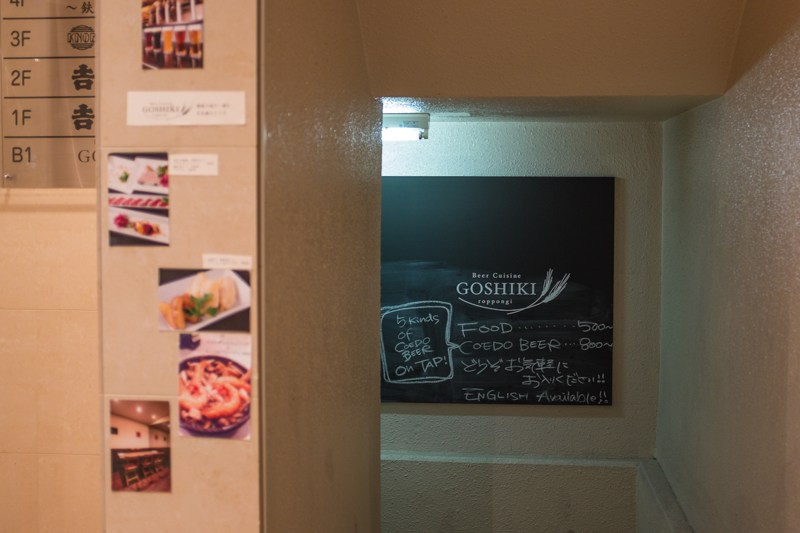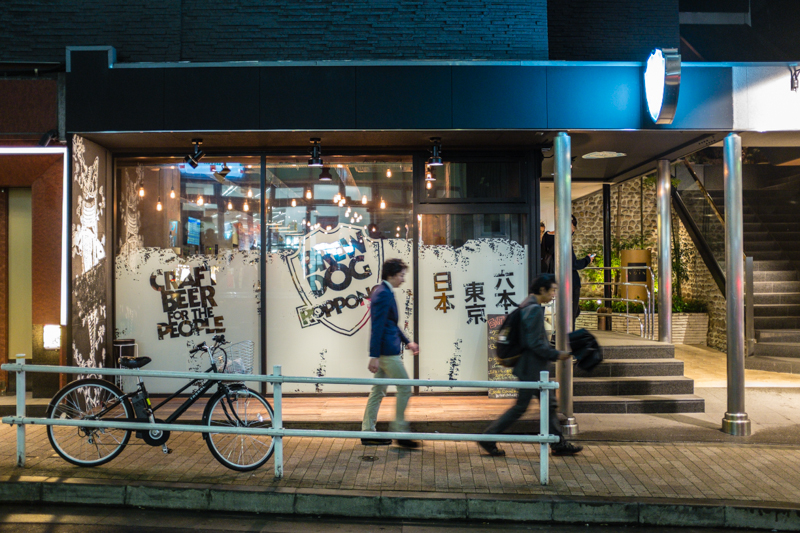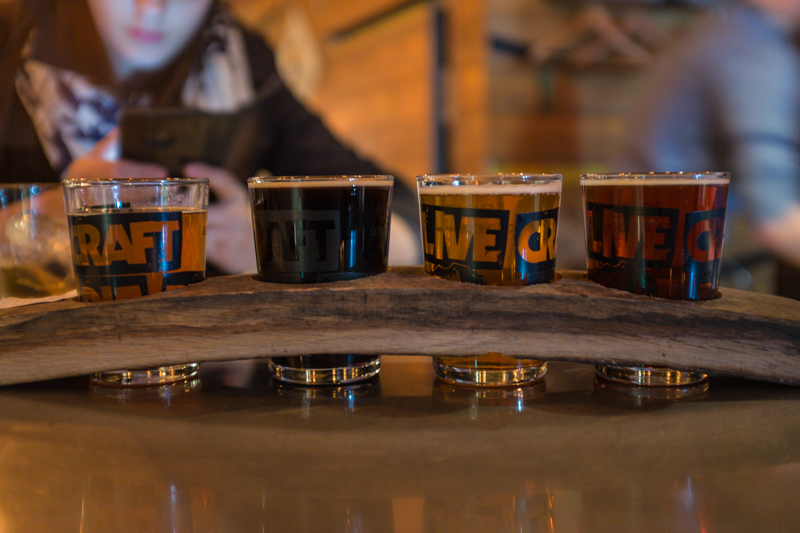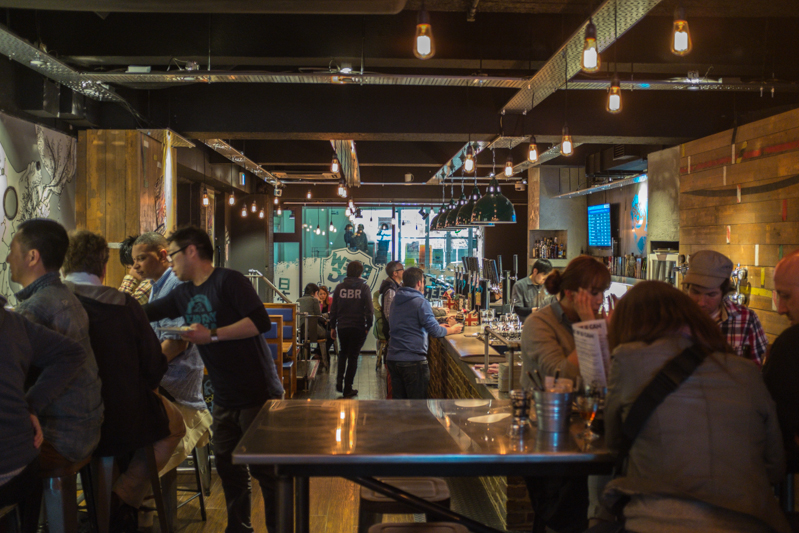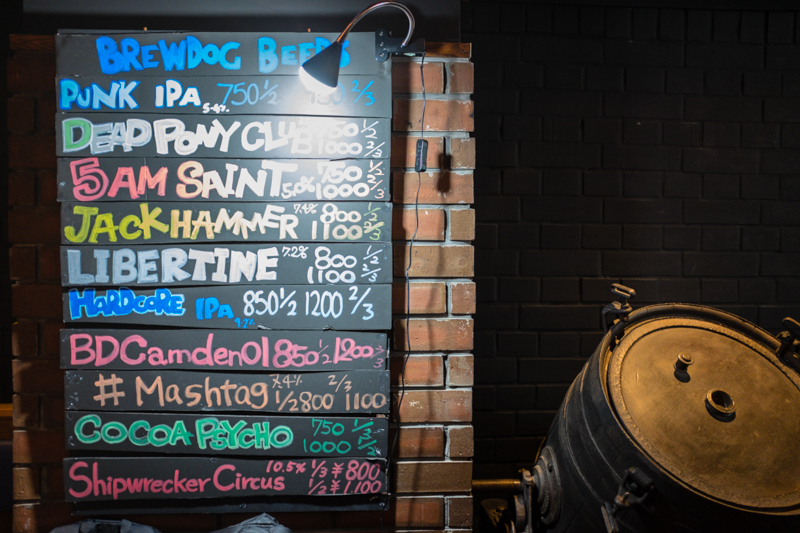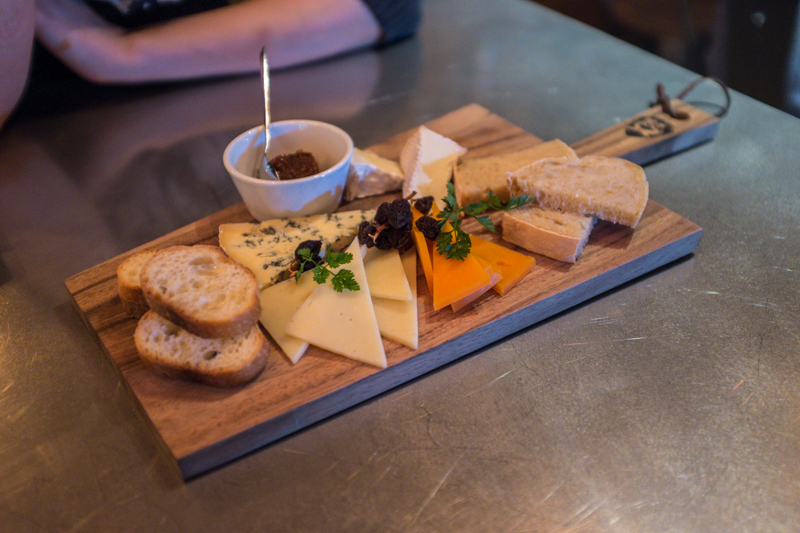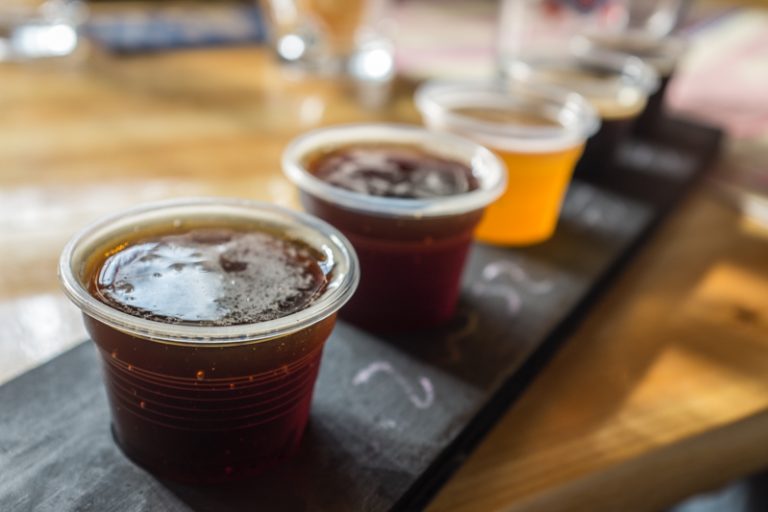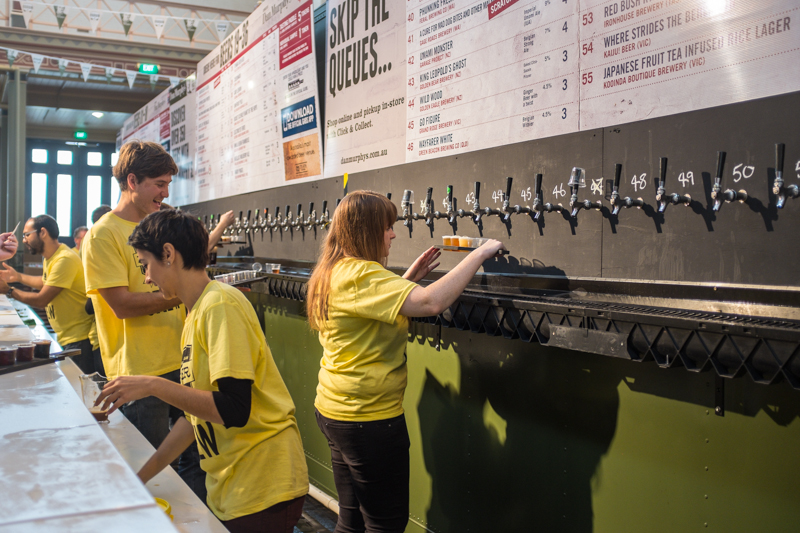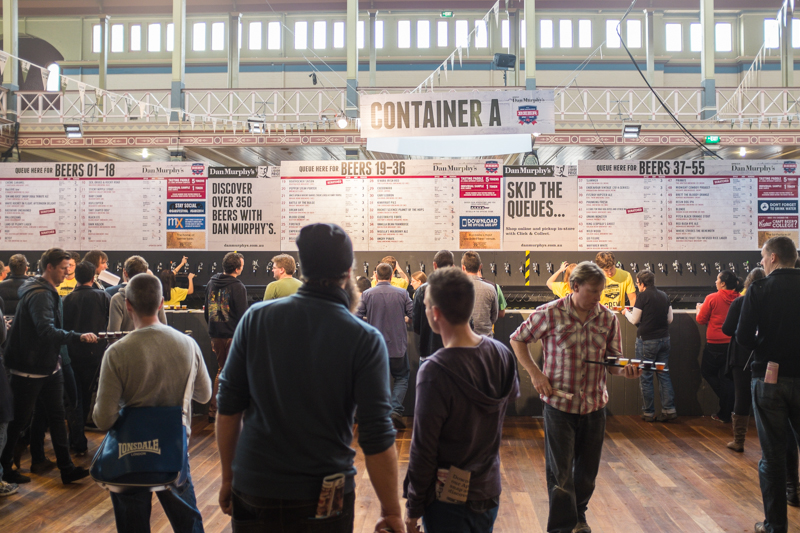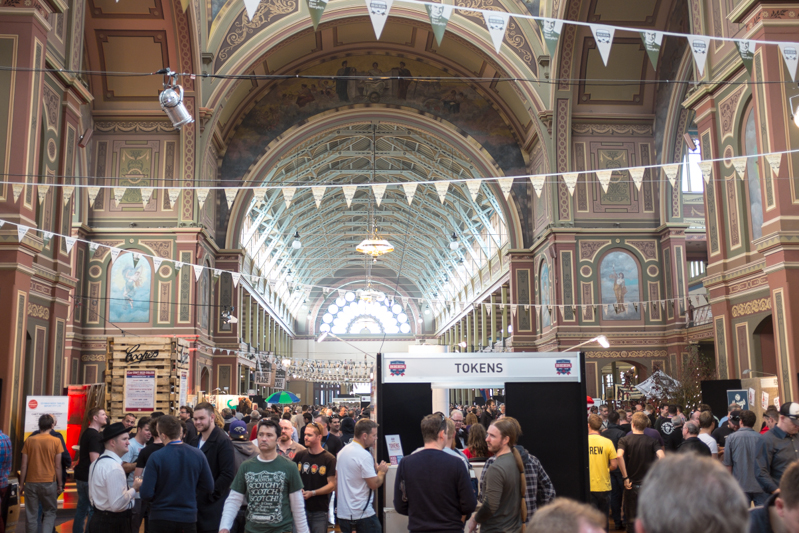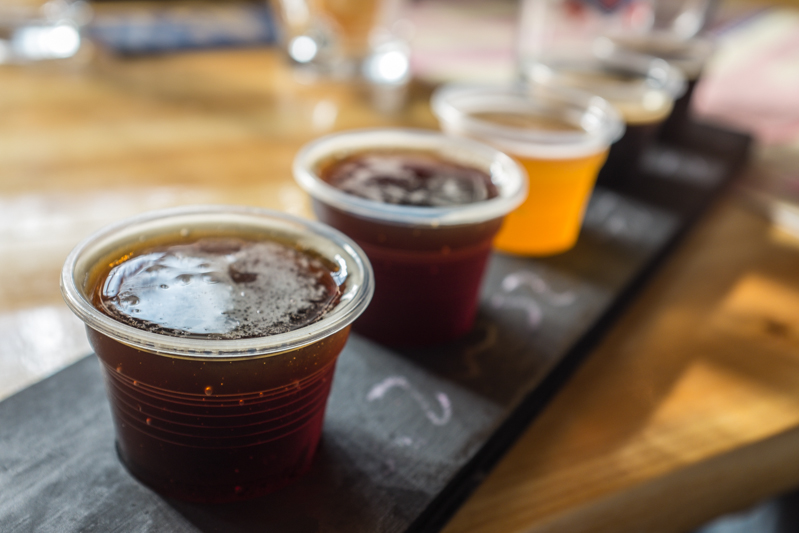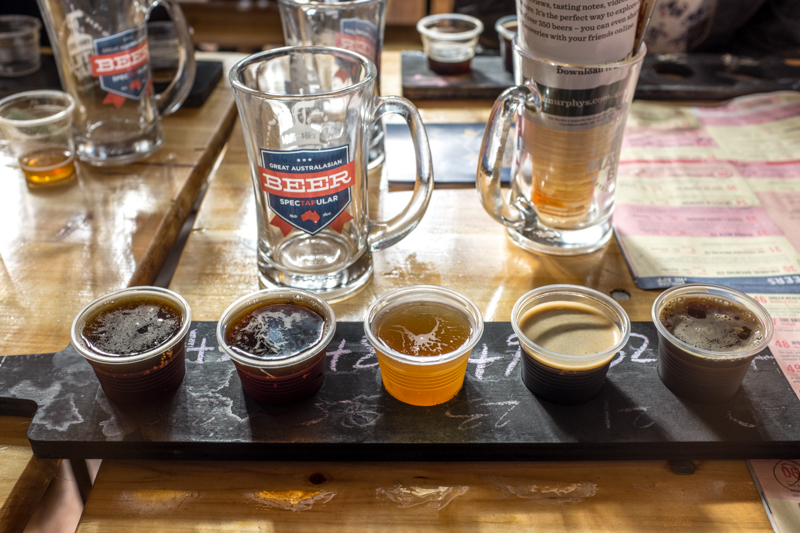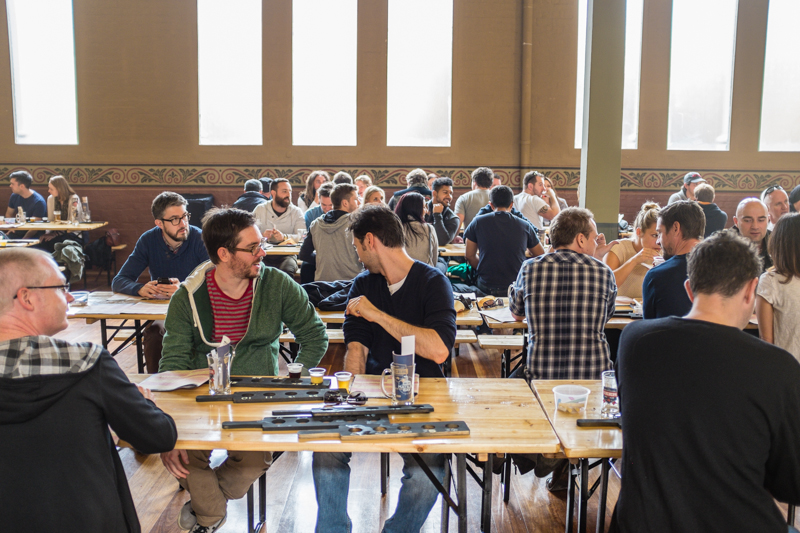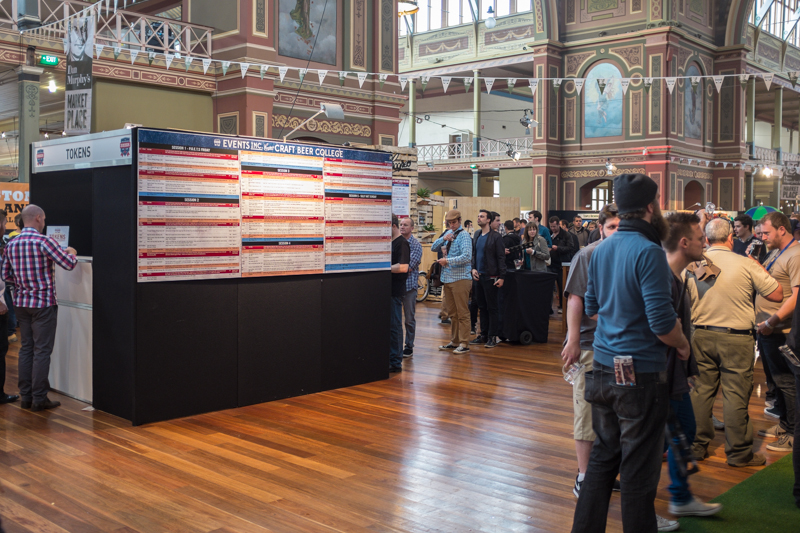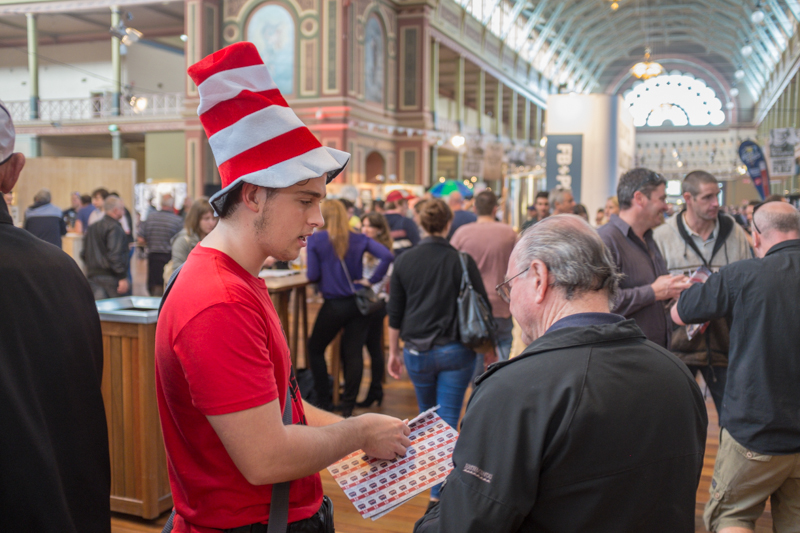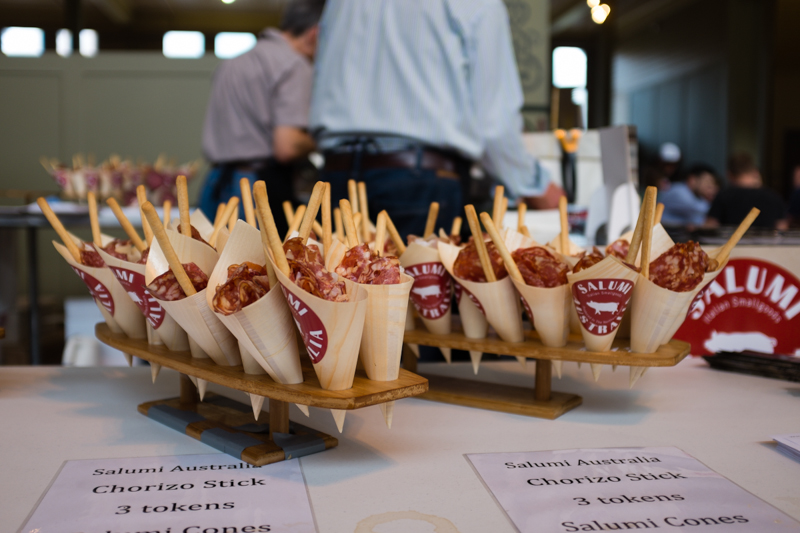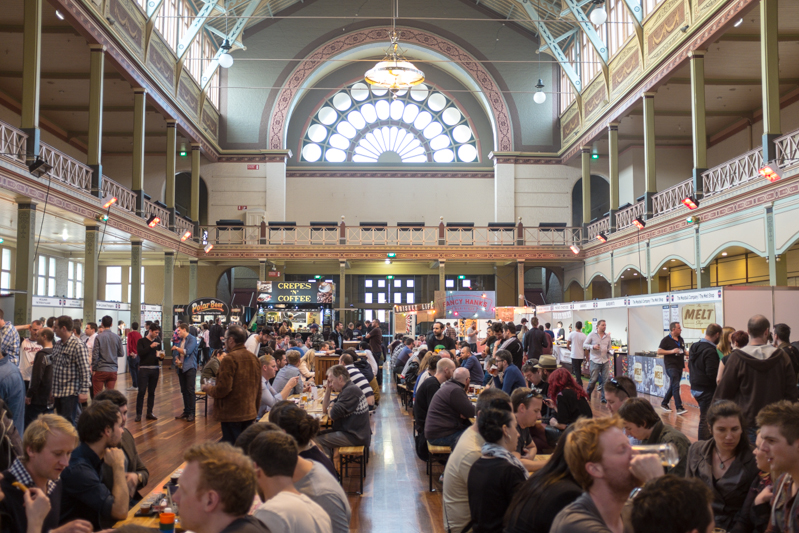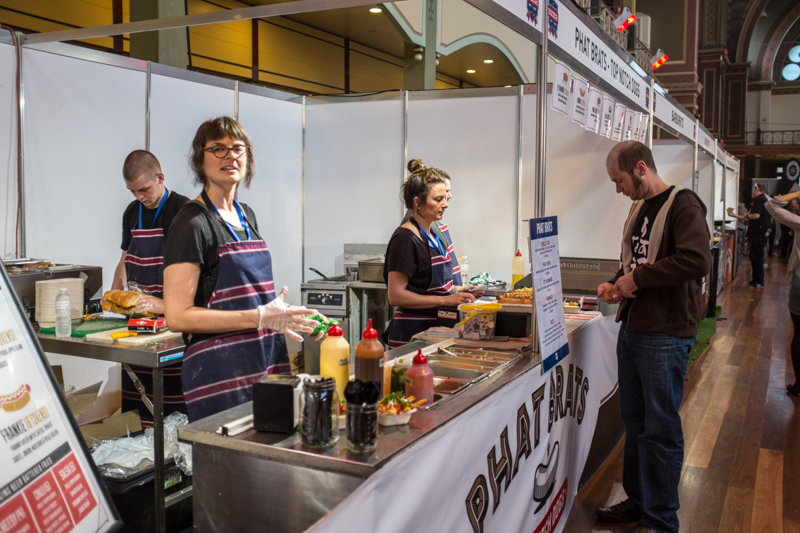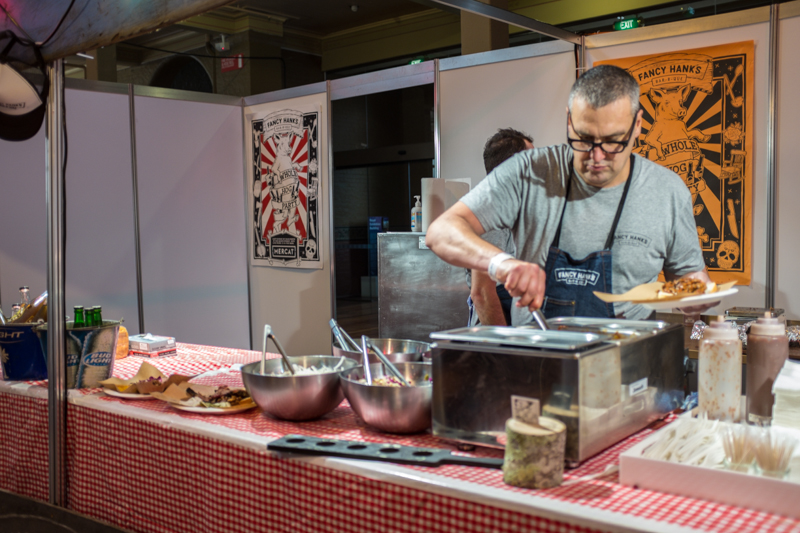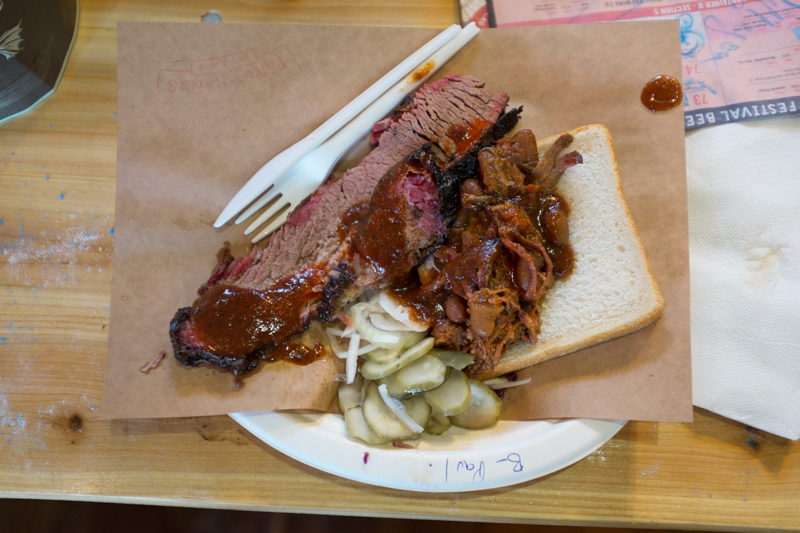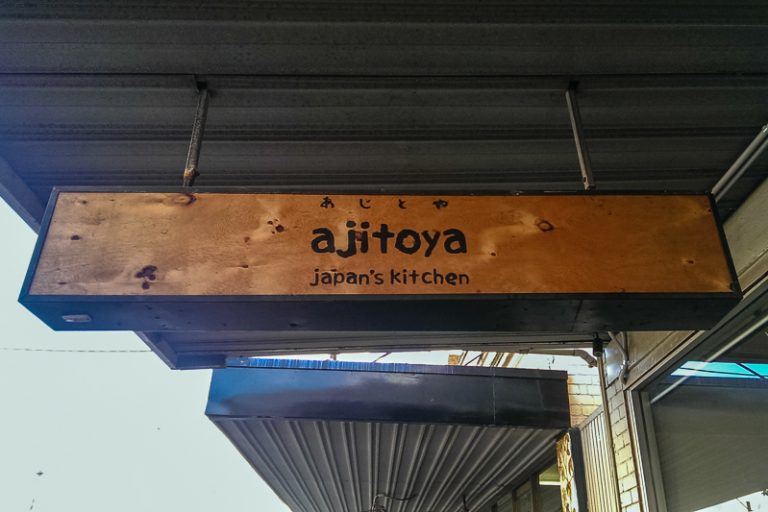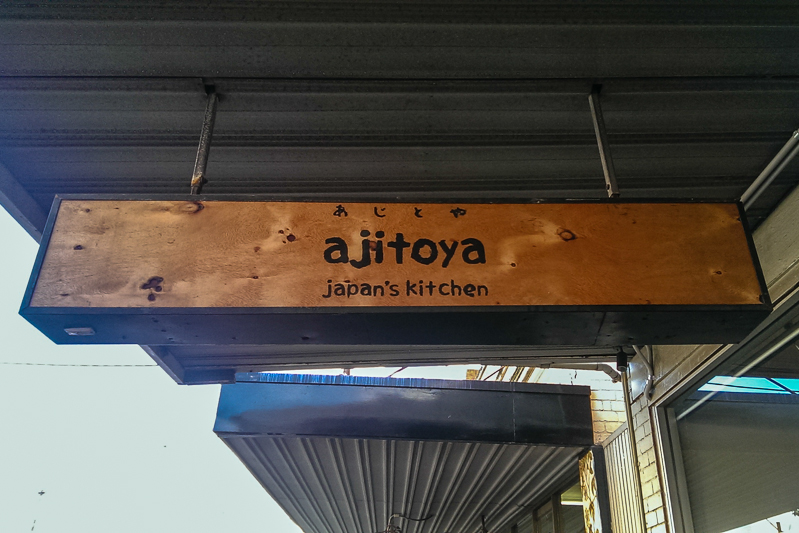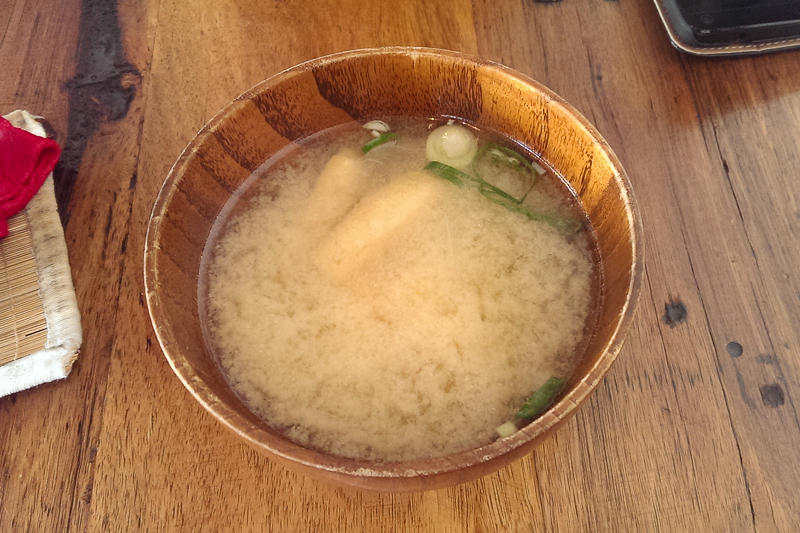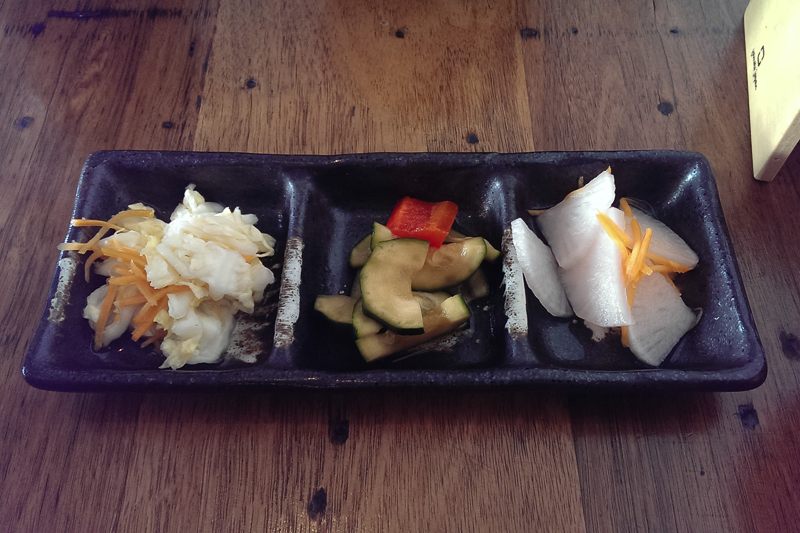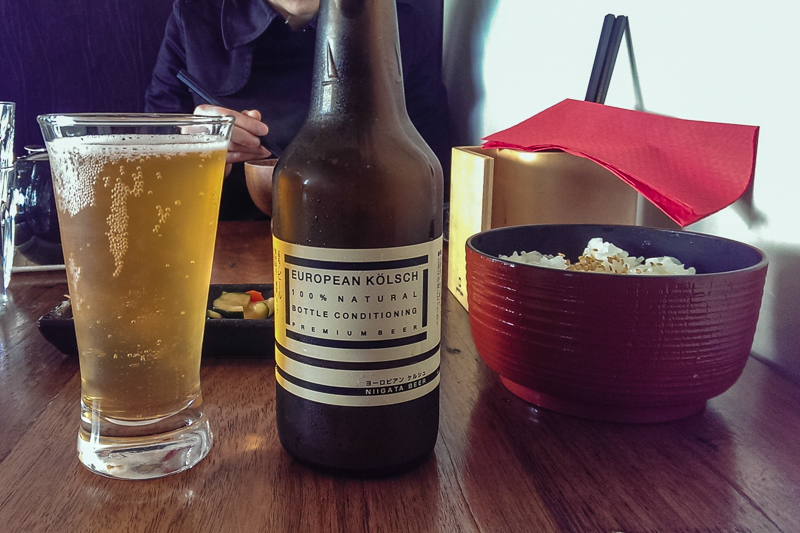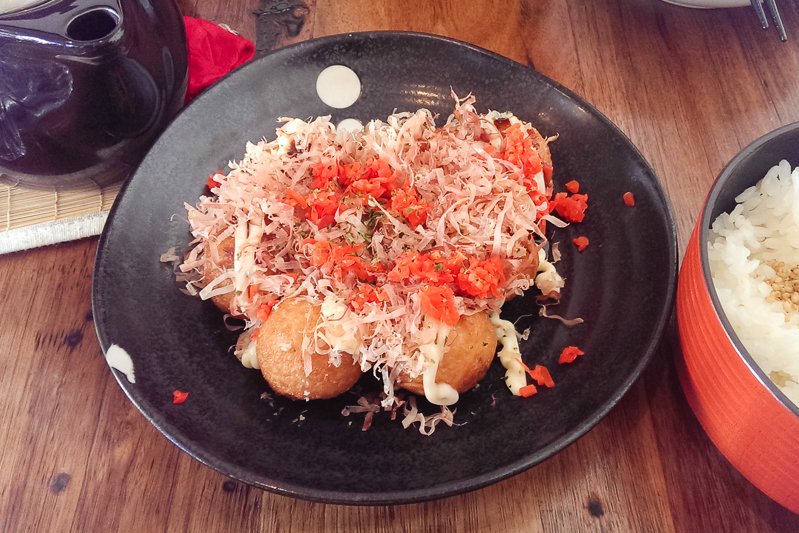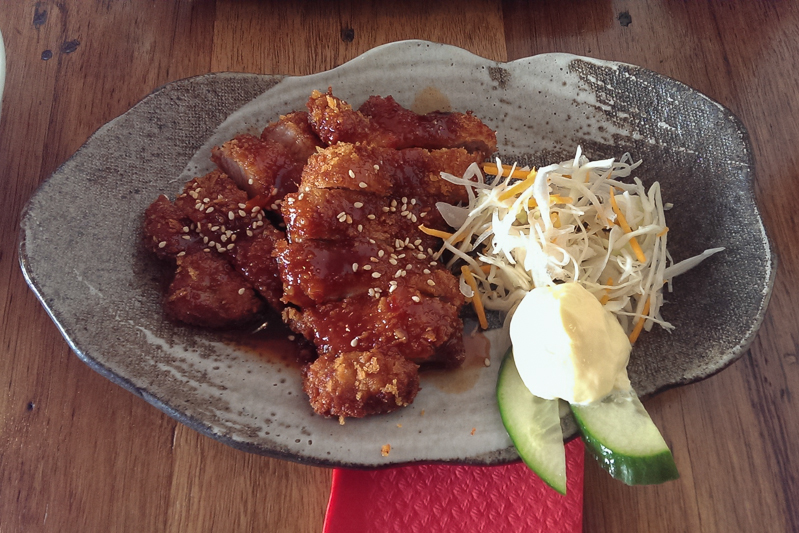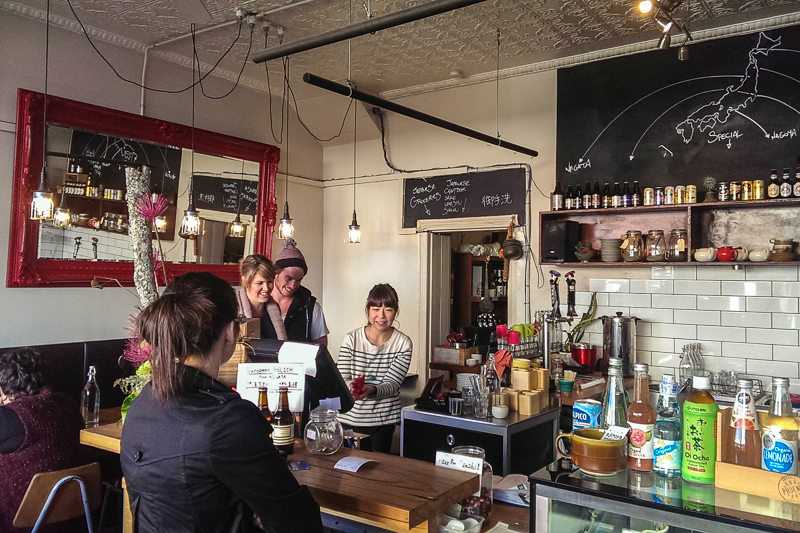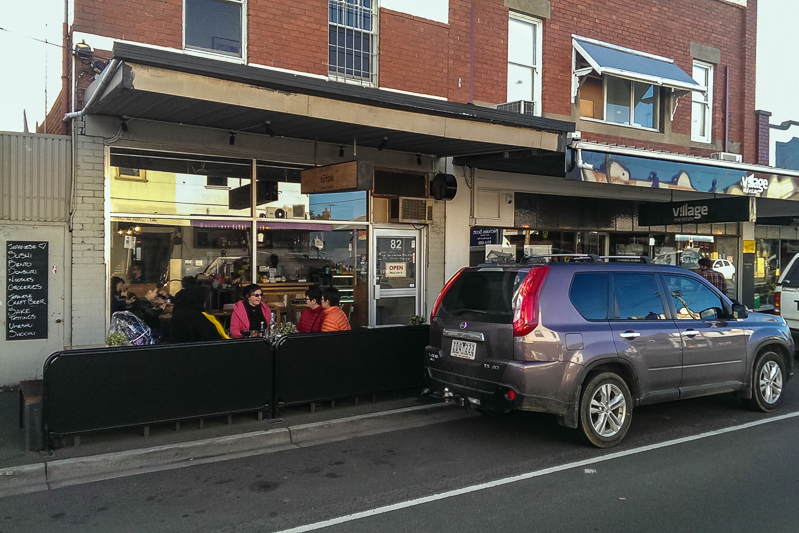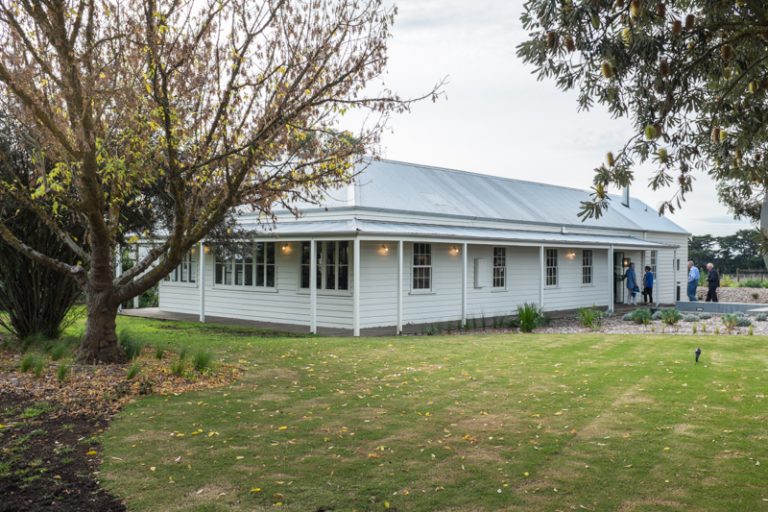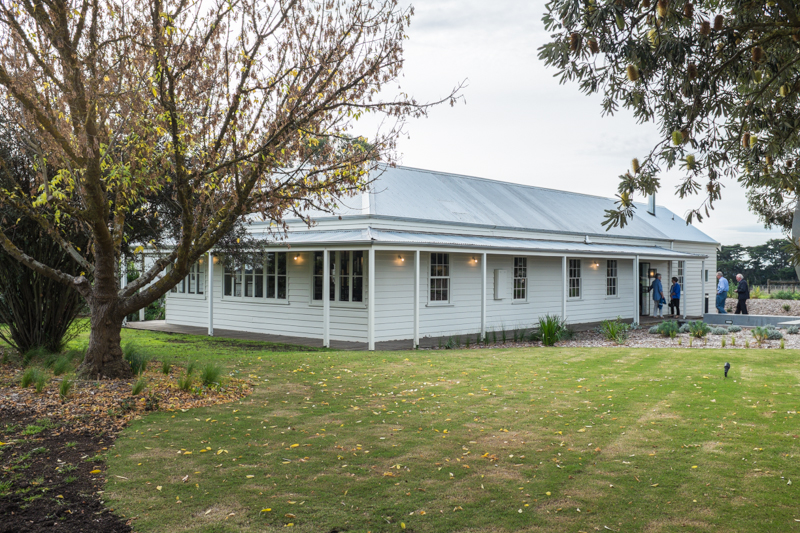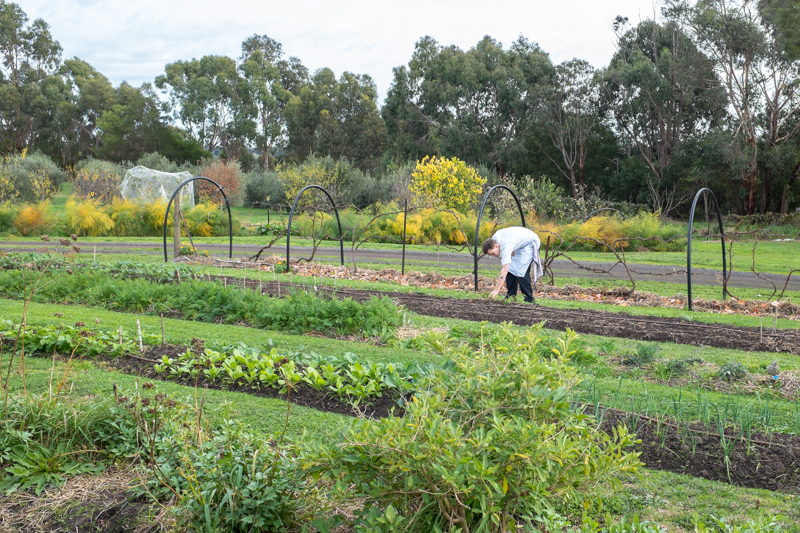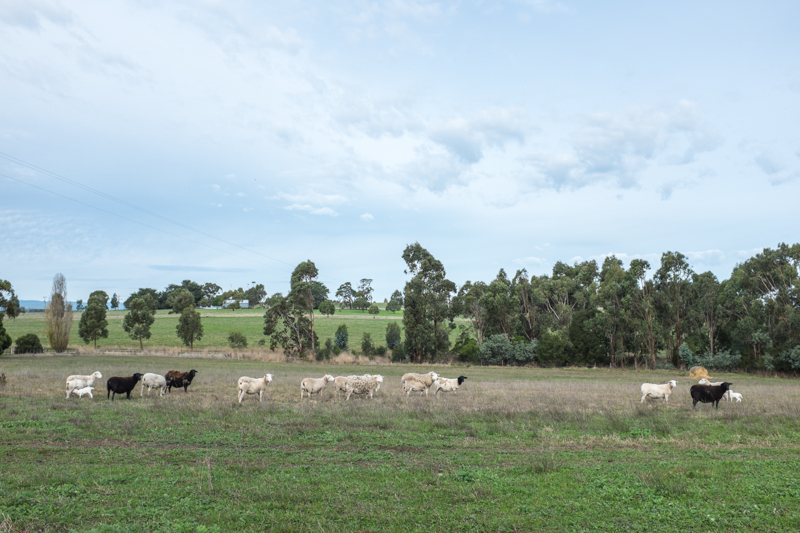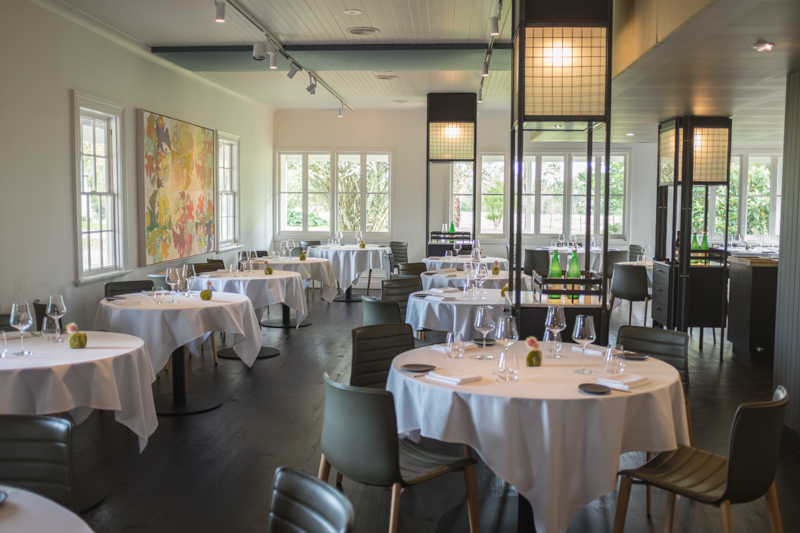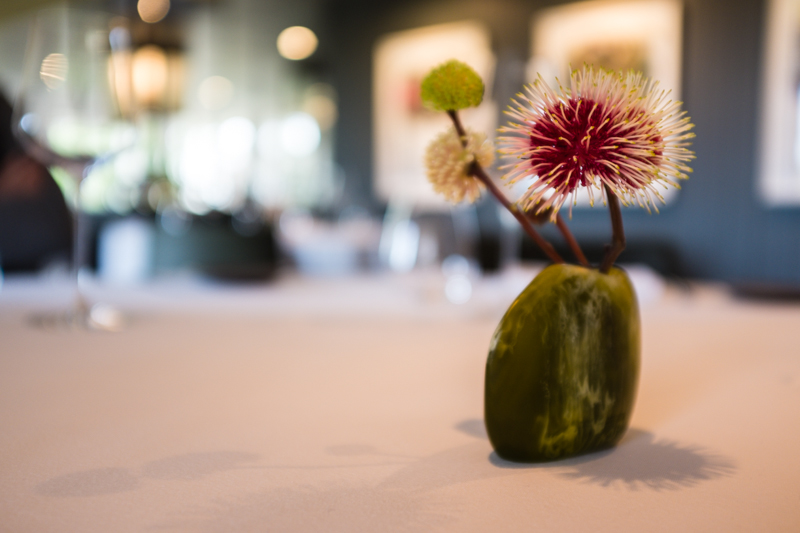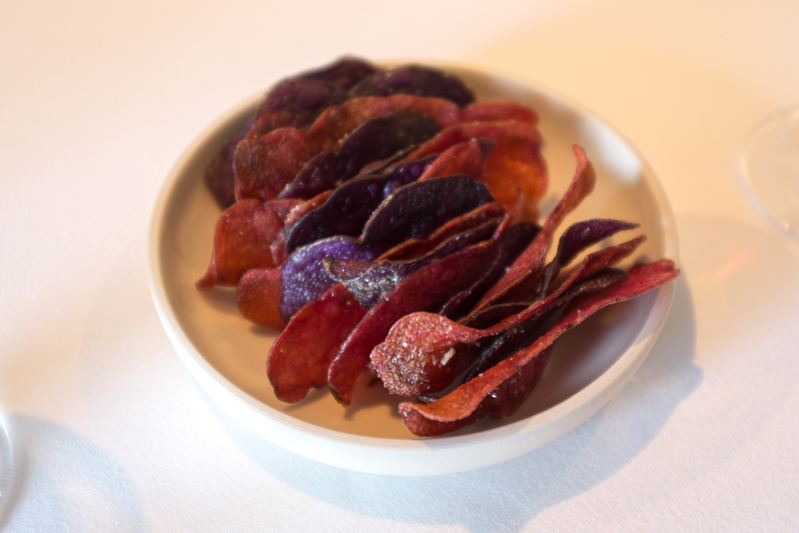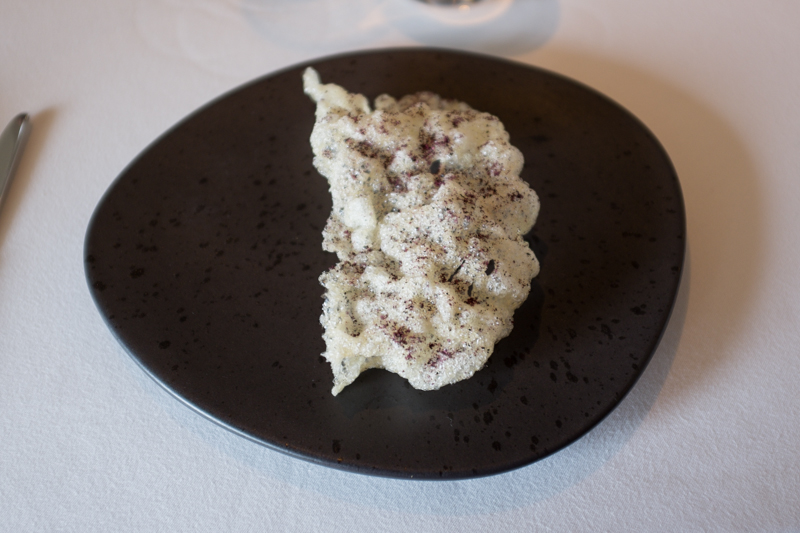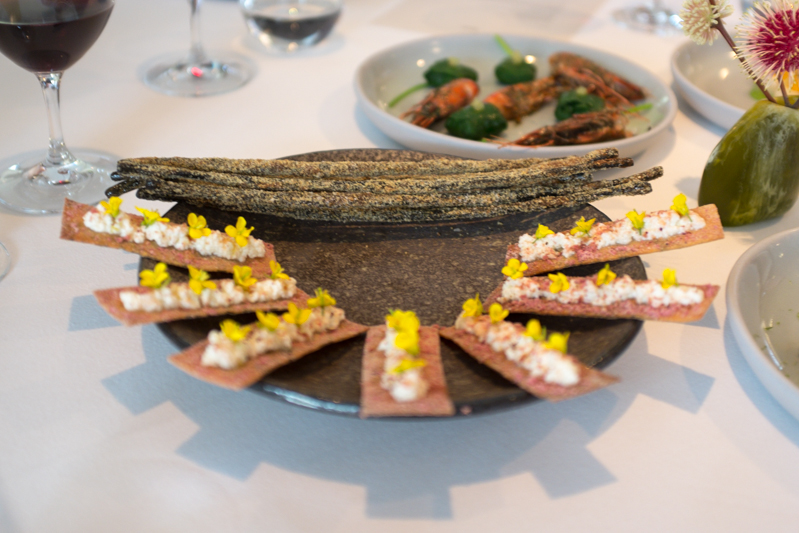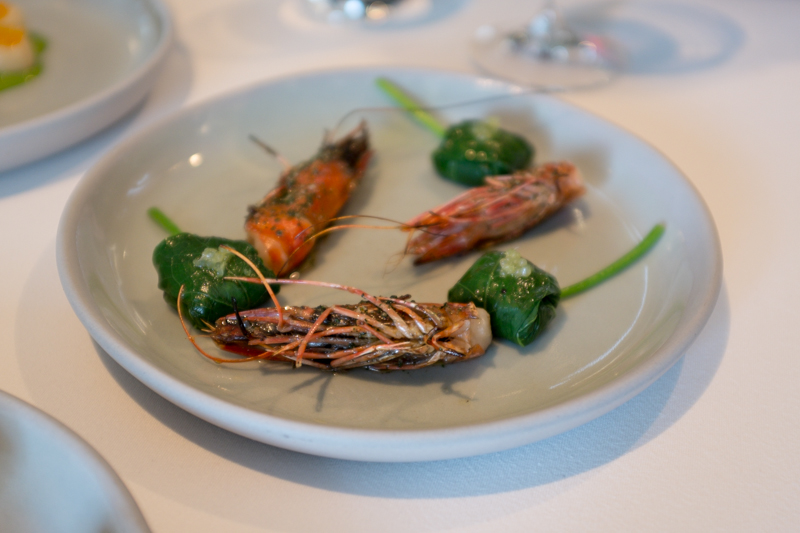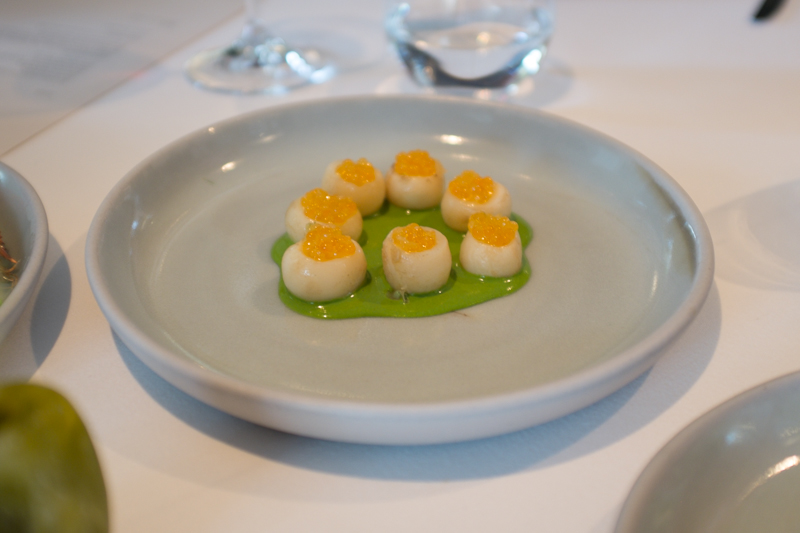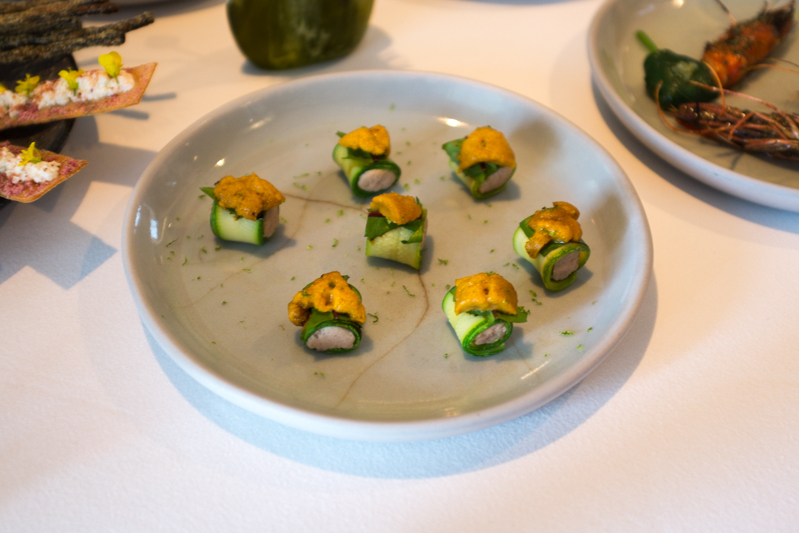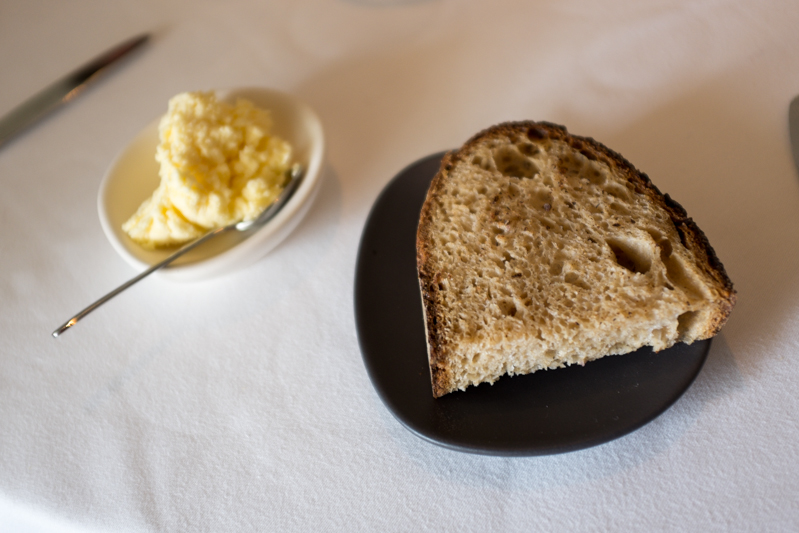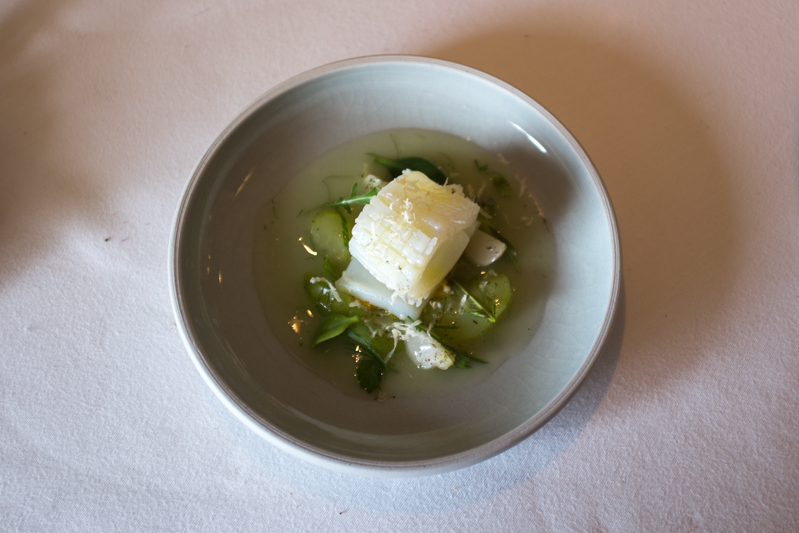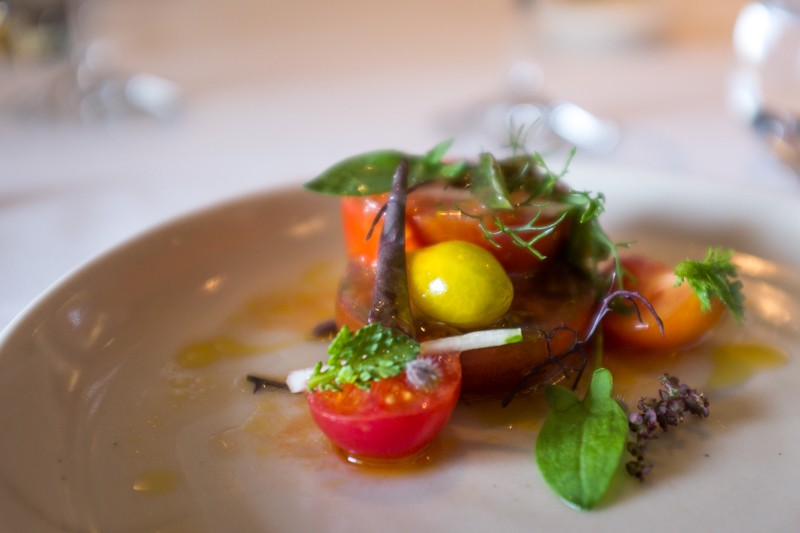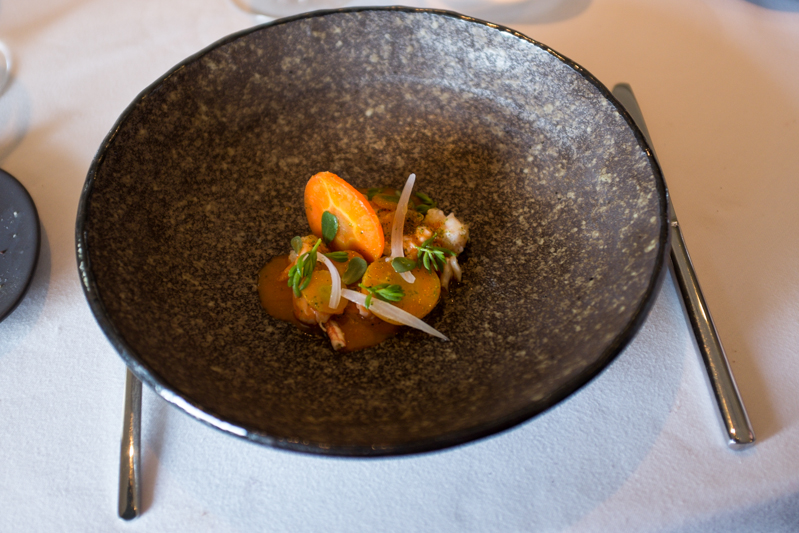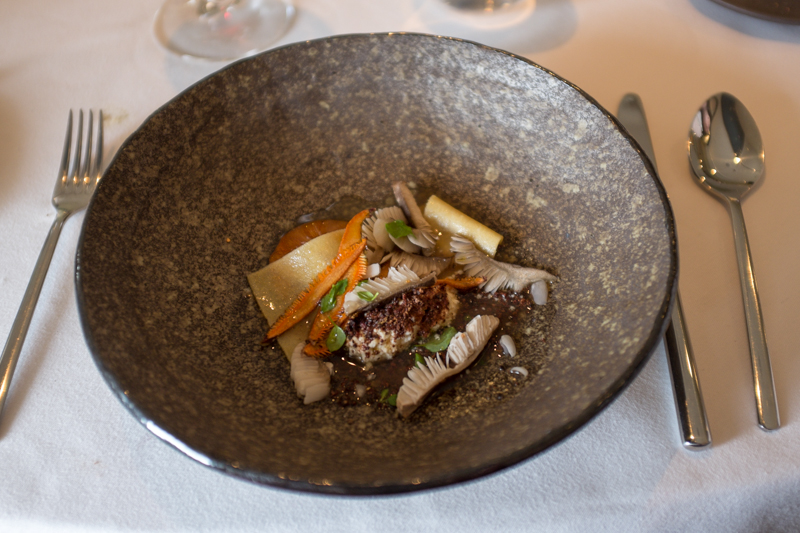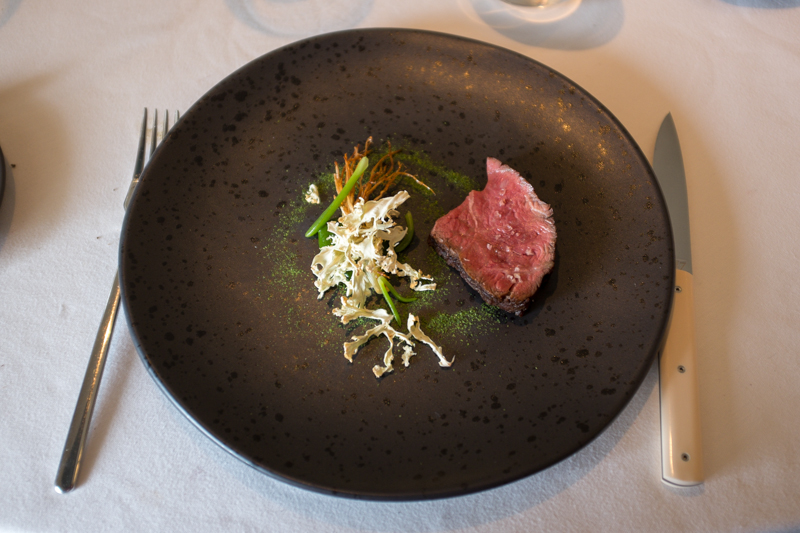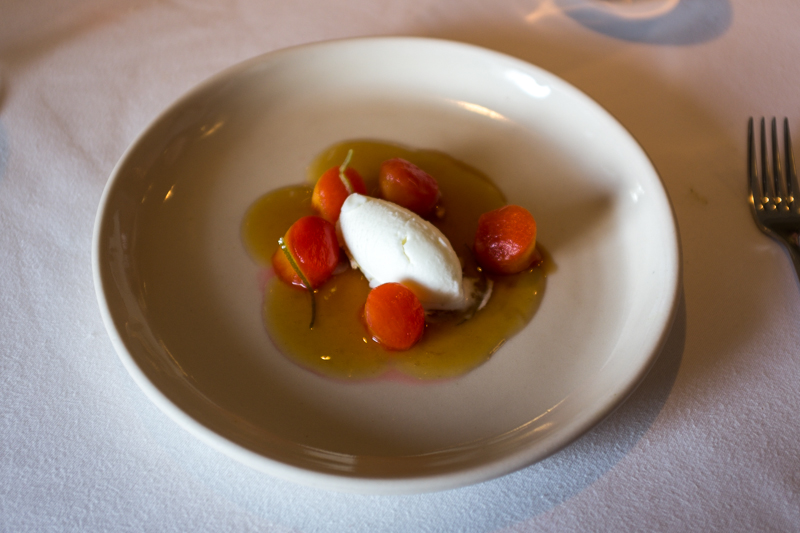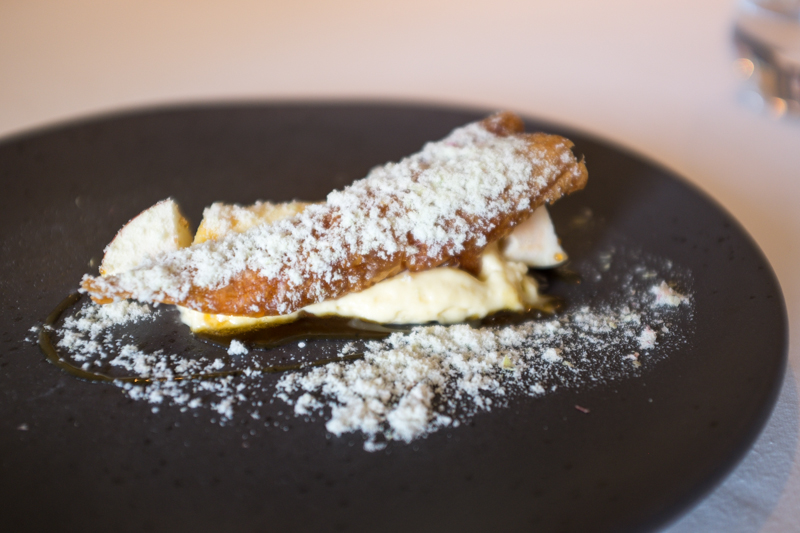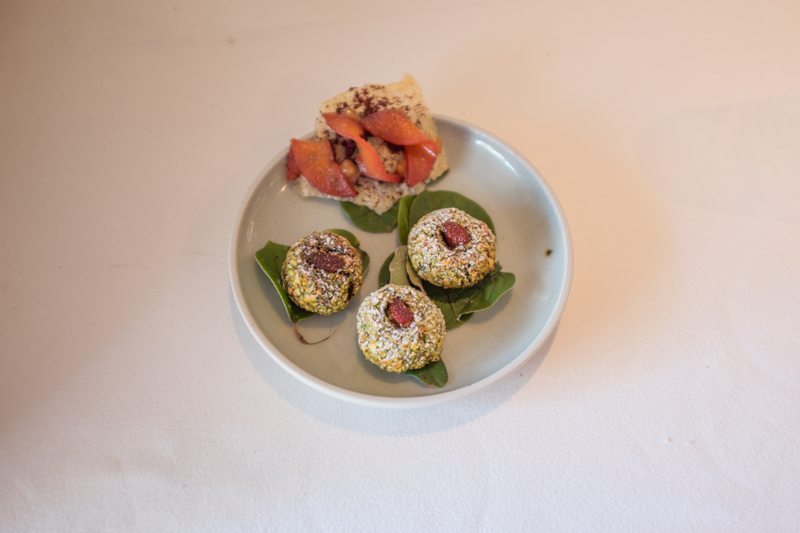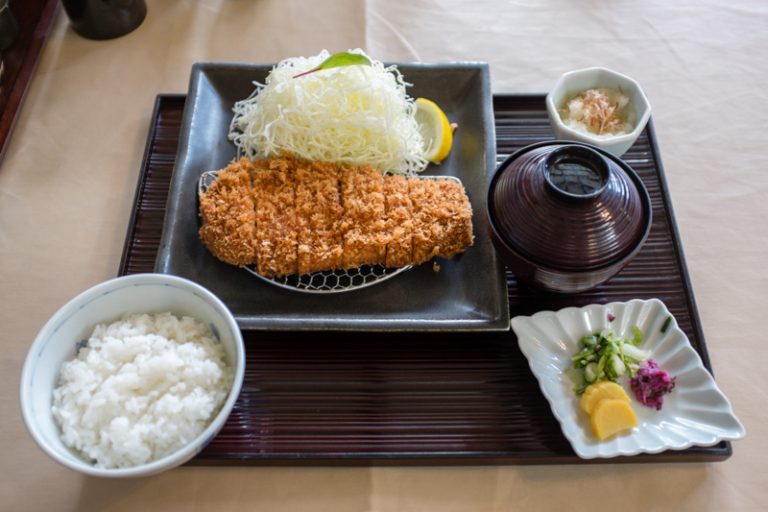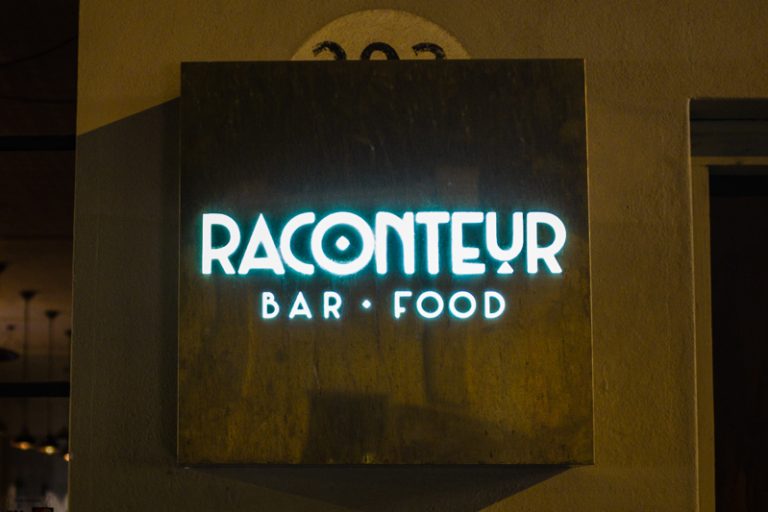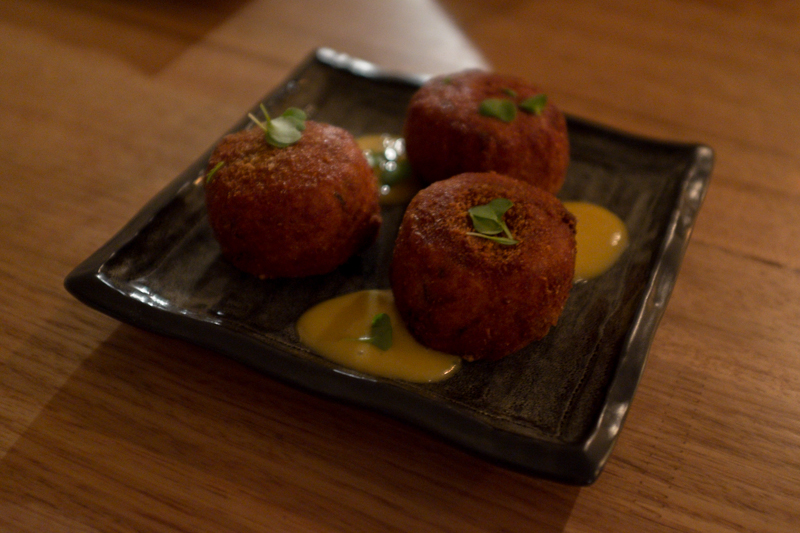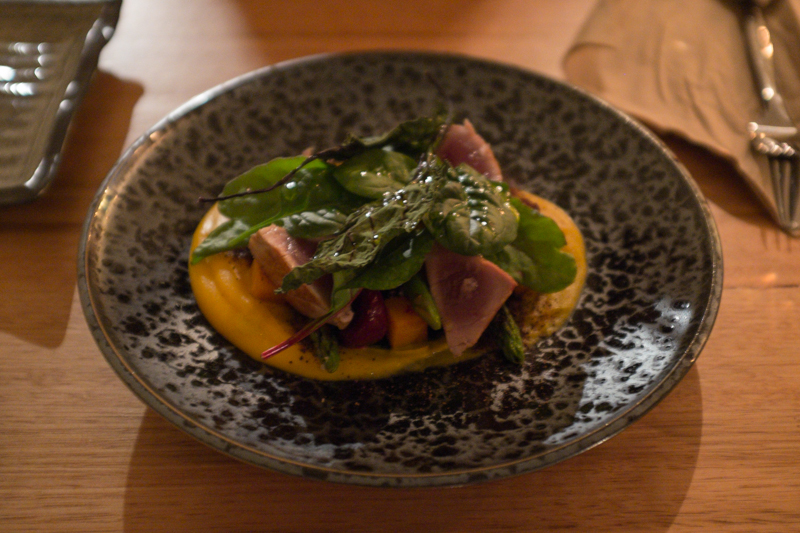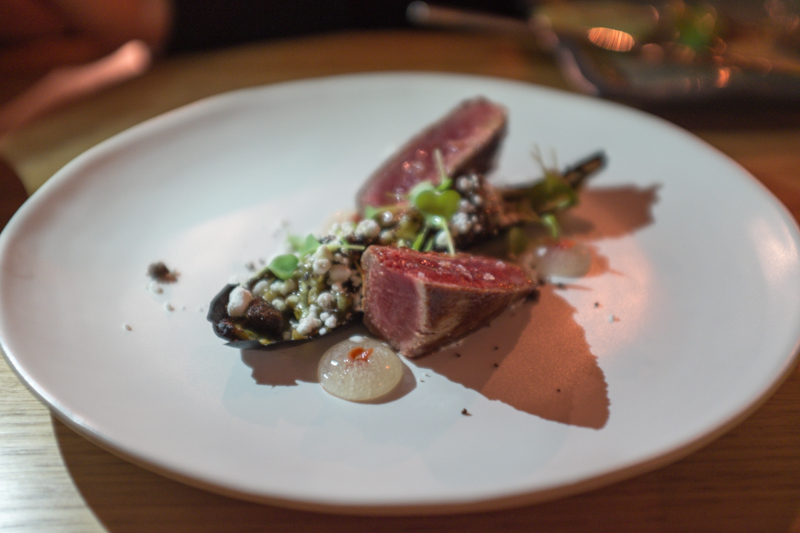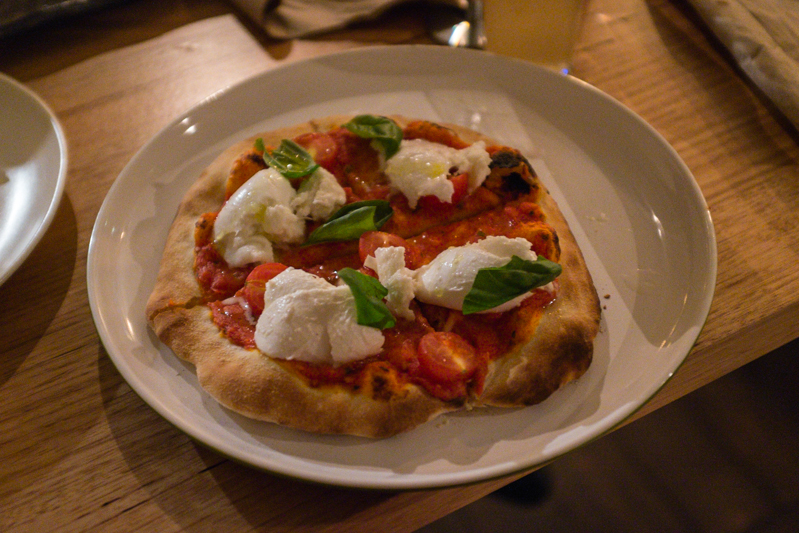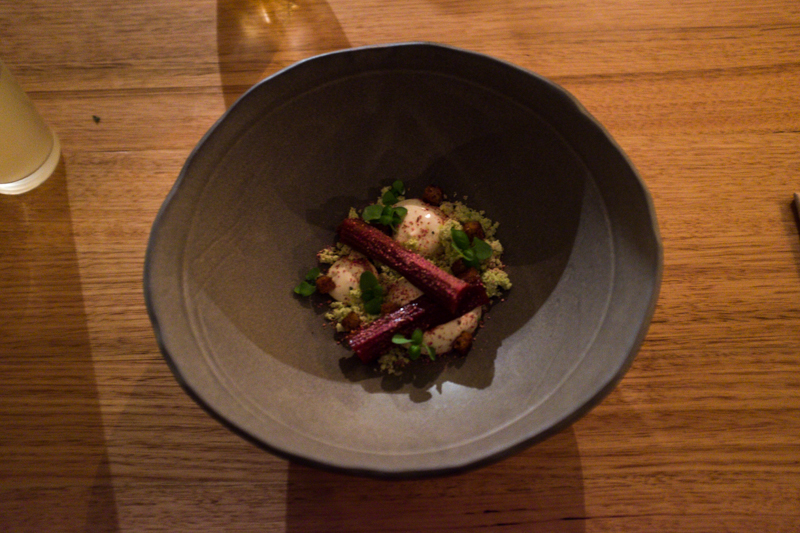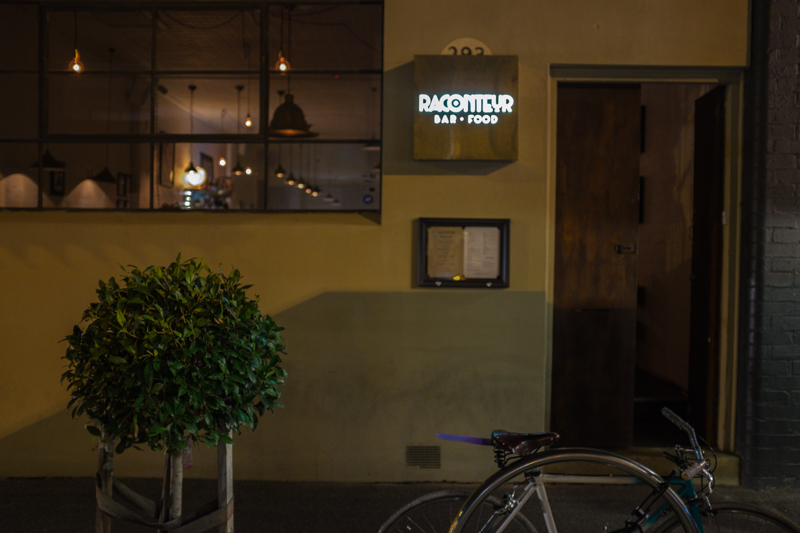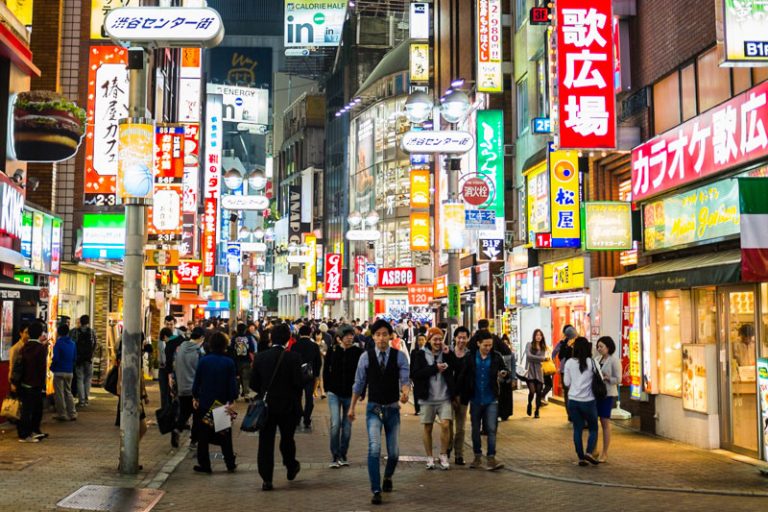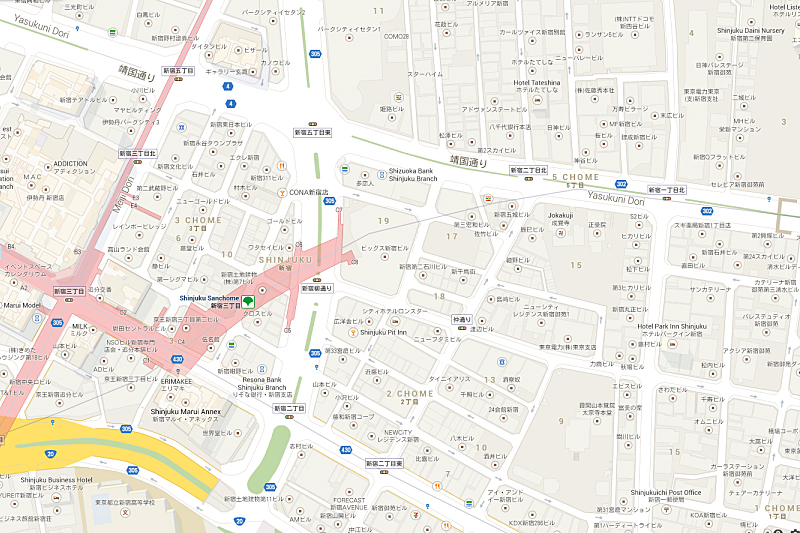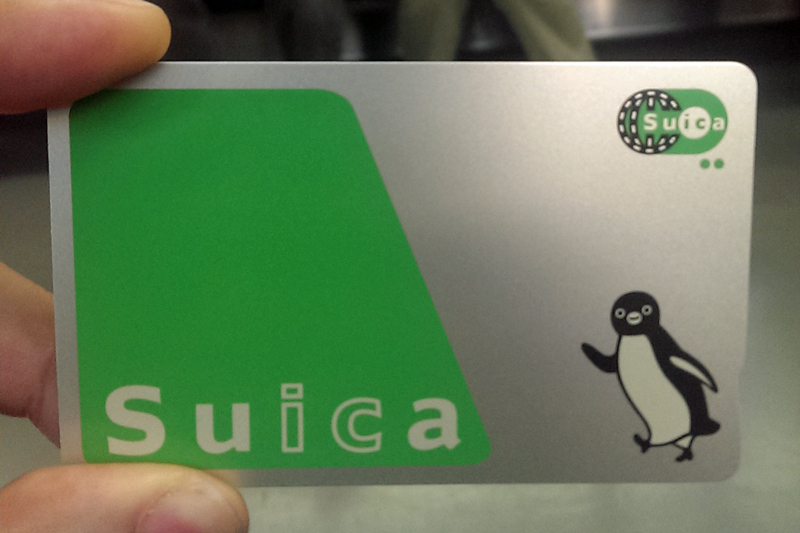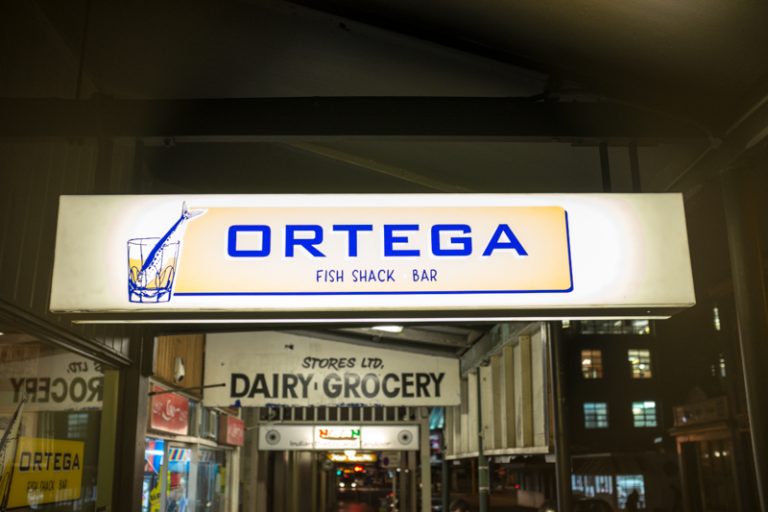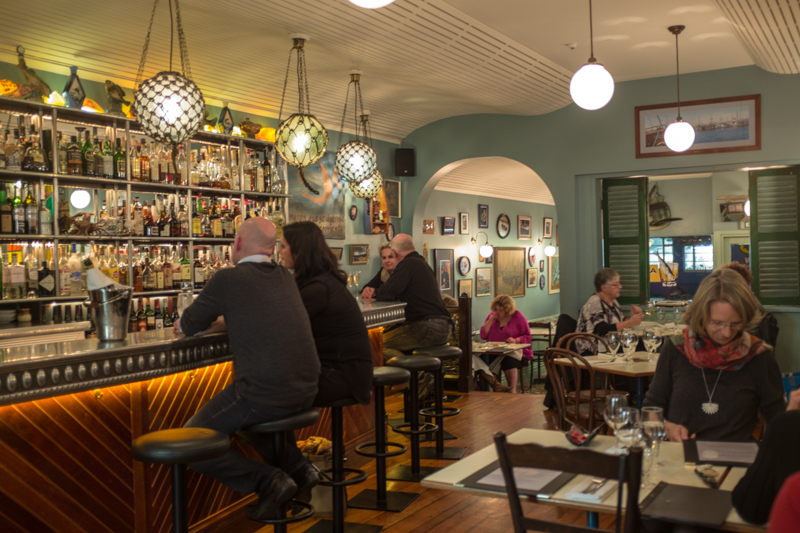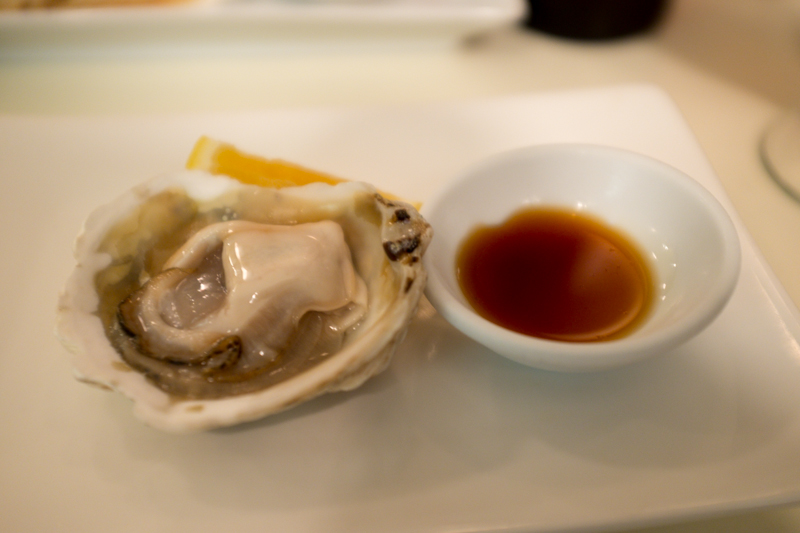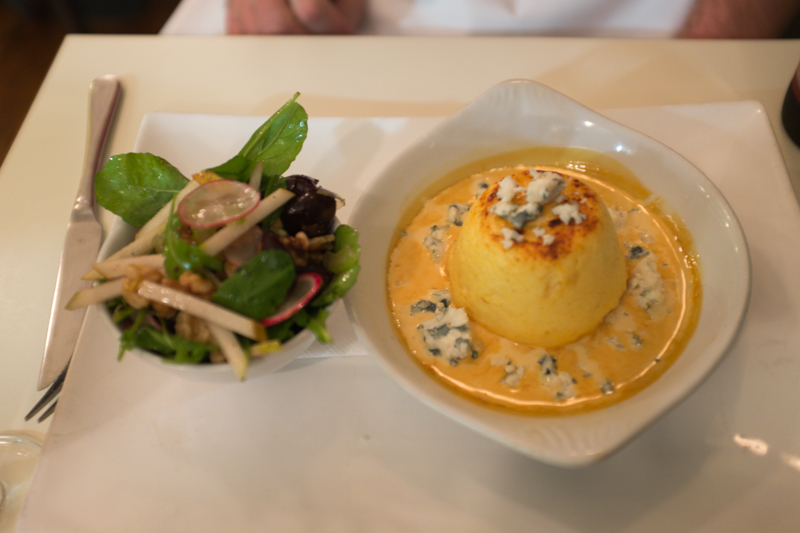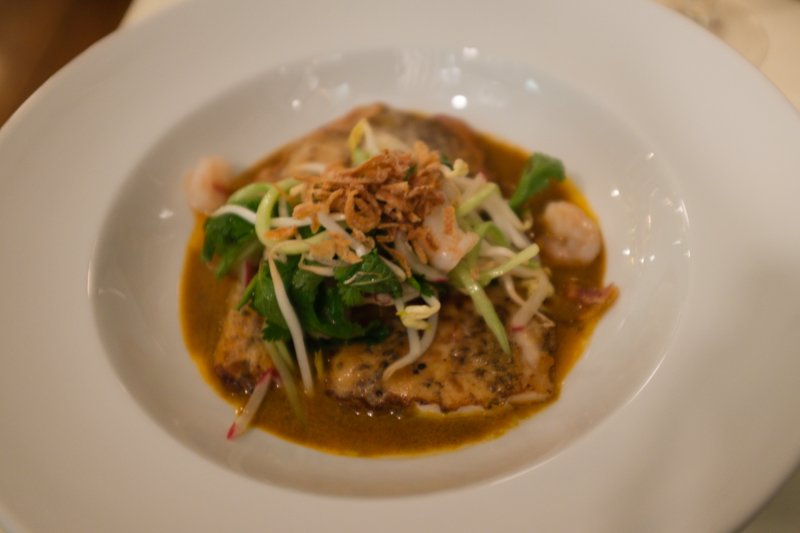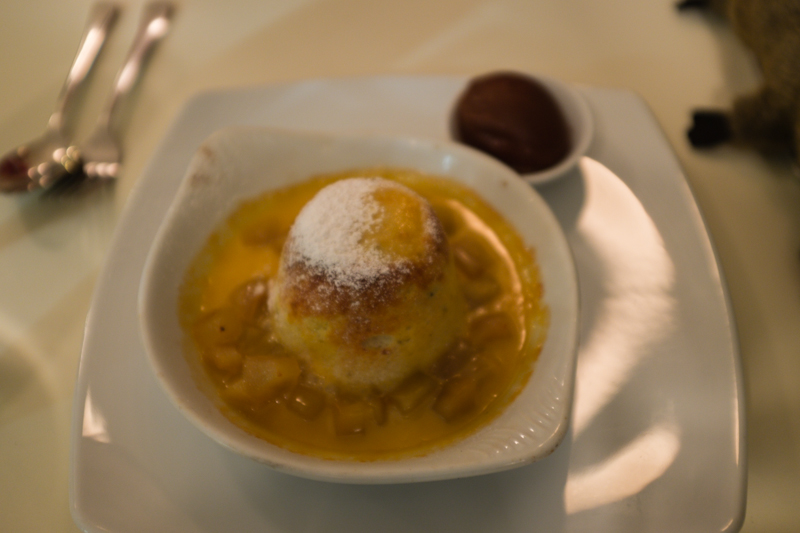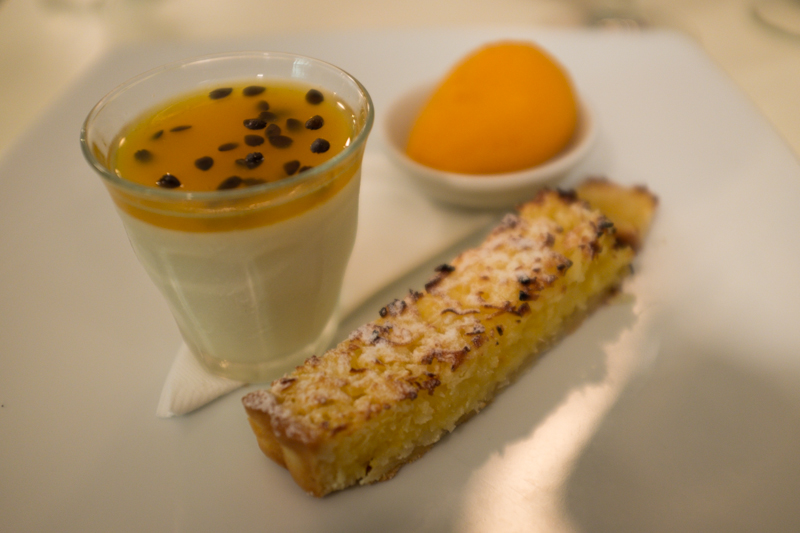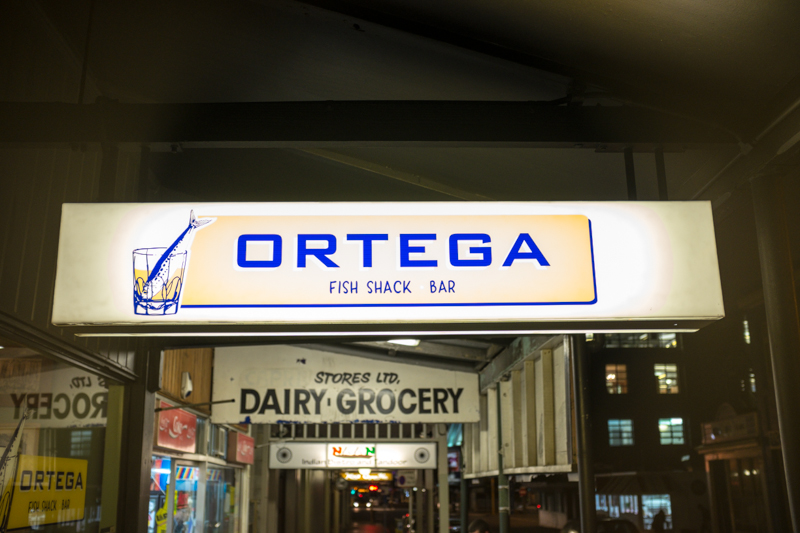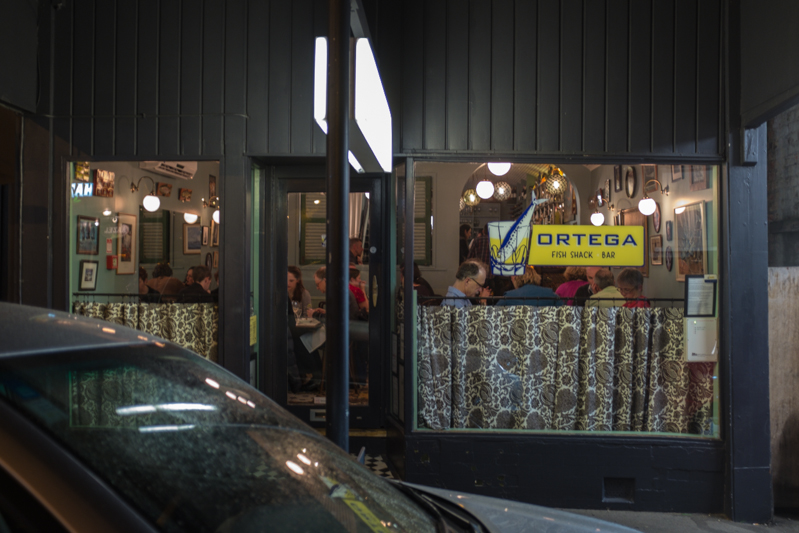Japanese is one of my favourite cuisines and, over the years, I have eaten a lot of Japanese food. Before visiting Japan I thought that I had quite a good grasp on what Japanese food was about but it only took a few days in the country to realise that what I knew barely scratched the surface. Some of what I did know about Japanese food was confirmed and other things that I thought I knew were turned upside down. In Tokyo, my final stop on this adventure I had an opportunity to see how things in the capital differed from the previous 2 cities I had visited, Osaka and Kyoto.
I knew that there would be a lot of great food to eat in Tokyo. I’d done my research before arriving and had an extensive list of places to eat at around the city. What I wasn’t prepared for was the sheer volume of places that were offering something to eat and drink. Many of the food places in Tokyo are small, and seat no more than a handful of people and they are found everywhere. On main streets, down alleyways, in basements, and several stories up in the high rise buildings that are all over the city somebody is cooking something. Sometimes these places are easy to spot and sometimes they are not – the phrase “follow your nose” is apt. Indeed, by the end of my time in the city I’d barely visited any of the recommendations that were on my list – my wife and I kept on stumbling across places that looked and smelled amazing, and were full of locals – always a good sign. If I have one piece of advice to impart to you for when you visit Tokyo it would be to bring a list of places to visit, make sure you check out a few of the places that really interest you but don’t let the list restrict what you try. Tokyo is a massive city and often you’ll find yourself in a part of town that’s not near any recommendations on your list. Additionally it can be hard to find certain places as streets are more often than not not in English (both physical street signs and in Google Maps), the venues don’t have English names and aren’t always on the main street level. Use the guide as exactly that – a guide. Follow your nose and don’t be afraid to make your own discoveries.
Food standards in Tokyo are high, from the quality of the food and its presentation to the customer service that patrons receive. I’ve never been anywhere in the world where standards are so high on such a consistent basis. Perhaps because of this, Tokyo has a reputation as being an expensive city but another thing that surprised me was how affordable the food and drinks in Tokyo, and indeed in Japan, were. Of course the food in Tokyo isn’t as cheap as that in other Asian countries such as Vietnam and Thailand but when compared against similar highly developed, global centres it fares well.
While there are definite regional differences that are apparent when travelling through Japan, there are also a lot of similarities. I’m going to try and keep any repetition between my Tokyo, Osaka and Kyoto food guides to a minimum and will be cross-referencing to the other guides in here as I put them up. Rather than listing the places that I ate at, I think a better way of setting things out is by the type of food – a brief introduction to the dish, followed by some recommendations based on my experiences followed by recommendations that were on my list that I never got around to visiting.
Ramen
Ramen is a dish that consists of wheat noodles in a soy and/or miso flavoured meat or fish stock soup along with a variety of toppings such as sliced pork, sliced kamaboko (fish cake roll), nori (dried seaweed), spring onions, and a poached egg.
It’s a popular meal all over Japan and each region has its own version, with the broth being what differs the most. The 4 main types of ramen are:
- Shio (salt) has a pale, clear broth that is seasoned with a lot of salt, with chicken, vegetables, fish and seaweed being most commonly used. Noodles of varying thickness are generally used.
- Tonkotsu (pork bone) has a thick, cloudy broth. Pork bones are left to simmer for several hours which allows the fat and collagen to break down and give the broth a strong pork flavour and a silky texture. Thin noodles are used.
- Shōyu (soy sauce) has a clear brown vegetable and/or chicken based broth that is heavily flavoured with soy sauce. Generally curly noodles or thin noodles are used.
- Miso contains, unsurprisingly lots of miso which is added to an oily chicken/fish broth (and sometimes pork bones) which gives it a thick consistency and nutty, tangy flavour. Thick, curly noodles are typically used.
Along with the above 4 types of ramen, many cooks mix and match flavours and techniques to make their own versions of the dish. In Tokyo, a common type of ramen is one that uses a light, soy flavoured chicken broth and thin, curly noodles.
Sanyu-ken
My wife and I stumbled across this place while we were looking for something else. Turn left when you exit Ikenoue station (on the Keio Inokashira line) and about a 30 second walk up you’ll find this small spot. The friendly old man waving below in this “suburban” restaurant shuffled down a spot so my wife and I could squeeze in. As was the case on several occasions during our time in Japan, we were presented with a menu that had no English on it and where no English was spoken. The place was quite busy and had a decent turnover and many people seemed to be ordering the same thing so we decided to join in on that.
It was amazing to watch the cook at work. He had two huge pots – one containing stock and the other containing noodles. As well as keeping an eye on those he was also preparing and cooking various dishes and the same time.
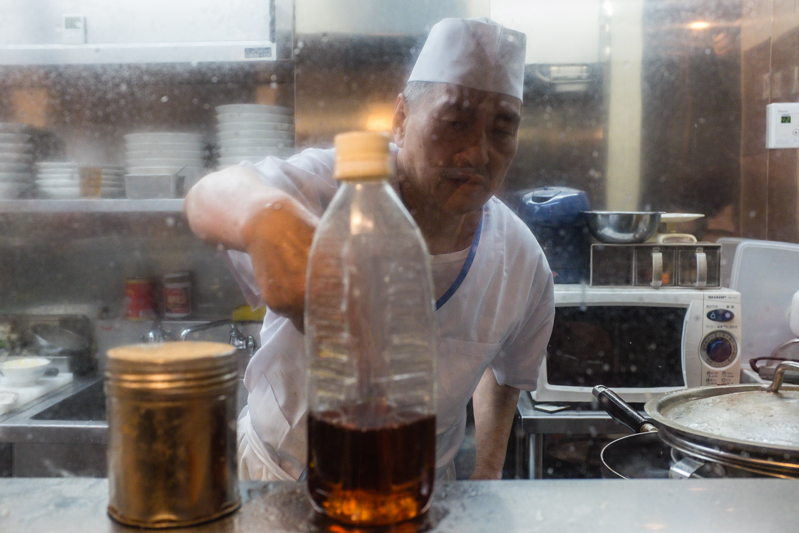
A short while later, out came our food. A big bowl of Tokyo style Shōyu ramen along with bamboo rice and some veg with a dumpling. It was all very tasty.
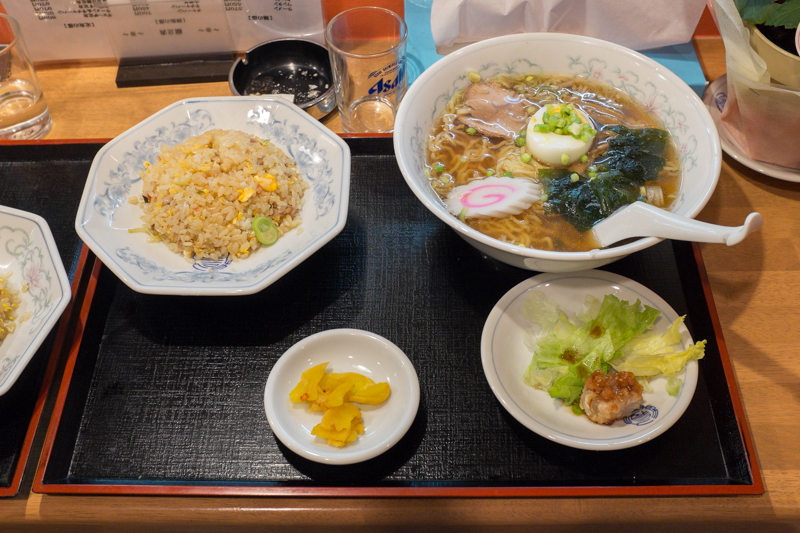
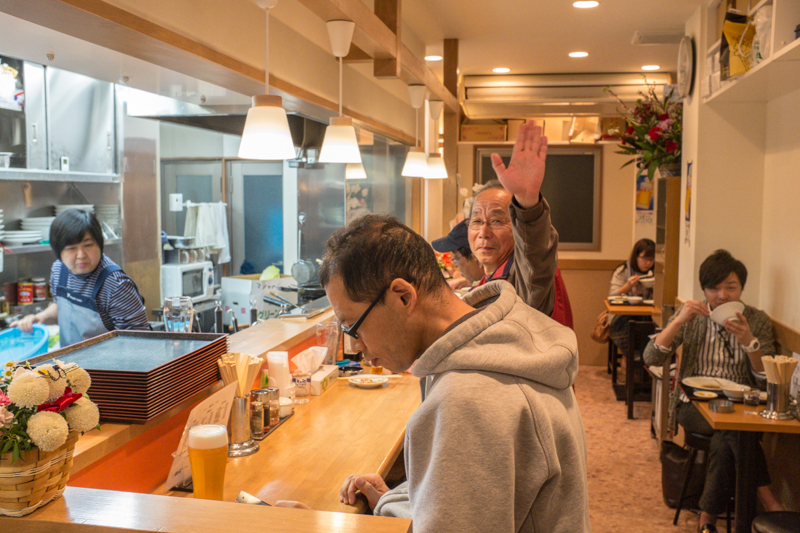
The photo below shows why I have no idea what this place was actually called.
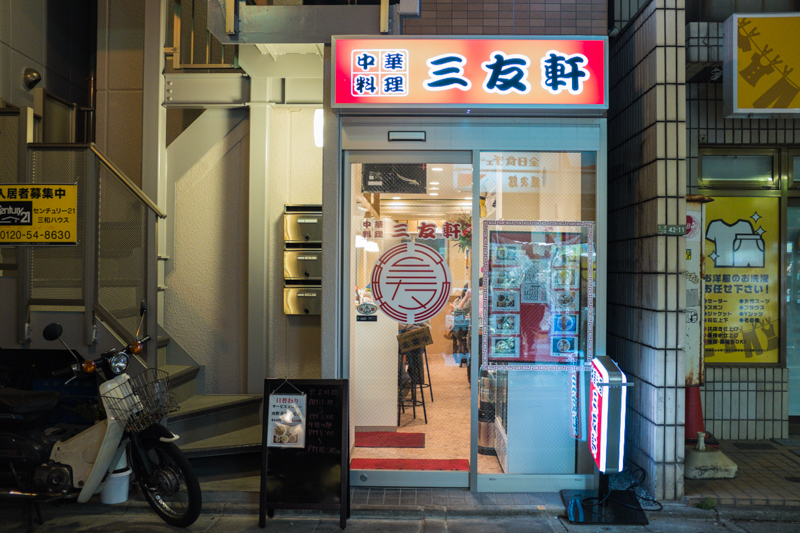
Sanyu-ken
2 Chome-42-11 Daizawa
Setagaya-ku, Tōkyō-to
Santouka
Santouka has a variety of Hokkaido style ramen dishes on the menu, however we went with the one that was recommended to us by a friend of a friend with the precursor “make sure you order nothing else. Once you eat this, you will know what ramen means”. With a recommendation like that, we ordered the Tokusen Toroniku Ramen (Choice Pork Ramen) and waited while watching one of the cooks pop up every now and then to check on all of the broths (the ramen itself was being cooked downstairs in another open kitchen).
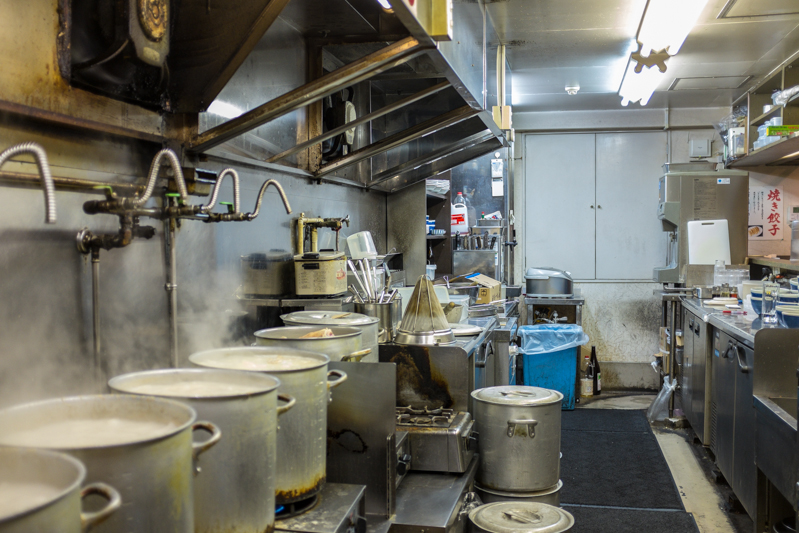
Unlike most ramen that I have eaten, this one came out with the noodles and broth in one bowl and the toppings in another. It only took one bite for me to decide that this was the best ramen that I had ever eaten. The pork cheek was extremely rich, flavoursome and tender and the fat was silky and melted in my mouth.
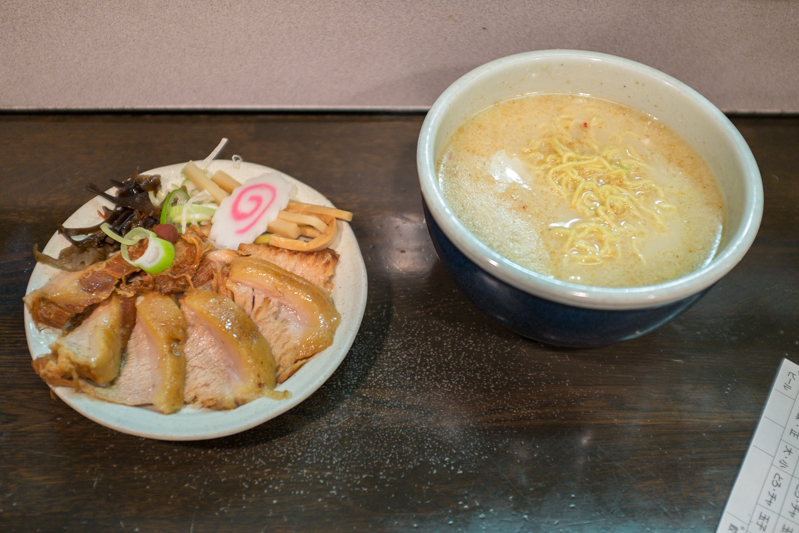
Santouka is actually a chain that has some locations overseas as well as in Japan. One thing came up several times during my research before this trip and that was confirmed from my own experiences was that in Japan, unlike many other places in the world, there are some very good chains of restaurants. Despite expanding to several locations, many of these places manage to maintain their high level of quality and consistency. I can’t speak about the other branches of Santouka, but the ramen at the Shibuya branch was outstanding.
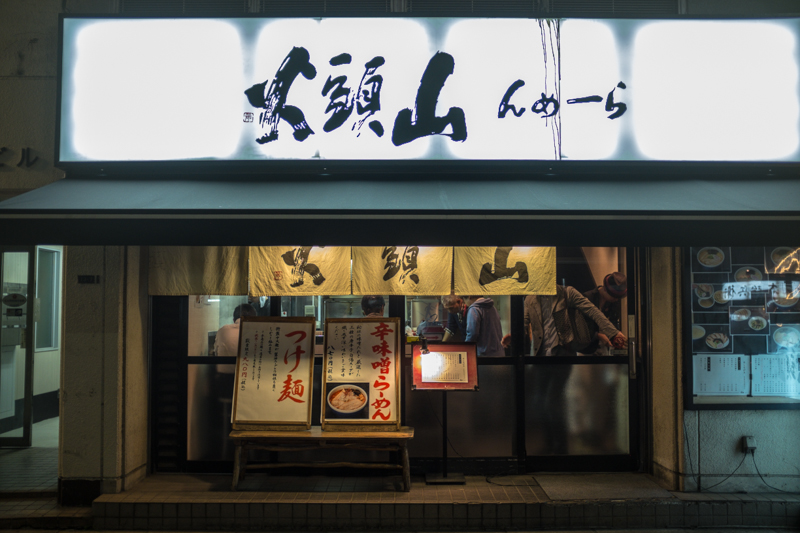
Santouka
Gojo Building, 1st Floor
3 Chome-13-7 Shibuya
Shibuya-ku, Tōkyō-to
Other Recommendations
I had planned to try several other styles of ramen while in Tokyo but simply ran out of time. If you manage to check any of them out let me know what you think.
Matador
1st Floor
2 Chome-4-17 Senjuazuma
Adachi-ku, Tōkyō-to
Tsuta
1 Chome-14-1 Sugamo
Toshima-ku, Tōkyō-to
En
21-21 Yokoyamachō
Hachiōji-shi, Tōkyō-to
Fuunji
2 Chome-14 Yoyogi
Shibuya-ku, Tōkyō-to
Izakaya
An Izakaya is a casual venue that serves food and drinks. Similar in style to spanish Tapas venues, there are a range of small dishes on the menu and you can either order as the night progresses or in one hit at the start. The food comes out as it’s cooked and the whole thing very informal. Generally there’s an open kitchen with seating at the bar/kitchen as well as standard tables.
It’s not hard to find Izakayas in Tokyo. There seems to be something down every back street and alleyway. This spot, for example, was down an alleyway next to an elevated train line just away from the main part of Akihabara.
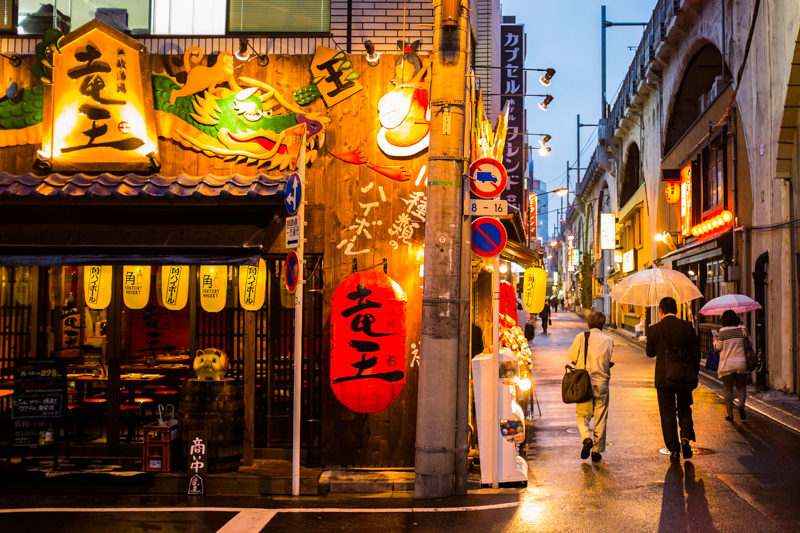
Beniton
My wife and I wanted to eat at Butcher Brothers (which I’ll talk about later on) but it was full so we went into this place which was nearby and full of people. The clientele was mostly salary men winding down with drinks and food after a long day at the office. The place was loud and vibrant and a little bit seedy. Research later confirmed that this part of Tokyo (Kanda) has historically been full of dive bars and some other seedy establishments but is undergoing a transformation as hot new restaurants and bars open up in the area. Walking around it was obvious that the area was a mix between the two.
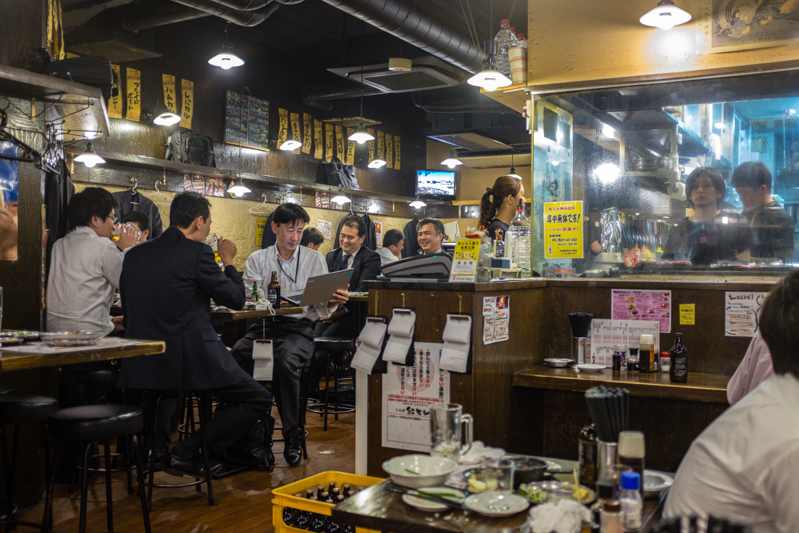
Befitting a dive bar/izakaya, the drinks and food were cheap and good. The menu was in Japanese however the girl who served us understood enough English that we were able to ask her to give us “whatever was popular”, and she proceeded to bring out a varied range of dishes. It was comfort food that really suited the vibe of the place and it all tasted great.
To start was cabbage with a spicy dipping sauce.
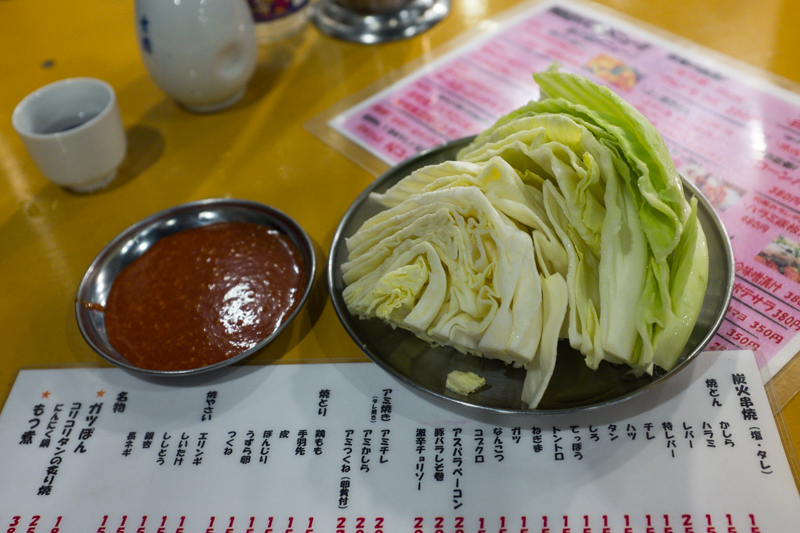
Next were beef skewers with mustard on the side.
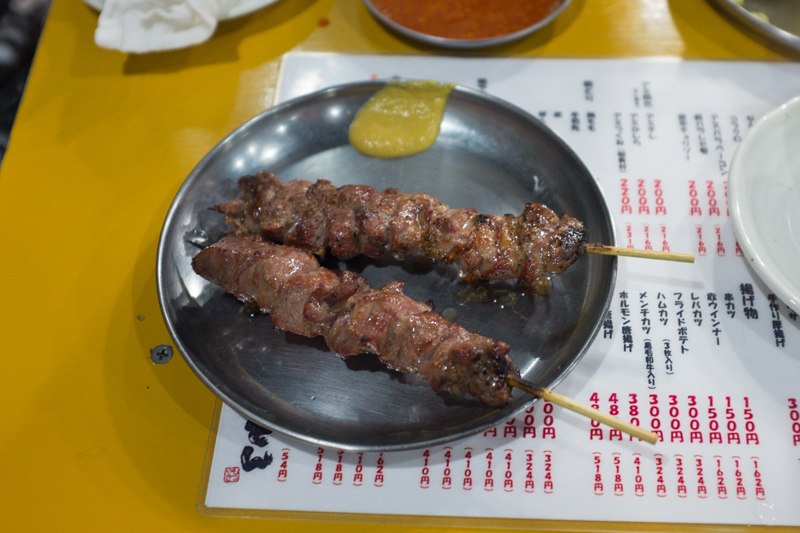
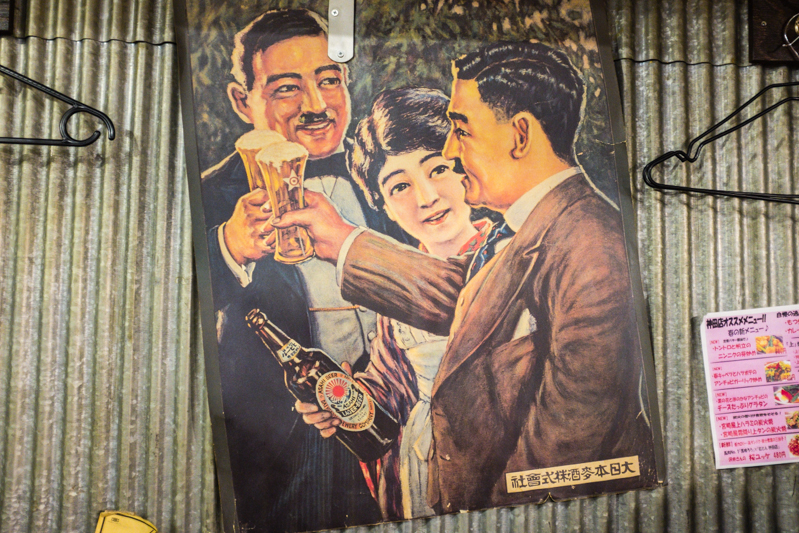
Next was sizzling pork dish with grated daikon.
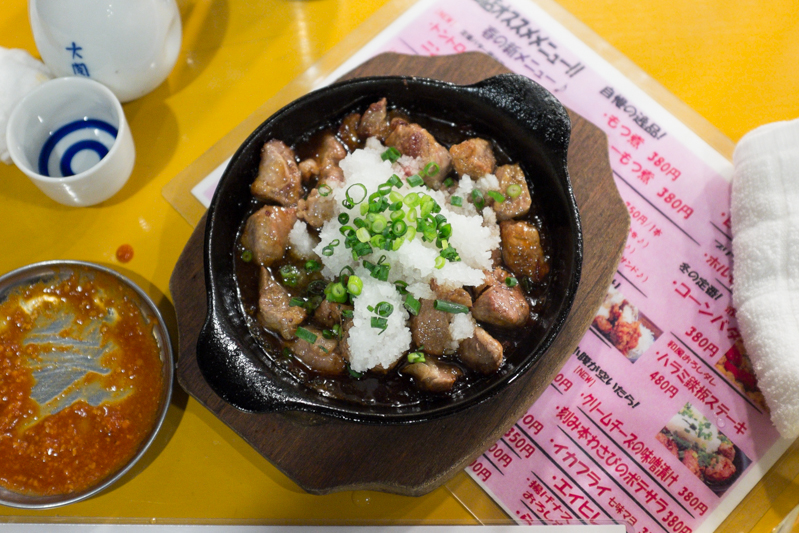
Finally was fried chicken with mayonnaise.
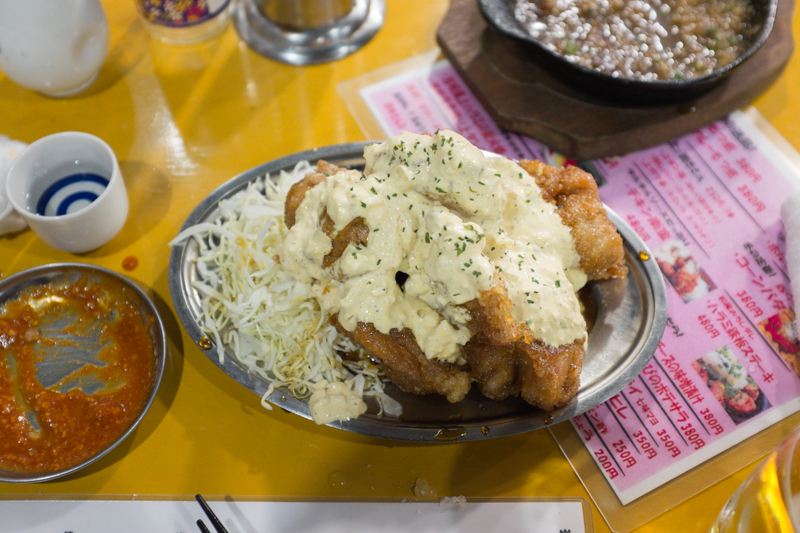
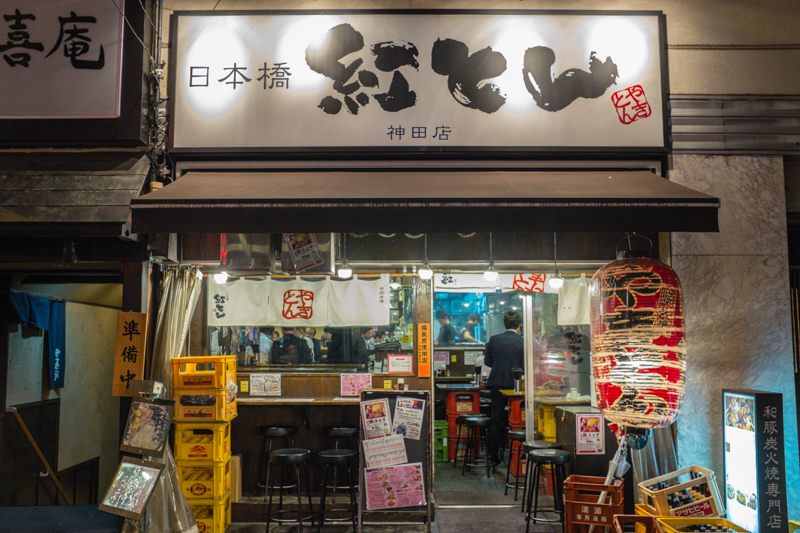
Beniton
4 Chome−2−17 Nihonbashimuromachi
Chūō-ku, Tōkyō-to
Omoide Yokochō
Omoide Yokochō (Memory Lane) as the authorities will have you call it or Shonben Yokochō (Piss Alley) as the locals actually call it, is a network of tiny alleyways packed full of extremely small Izakayas. It’s nickname comes from it’s original days as a post World War II eating area that sprung up in an ad-hoc manner that didn’t contain any toilets, the lack of those facilities resulting in people urinating wherever they could. The whole place actually burned down in the 1990s and was restored quite well – walk through it today and it feels like it’s been there forever. There are about 50 Izakayas in here, serving food that ranges from the conventional yakitori (grilled chicken on skewers) to the less conventional such as beating frog hearts. This part of Tokyo has a very unique vibe and is well worth checking out. Eating here is a truly unique experience.
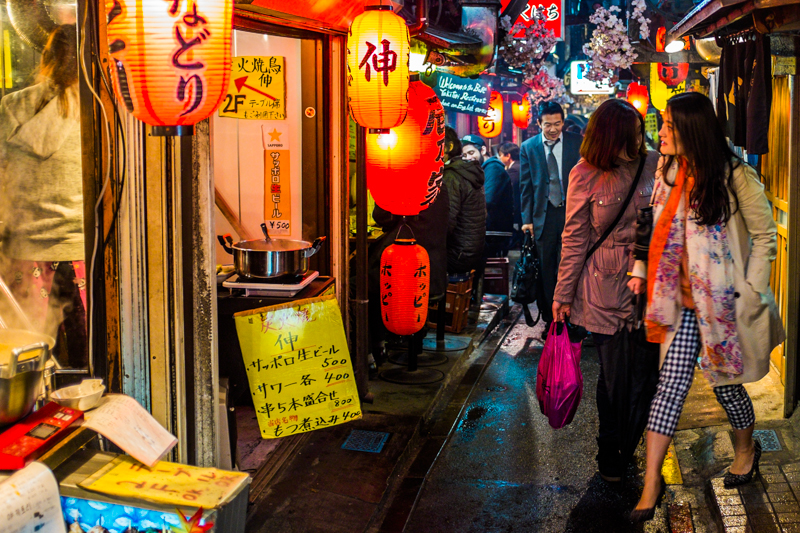
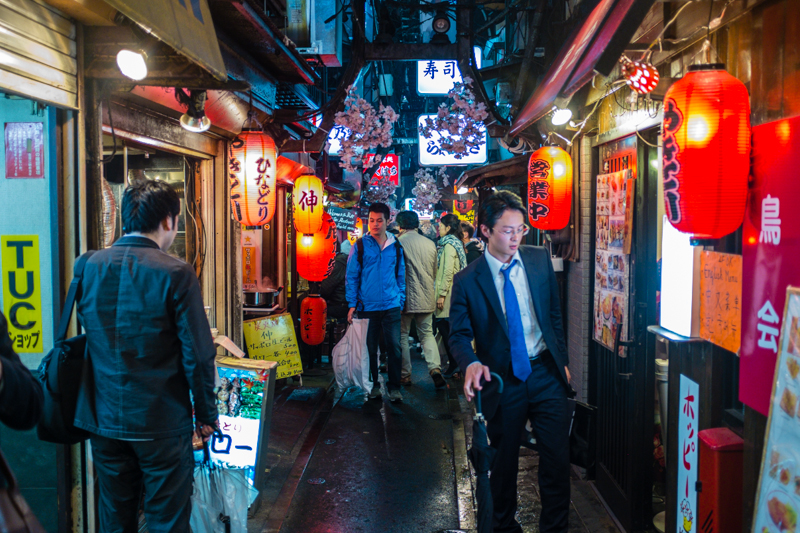
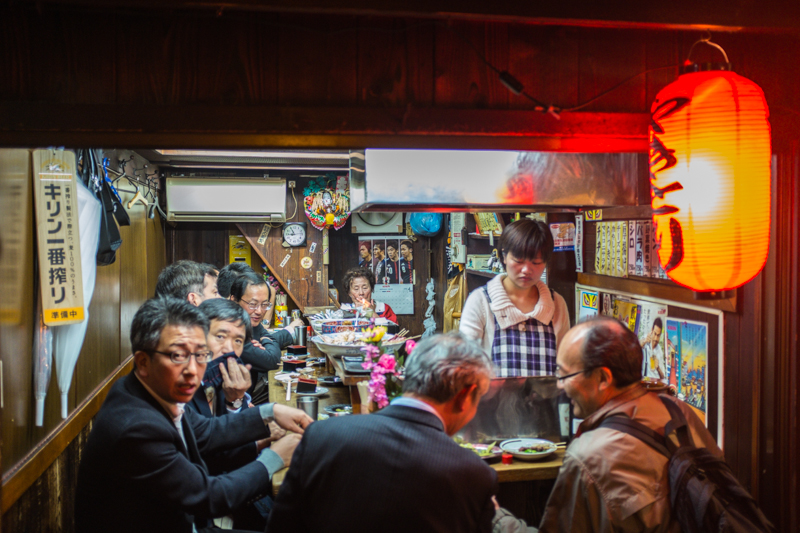
Every single one of the Izakayas was packed so my wife and I walked up and down a few times until we spotted a couple of seats in one place.
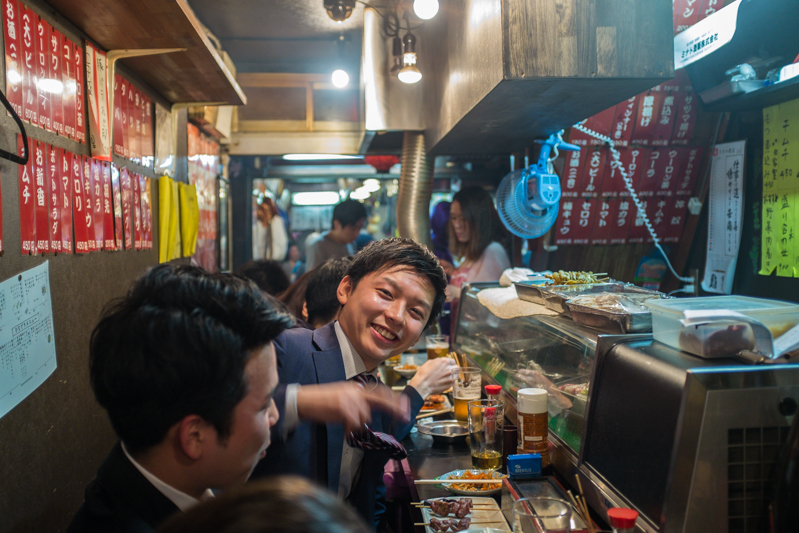
Pickles to being with.
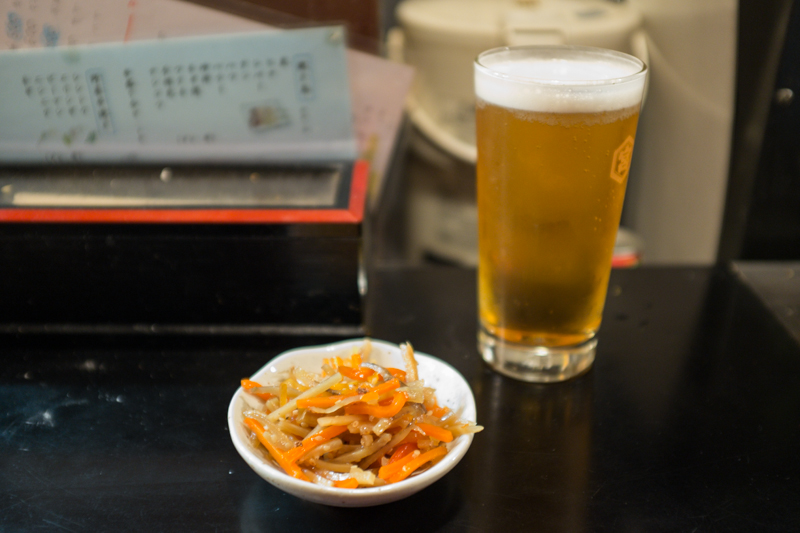
I got the “salt” option which was a variety of yakitori. From left to right: skin, thigh, liver, breast cartilage, breast, heart. Simple, fast and delicious, with not a bit of the chicken wasted.
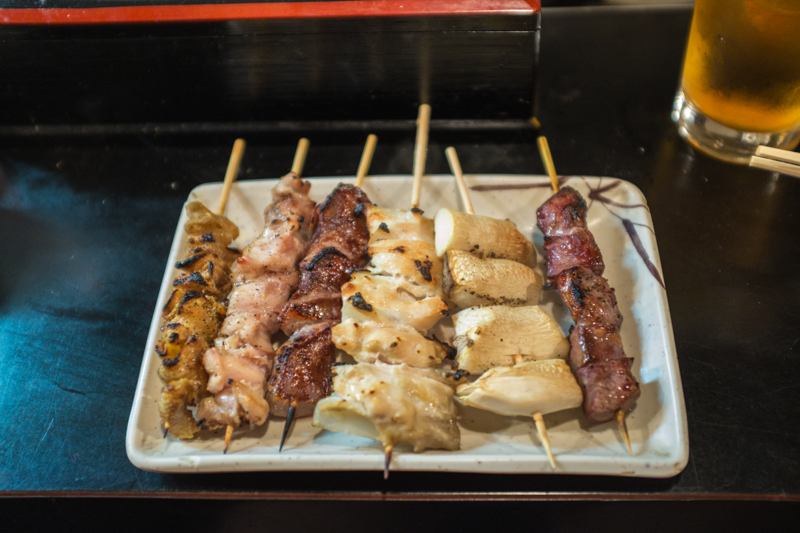
My wife got the “sauce” option, which was the same as mine but with the addition of a light, sweet sauce and a green pepper skewer.

Golden Gai in Shibuya is full bar small bars and Izakayas. The options for diners are seemingly endless and it’s hard to go wrong.

I didn’t eat at as many Izakayas as I had planned to in Tokyo because I had already eaten at quite a few earlier on in the trip in Osaka and Kyoto. Tokyo Izakayas that were on my list that I didn’t get a chance to eat at are listed below.
Birdland
4 Chome-2-15 Ginza
Chūō-ku, Tōkyō-to
Totoshigure
5 Chome-30-12 Daizawa
Setagaya-ku, Tōkyō-to
Shirube
2 Chome-18-2 Kitazawa
Setagaya-ku, Tōkyō-to
Tonkatsu
One of my favourite comfort foods back home is chicken katsu, which is a crumbed and deep fried chicken cutlet, generally served with rice and cabbage. In Japan, chicken katsu is rare, with pork katsu (tonkatsu) being much more widespread and popular. Either a pork fillet (hire) or loin (rōsu) is crumbed with panko (japanese breadcrumbs which have a greater surface area and result in a crunchier, lighter coating than western style breadcrumbs) and deep fried. It is served with rice and cabbage and tonkatsu sauce, which is similar to Worcestershire sauce.
Tonkatsu Suzuki
Tokyo Station contains a maze of places to shop and eat at in the basement levels underneath the train tracks. One section is called “Kitchen Street” and contains a variety of bars and restaurants. Tonkatsu Suzuki specialises in, as the name suggests, tonkatsu.
My wife ordered the daily special, which were small tonkatsu fillets on a bowl of rice with some mayonnaise and pickles.

I ordered the hire set menu which contained 2 decent sized tonkatsu fillets along with the obligatory rice, cabbage and pickles, as well as some miso soup. We both really enjoyed our meals. The pork was perfectly cooked and the crumbing was crispy and light.
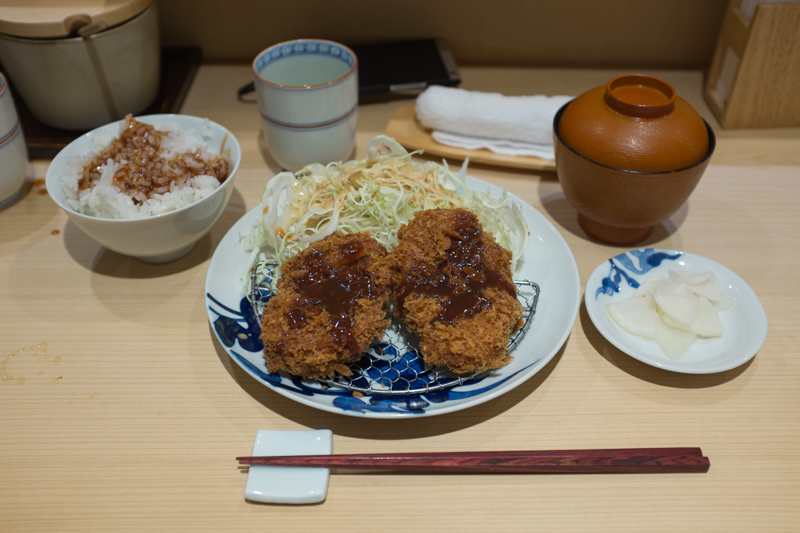
It’s easy to get lost in Tokyo station. For Kitchen street you need to go to the first floor main concourse between the North Yaesu and North Marunouchi exits.
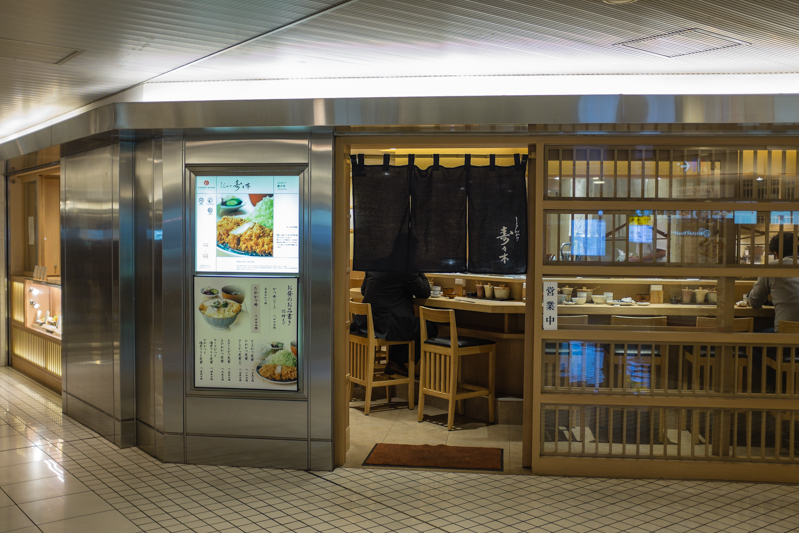
Tonkatsu Suzuki
JR Tokyo Station
1-Chome Marunouchi
Chiyoda-ku, Tōkyō-to
Maisen
Maisen is generally considered to be one of the best places for tonkatsu in Tokyo. They have a few outlets however the original in Aoyama is the one to go to. Located inside an old bathhouse, it’s a classy spot with its wooden accents, high ceilings and abundance of natural light.
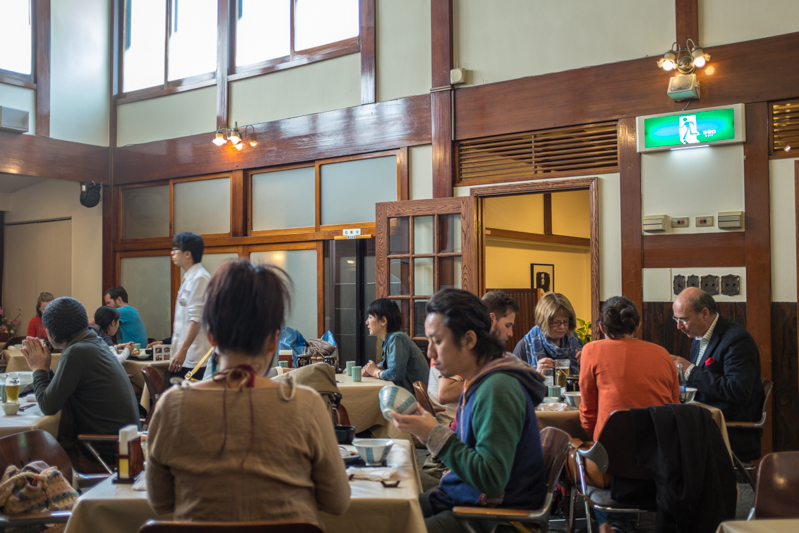
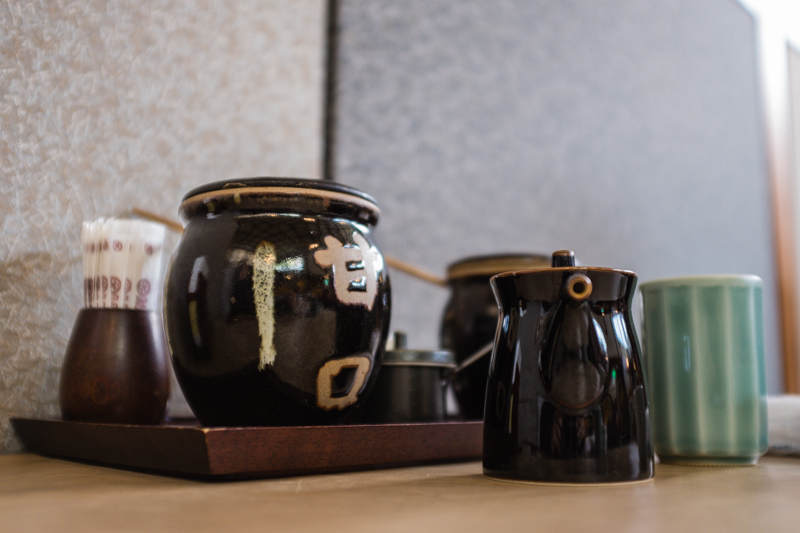
When it comes to the food, Maisen doesn’t disappoint. I ordered the signature dish, the kurobuta tonkatsu which uses black/Berkshire pork, and is famed for its high fat content and juiciness – the wagyu beef of pork if you will. I ordered the rōsu version and without a doubt can say that this is the best tonkatsu that I have ever eaten. The pork was so tender and juicy, the fat melted in my mouth and the breadcrumbs were buttery and luxurious yet still light.
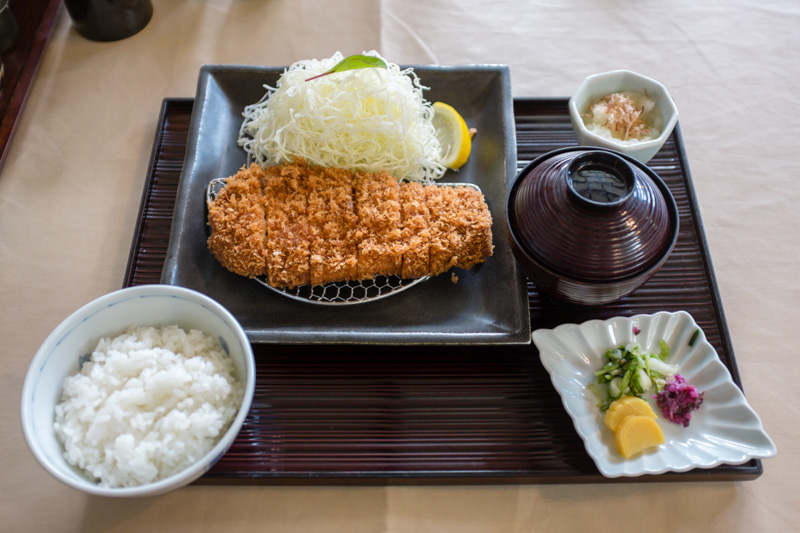
My wife ordered set menu that contained two smaller tonkatsu pieces and a sort of seafood and vegetable soup.
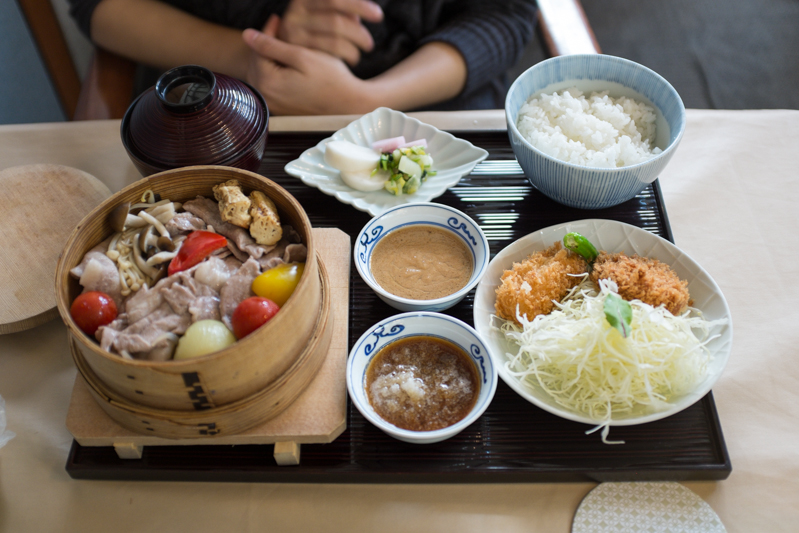
A sorbet at the end comes with all meals.
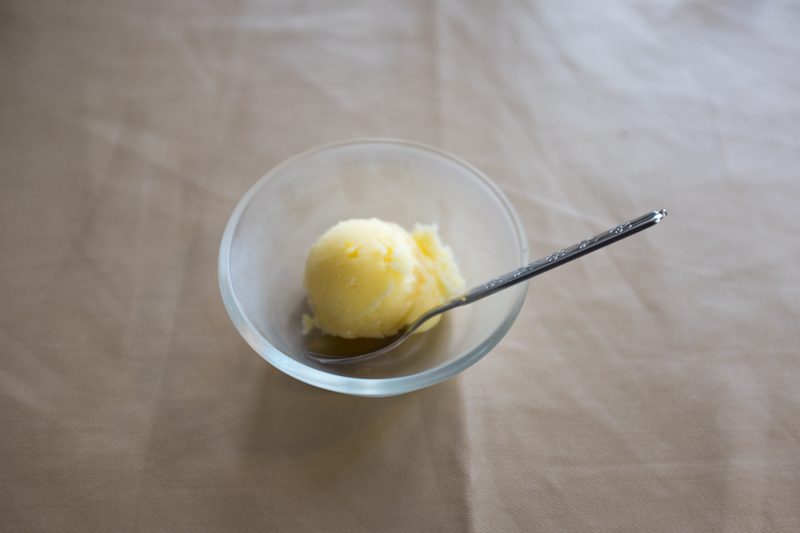
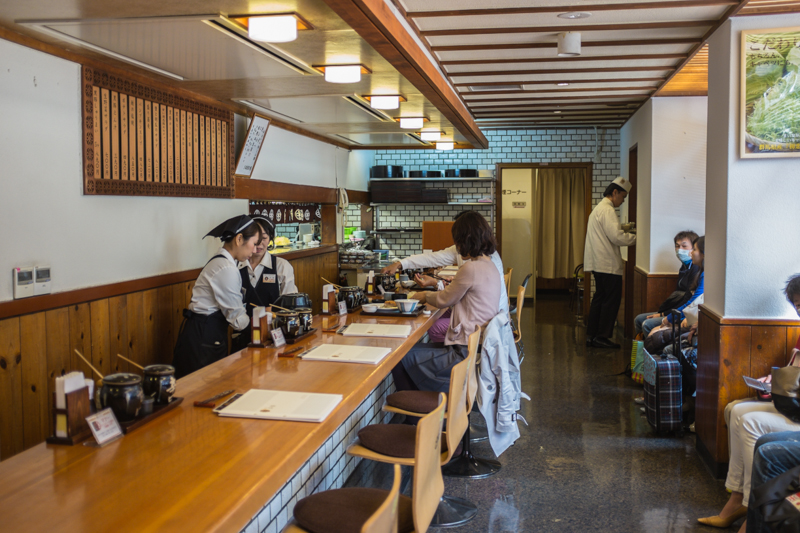
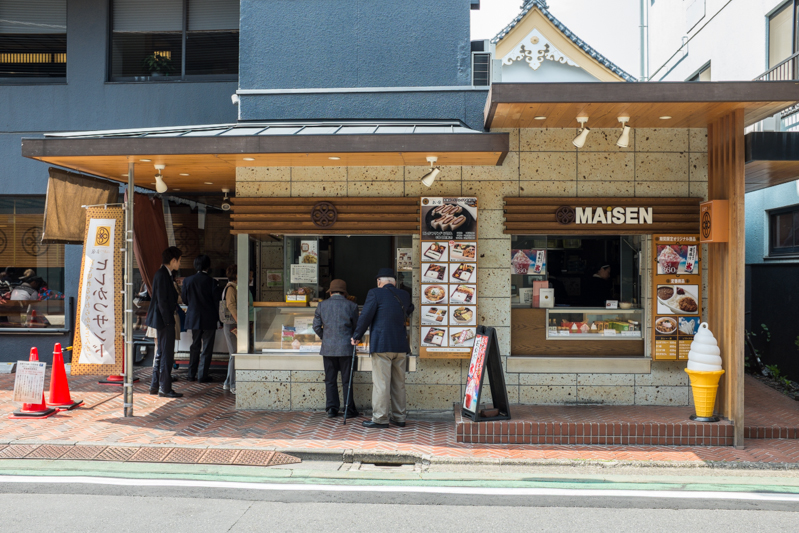
Maisen
4-8-5- Jingumae
Shibuya-ku, Tōkyō-to
Along with Maisen, there is one other place that has a reputation as being on of the best places for tonkatsu in Tokyo and that is Tonki, which has been serving up tonkatsu for over 70 years. I didn’t get a chance to visit, but by all accounts its up there with Maisen.
Tonki
1 Chome-1-2 Shimomeguro
Meguro-ku, Tōkyō-to
Sushi
Sushi is still very misunderstood in the western world, with many assuming that it starts and ends with raw fish. While raw fish, either by itself as sashimi or with rice as sushi is certainly one very common type of sushi, the only thing that sushi needs to have is vinegared rice with a topping, which can be cooked and does not have to be fish.
Sushi Zanmai
Sushi Zanmai is a chain of sushi restaurants that can be found throughout Tokyo. The main branch is in the Tsujiki fish market however we went to the Asakusa branch. The fish is high quality and tastes great. The seafood is visible from the counter where you can sit and each piece of sushi is prepared fresh when ordered. The menu is in both Japanese and English.
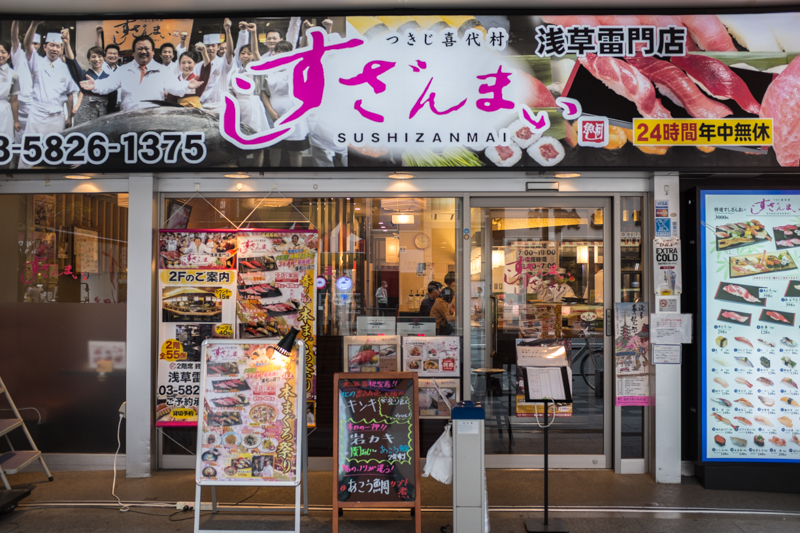
My wife got the rice bowl with uni (sea urchin roe) and salmon roe. She was very impressed with it.
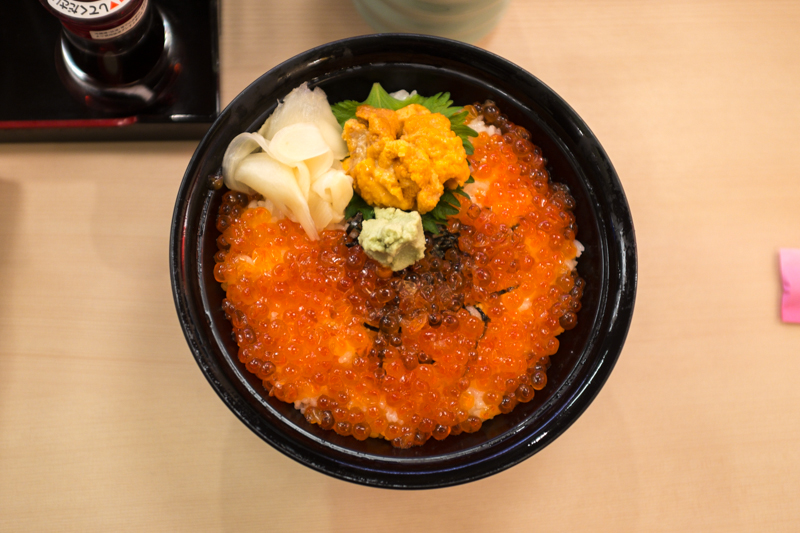
I ordered a selection of sushi. It was all very tasty and super fresh. From left to right: crab paste, uni, tori-gai, horse mackerel, gizzard shad, medium fatty tuna, herring roe.
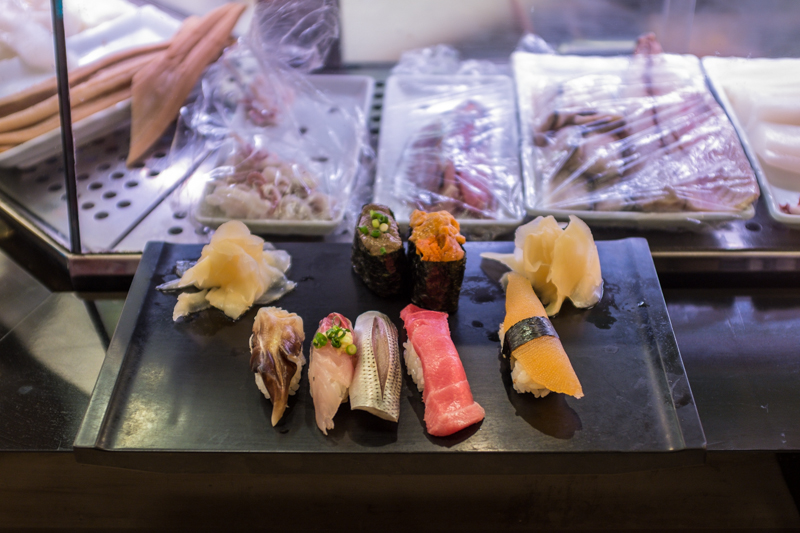
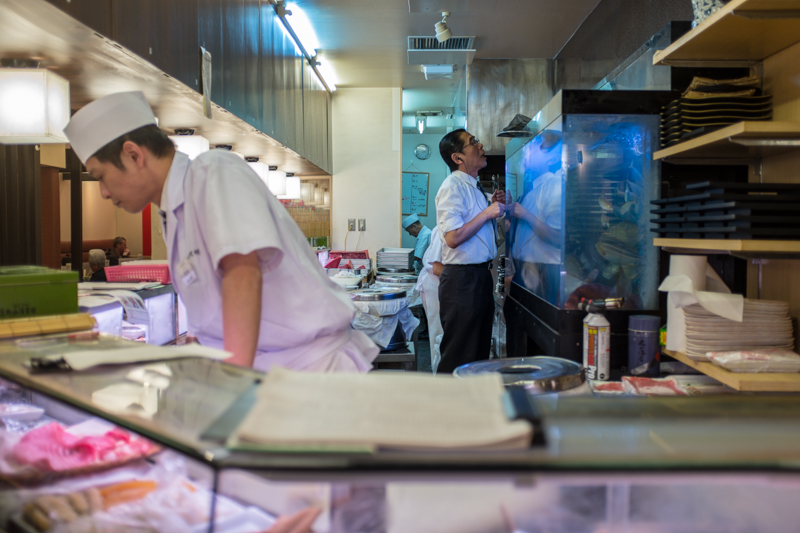
Sushi Zanmai
2 Chome−28−20 Asakusa
Taitō-ku, Tōkyō-to
Nakaya
This was perhaps the lowlight of food on our Japan trip. My wife and I went to the Tsujiki fish market early in the morning and were planning to have a sushi breakfast at Sushi Dai. We followed directions, found the small side street with the place with the green curtain and went in. We weren’t allowed to take photos of our food, the woman behind the counter was quite grumpy and both the rice and fish were merely ok. Turns out that this was not Sushi Dai, which was in fact down the next side street. Here’s a photo of the front so you know what to avoid.
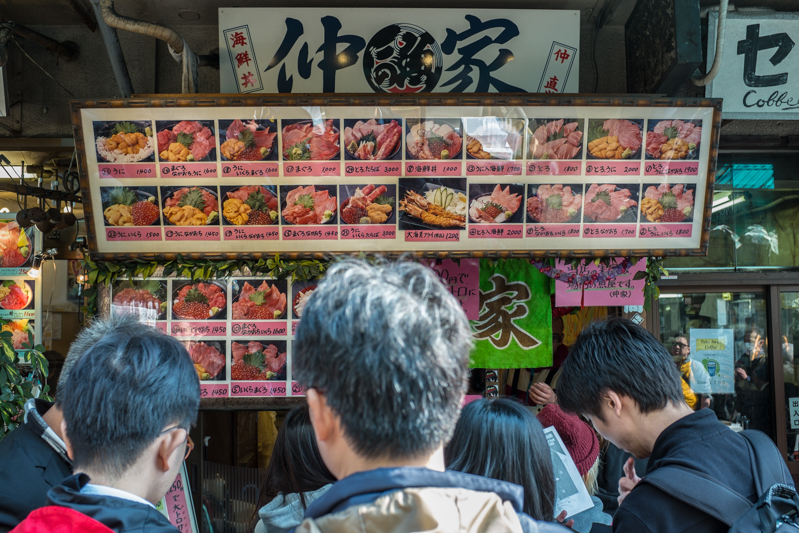
We ate lots of other sushi on the trip in Osaka and Kyoto. The sushi at the department stores, especially Takashimaya is very tasty. Along with Sushi Dai, here are the other sushi places on our list that we didn’t get to eat at.
Sushi Dai
5 Chome-2-1 Tsukiji
Chūō-ku, Tōkyō-to
Sushi Taichi
6 Chome-4-13 Ginza
Chūō-ku, Tōkyō-to
Midori Sushi
17-6 Daikanyamachō
Shibuya-ku, Tōkyō-to
Sushi Saito
1 Chome-9-15 Akasaka
Minato-ku, Tōkyō-to
Tempura
Tempura is essentially a selection of seafood and/or vegetables that have been battered and fried. The batter is light, crispy and fluffy and the tempura is usually served with sea salt and a tentsuyu dipping sauce. We didn’t make it to any places that specialised in tempura in Tokyo however if you look at the section “Sake” further down on this list you’ll find a place where we ate some great tempura amongst other things.
Sukiyaki
Sukiyaki is a Japanese hot pot dish. It contains thinly sliced pieces of meat as well as a variety of ingredients like vegetables, tofu and noodles. This is all placed in a shallow “soup” of soy sauce, mirin and sugar. A raw egg is generally placed on the side to be beaten and act as a dipping sauce.
Yoshihashi
Yoshihashi is a Michelin starred restaurant, hidden down the side street of a street which itself is unassuming. It’s known for its high quality wagyu beef and is quite pricey (over ¥8,000 for dinner) however during lunch time, you can go there and get one of the 12 walk-in seats at the counter close to the kitchen. The menu isn’t in English, and the staff don’t speak English however ask for the Sukiyaki and for around ¥2,000 you’ll get yourself an amazing feed.
This sukiyaki was brilliant. The serving size was very generous (it also included a bowl of rice) and the meat was very tender and flavoursome.
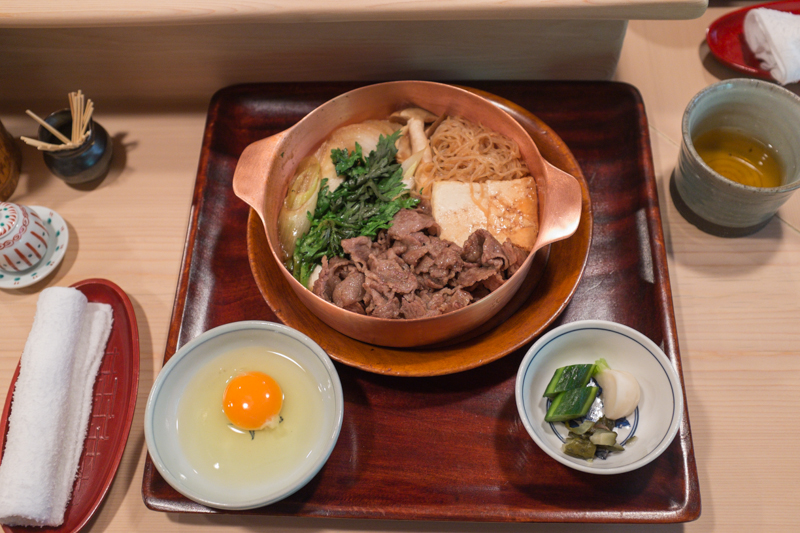

You want the place on the top sign, not the bar.
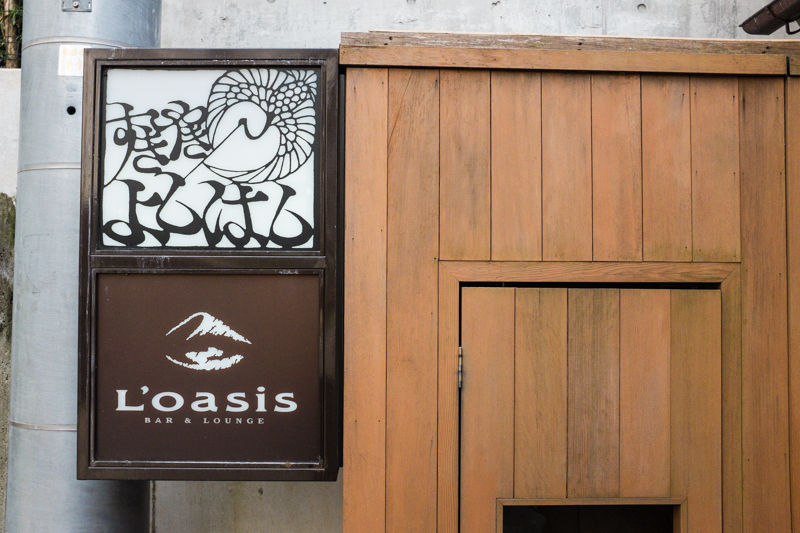
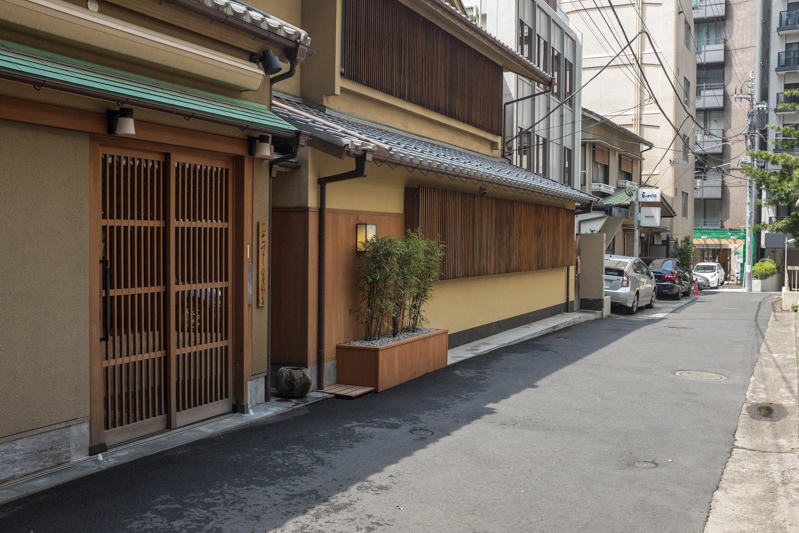
Yoshihashi
1 Chome-5-25 Motoakasaka
Minato-ku, Tōkyō-to
Shōjin-Ryōri (Buddhist Temple Food)
Buddhist cuisine is vegetarian and is based on the concept of non-violence. The food that is served has to adhere to strict Buddhist guidelines.
Itosho
Anyone who thinks that Michelin starred restaurants are all about glitz and pretension will have their preconceptions turned on their heads after a meal at Itosho. Itosho has been serving up Buddhist temple food since 1960 and, for most of those years, owner/chef Hiroharu Ito has been running the show. We got the lunch set menu (¥6,300 + 10% service charge) which is cheaper than the dinner offering (¥8,400 – ¥10,500 plus 10% service charge) . Chef Ito is a very friendly and humble man who you treats his guests like visitors to his home. He speaks minimal English, but enough to let you know what you are eating. After taking your shoes off at the front you are ushered to a room that is very traditional with a low table and floor seating.
The menu consists of vegetables from across Japan. When we walked in we were served a pickled vegetable mixture with a dipping sauce.
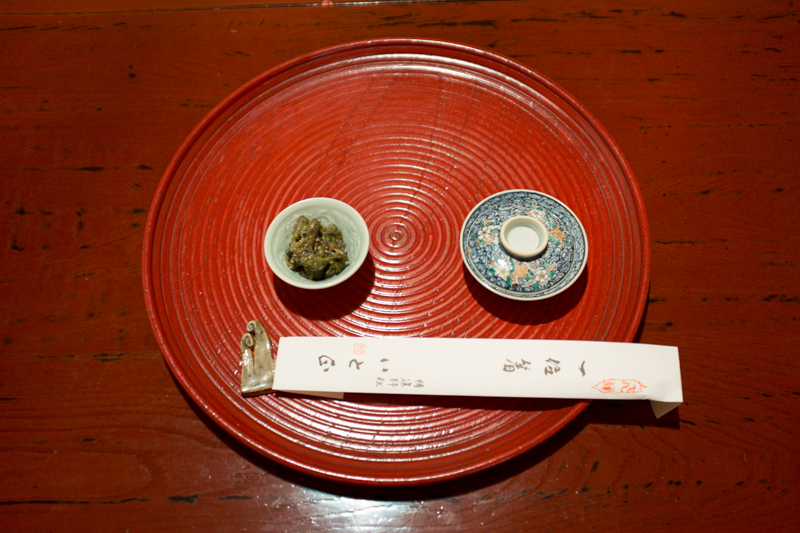
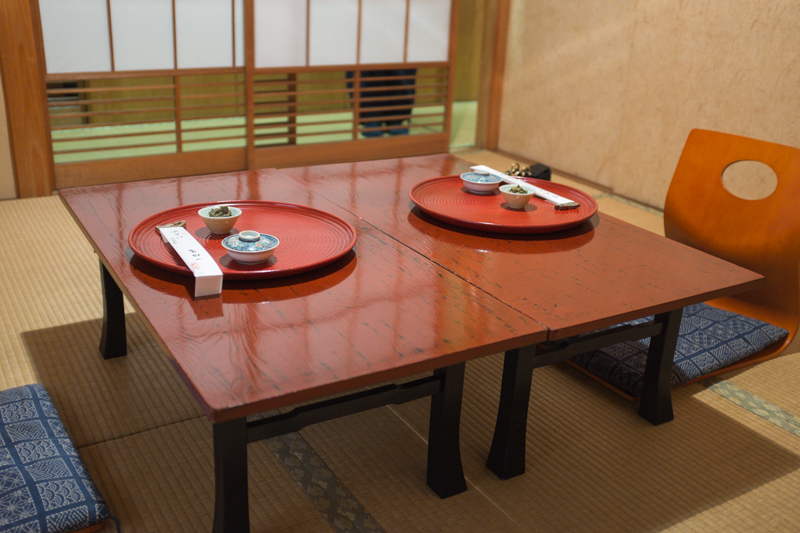
The first proper dish of the meal was matcha jelly mixed with yams, laver boiled down in soy sauce and raw wheat gluten topped with a tofu, sesame and walnut sauce. The flavours were delicate and delicious.
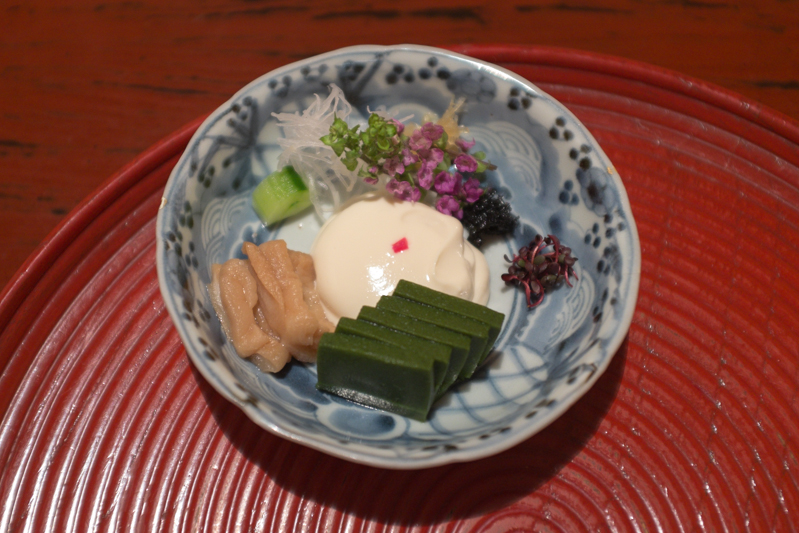
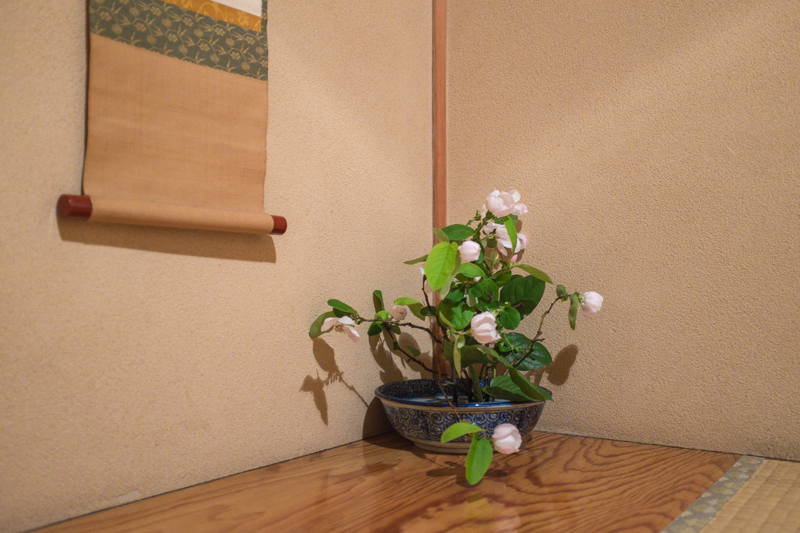
Next was ineffable suimono clear soup which consisted of a chestnut dango dumpling and thin strands of hime-negi scallions.
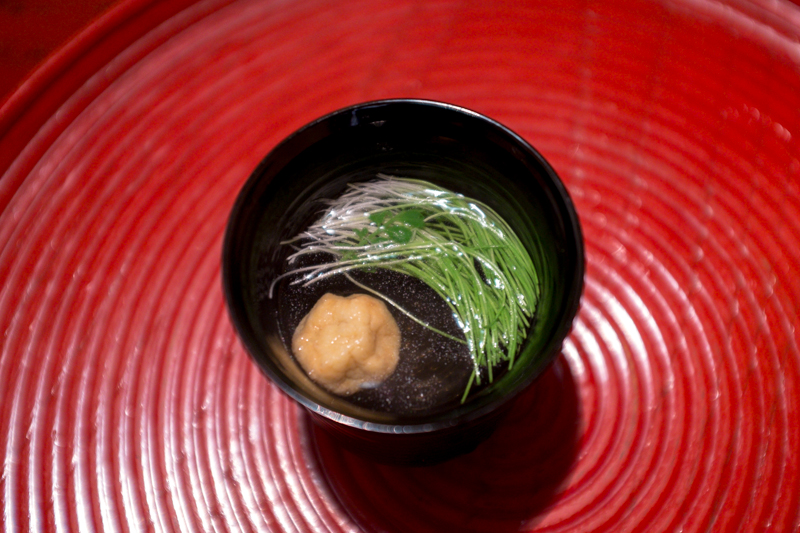
Next was Itosho’s signature dish, shojin-age which was 6 deep-fried vegetables and tofu, with coating of tiny “pebbles” made of mochi flour (it was almost like the cereal rice crispies/bubbles). A little bit of salt was provided to dab each piece in. It was easy to see why this dish is always on the menu, albeit with different vegetables depending on the season and availability – the texture and taste is something else.
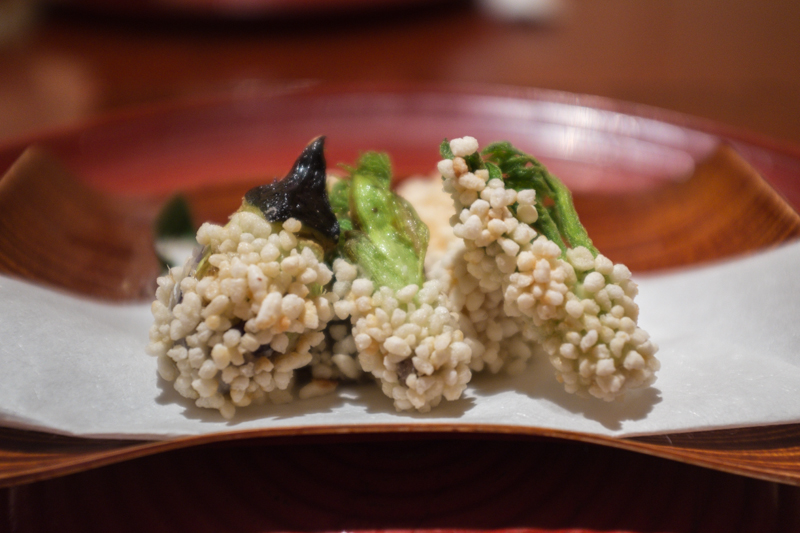
Next was potato, a pickled wild plant, and another wild plant. covered in black sesame and placed on a rose leaf.
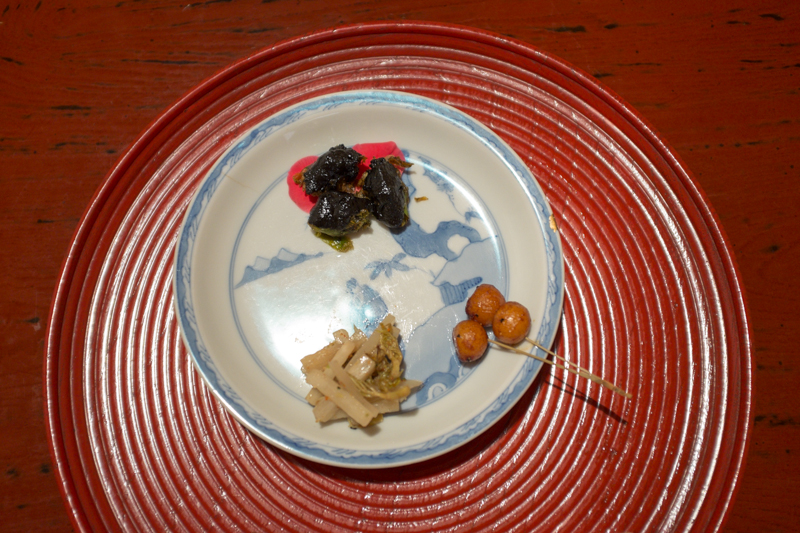
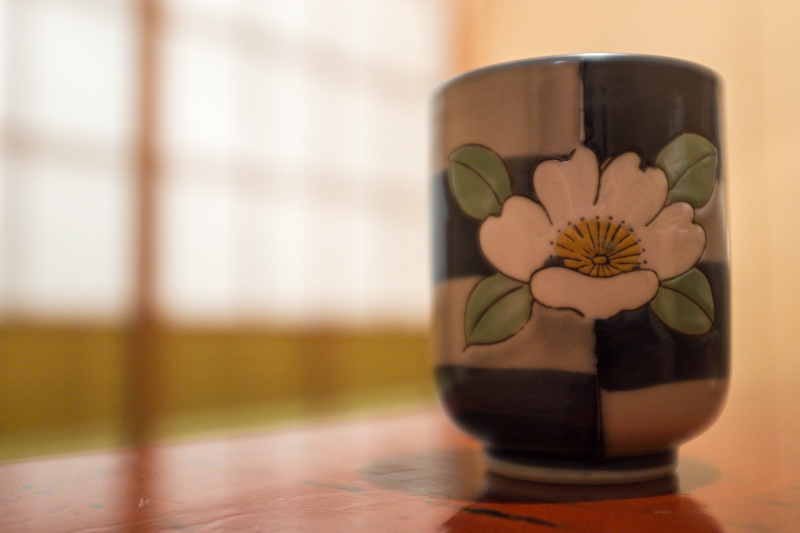
Soba noodles topped with grated tororo yam and wasabi.
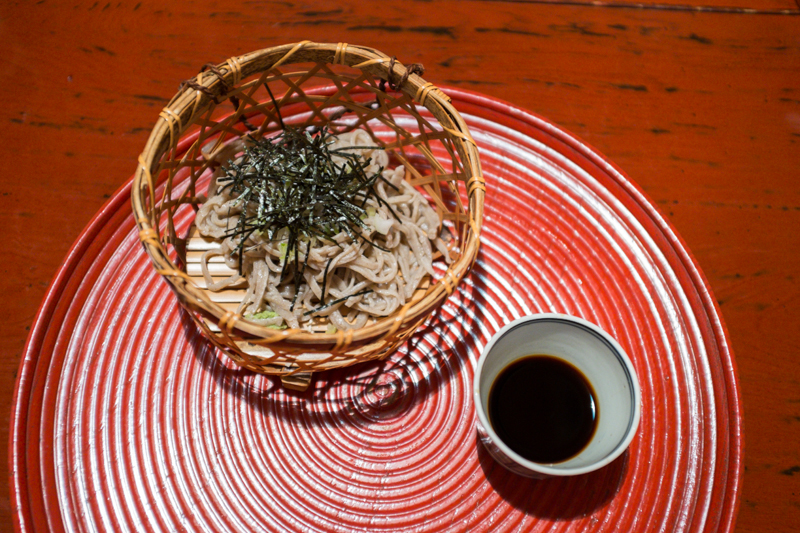
Bamboo stems, seaweed, pickles, miso broth.
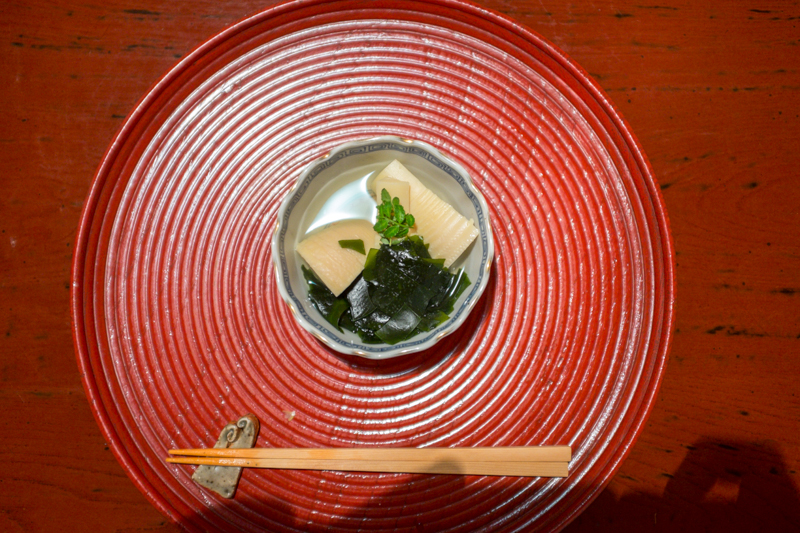
Bamboo rice, mushroom (I can’t recall the type) soup and pickles.
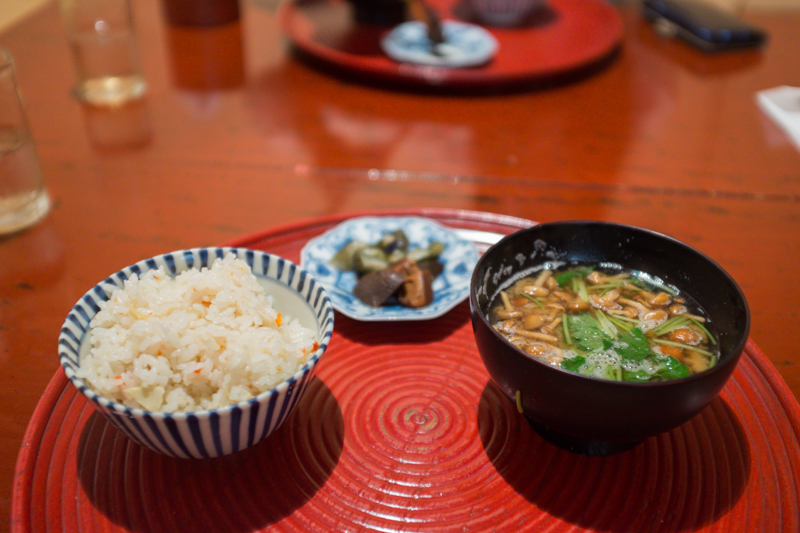
Sweet honeydew to finish with.
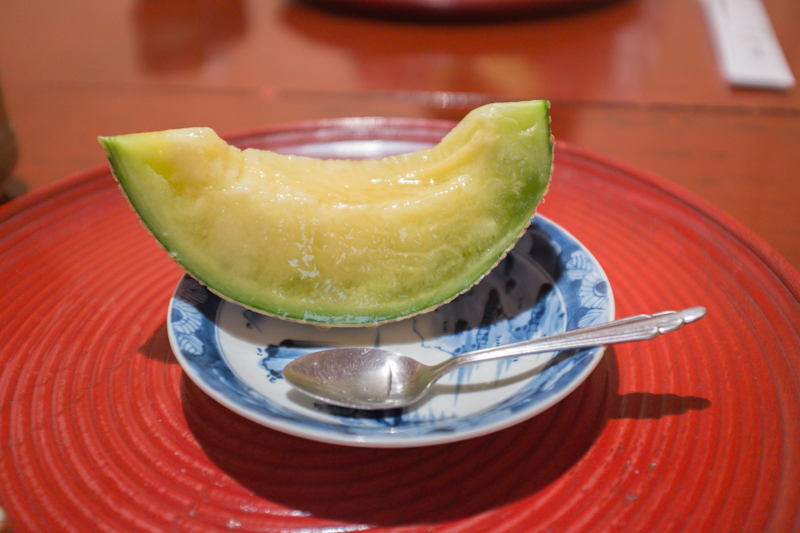
I was going to take a photo of the front for this blog post however the owner, who followed us out to say goodbye assumed that we wanted him to take a photo of us and then stood outside as we left so here we are, at the front of Itosho.
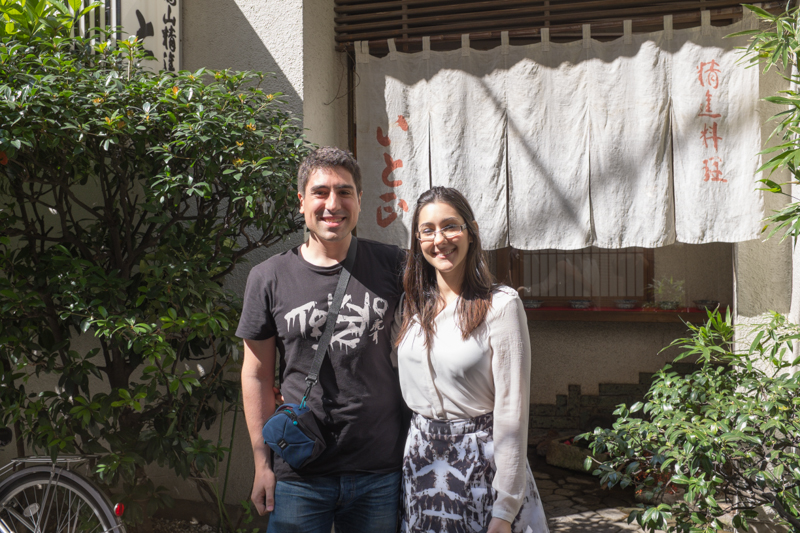
We were also give a sweet snack to take away with us.
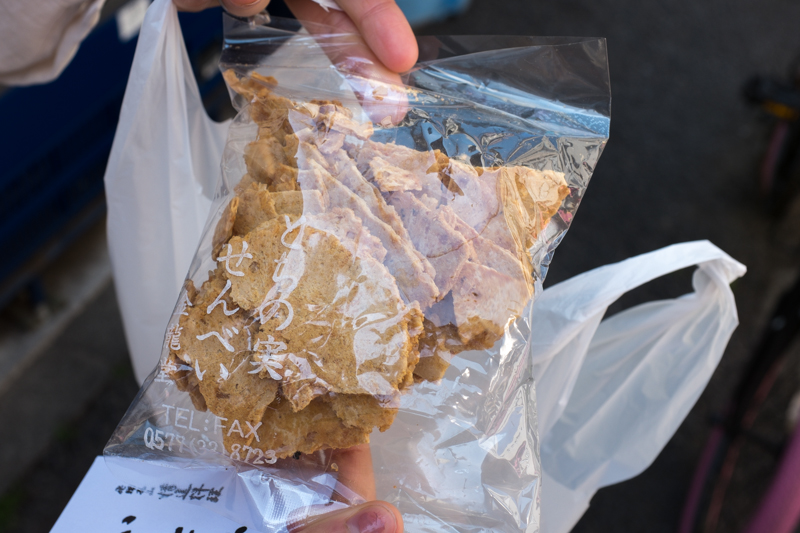
The whole experience was very special and unique, and I’m really glad that I ate at Itosho.
Itosho
3 Chome-4-7 Azabujūban
Minato-ku, Tōkyō-to
Department Stores
Department stores in Japan are a cut above what you tend to find elsewhere in the world. Sure, there are many cities that have high end department stores with nice food sections however in Japan the sheer selection is outstanding. Along with the highest quality fresh produce and ready-to-eat meals that you could imagine, these department store food halls are where you can find concessions from stores that have set up shop from all over the world. They even have their own name, “depachika”. The product ranges are extensive and everything is beautifully presented.
Paris is one city that is heavily represented. Mariage Freres is one of my favourite tea brands and when I lived in London I’d pay a visit to their stores whenever I was in Paris so I was happy to be able to stock up on some of their harder to find blends of teas for the first time in several years (they do have an online shop but shipping to Australia is exorbitant). The American Breakfast and Paris-Ginza blends are 2 of my favourites. They have a few outlets around the city, but the one we visited was in Shibuya’s ShinQs department store.
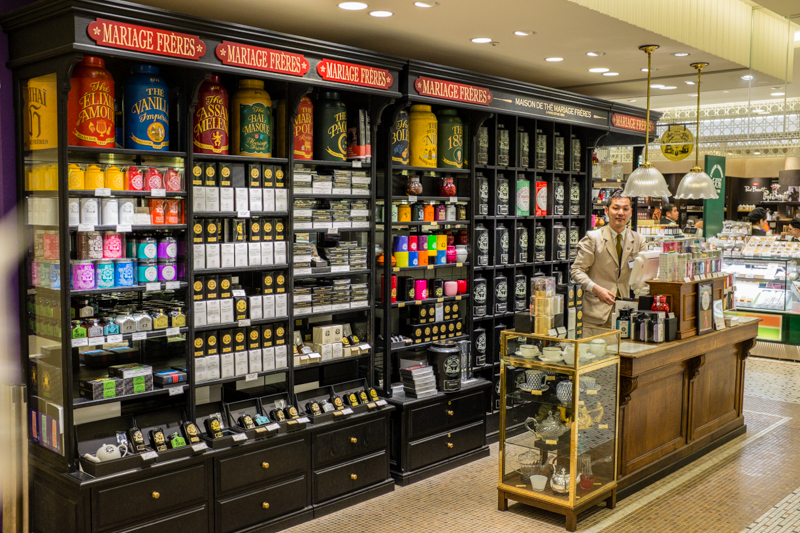
The ShinQs department store is especially luxurious.
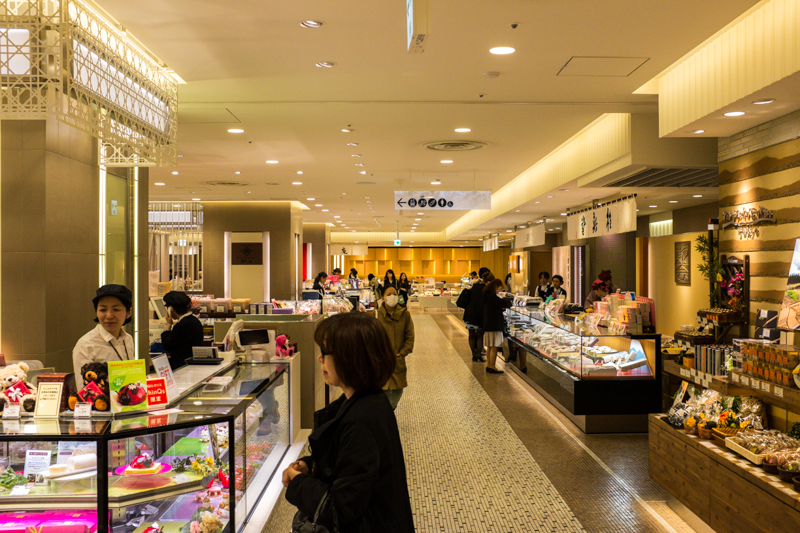
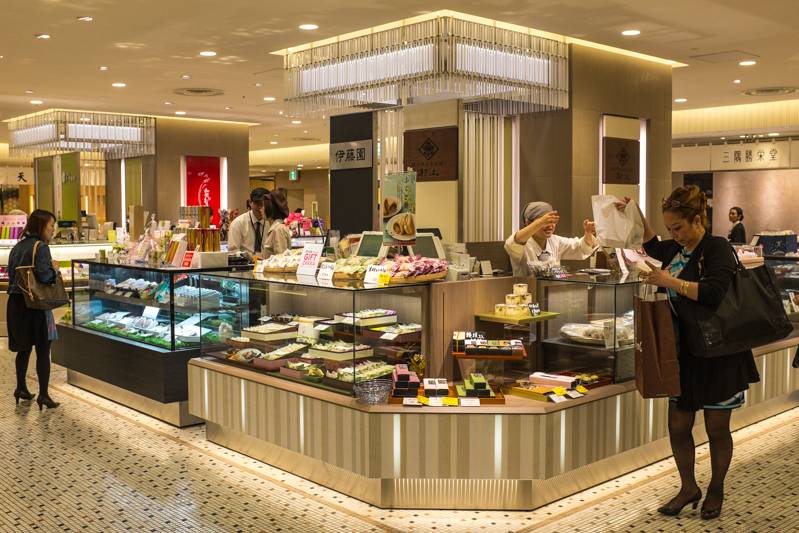
Joel Robuchon has several different outlets around Japan, and at Shin!s is the world’s first specialised Le Pain de Joel Robuchon. I bought an orange and dark chocolate coated croissant. It was sweet, buttery, flaky and super indulgent.
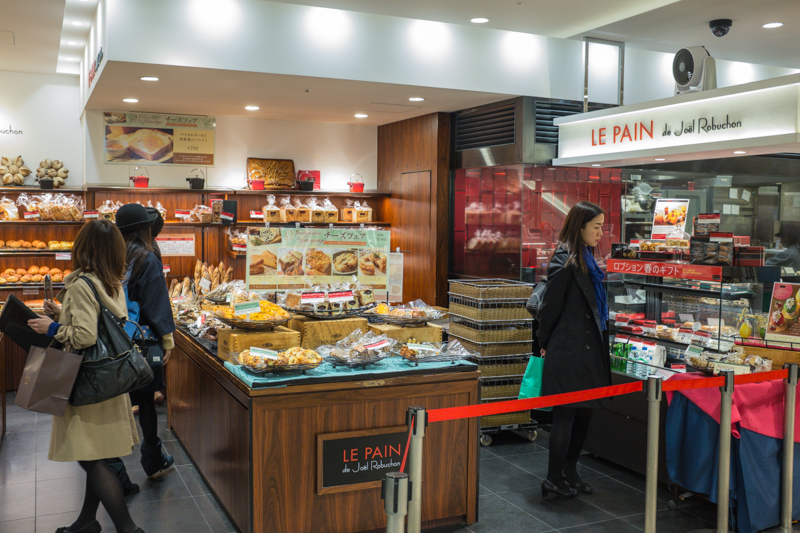
Pierre Herme and Jean Paul Hevin are 2 other French favourites that I hunted down while in Japan. I did so in Osaka hence the lack of photos in this post however they both have Tokyo outlets too.
I went to several other department stores in Tokyo and elsewhere in Japan. Most have several locations in the major cities. Here is a selection of the best.
Shibuya Hikarie ShinQs
2 Chome-24-20 Shibuya
Shibuya-ku, Tōkyō-to
Takashimaya (Nihonbashi Store)
2 Chome-4-1 Nihonbashi
Chūō-ku, Tōkyō-to
Daimaru (Tokyo Station Store)
1 Chome-9 Marunouchi
Chiyoda-ku, Tōkyō-to
Isetan (Shinjuku Store)
3 Chome-14-1 Shinjuku
Shinjuku-ku, Tōkyō-to
Mitsukoshi (Ginza Store)
1 Chome-4-1 Nihonbashimuromachi
Chūō-ku, Tōkyō-to
Assorted Delights
Rice
If there’s one thing that people know about Japanese food, it’s that rice is a staple ingredient. Throughout my trip in Japan I was impressed by just how good some of the plain rice could taste. One place that I was keen to check out and was not disappointed with was Akomeya, which a gourmet food store dedicated to all things rice.
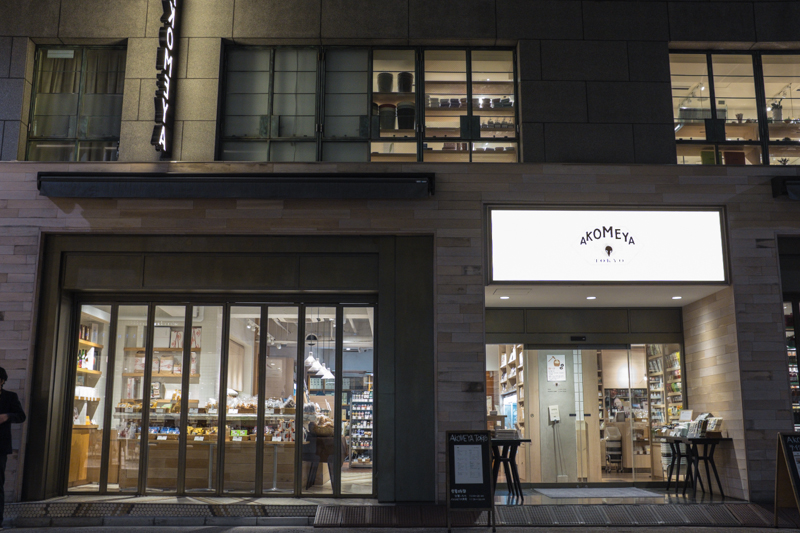
Akomeya opened this store in April 2013 and consists of a restaurant and takeaway counter, a grocery section with quite literally hundreds of rice related products and a store upstairs selling more rice and cooking related goods. I purchased a few assorted items that tickled my fancy, as well as one of the many regional packets or rice that was for sale. I wanted to buy so much more from here but then again, I wanted to buy so much more from every food related place I visited in Japan.
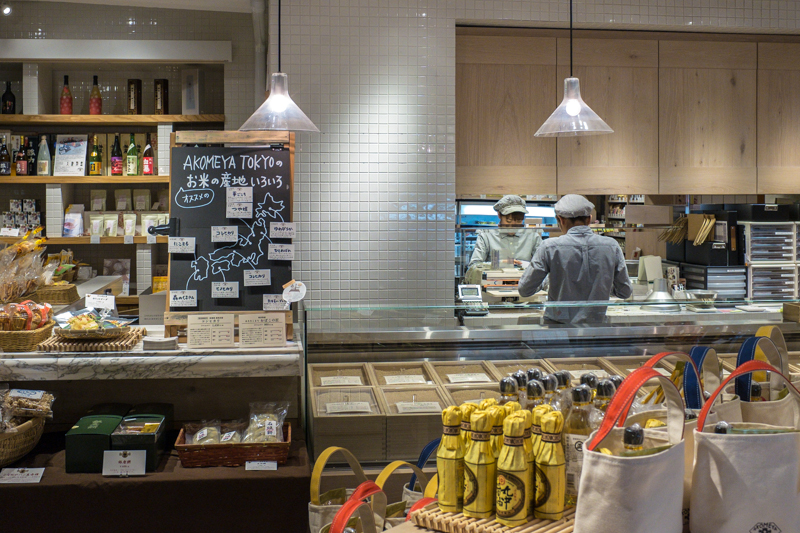
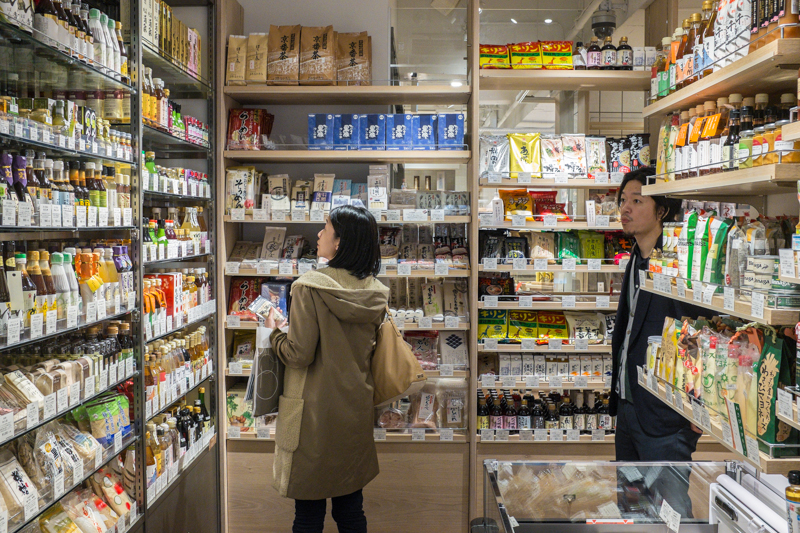
Akomeya Tokyo
2 Chome-2-6 Ginza
Chūō-ku, Tōkyō-to
Sweets & Snacks
As should be clear by now, there really is something for everyone on as far as food in Japan is concerned.
Okashi Land is in the basement of Tokyo Station and contains a selection of products from Morinaga, Calbee and Glico. There’s stuff in here that you won’t find elsewhere – big boxes of giant Pocky snacks in unusual flavours for example.
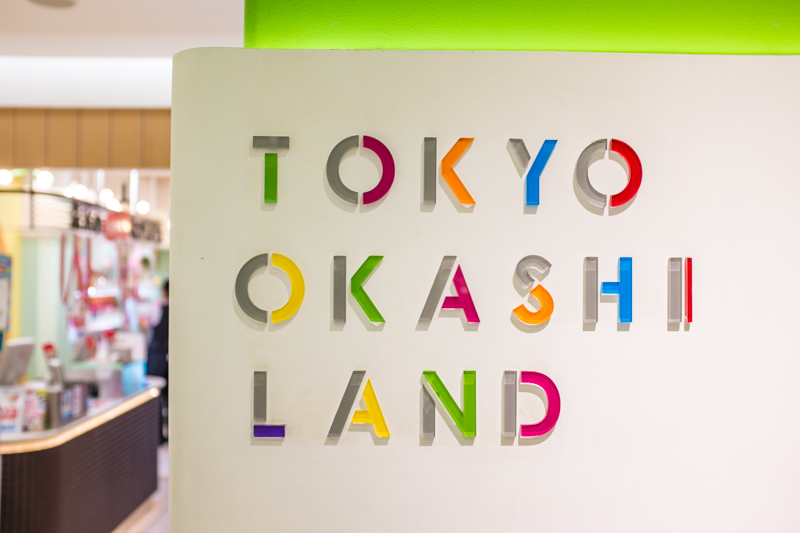
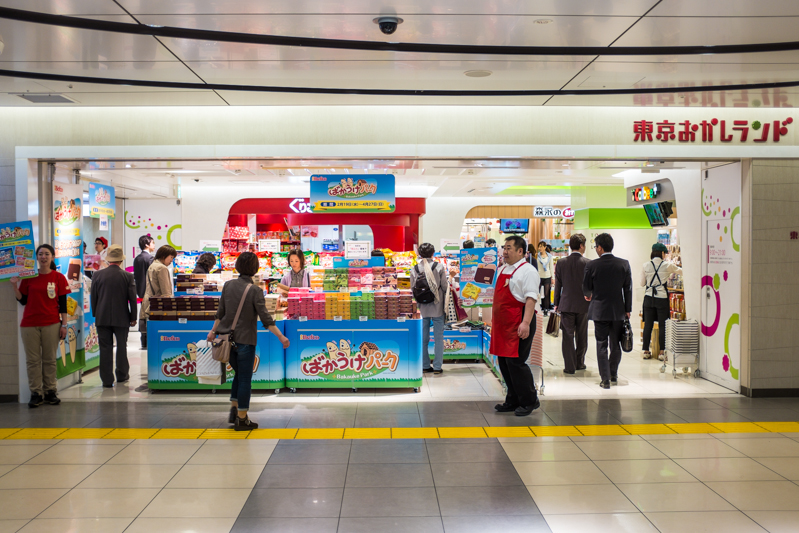
Okashi Land
Tokyo Station
1 Chome-9-1 Marunouchi
Chiyoda-ku, Tōkyō-to
Calbee also have a few of their own stores that contains a wide array of their fried prawn snacks with all sorts of flavour combinations available. I went to the one in Harajuku. Fried prawn chips with chocolate anyone?
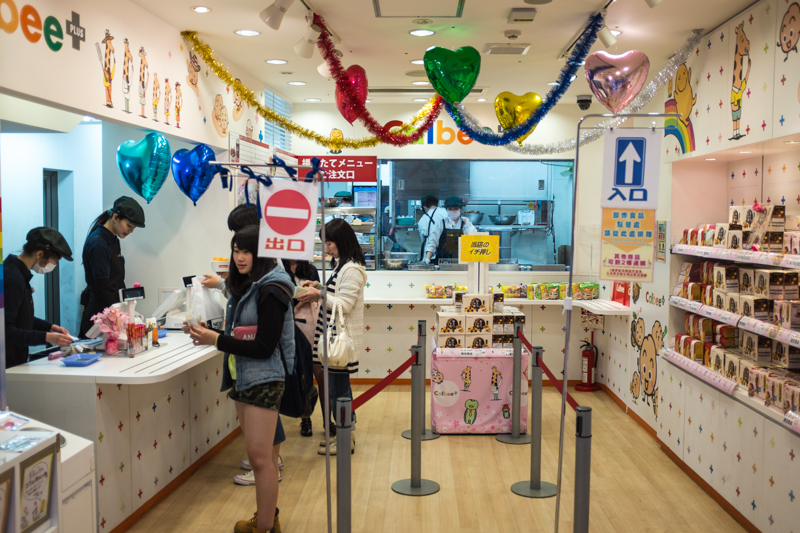
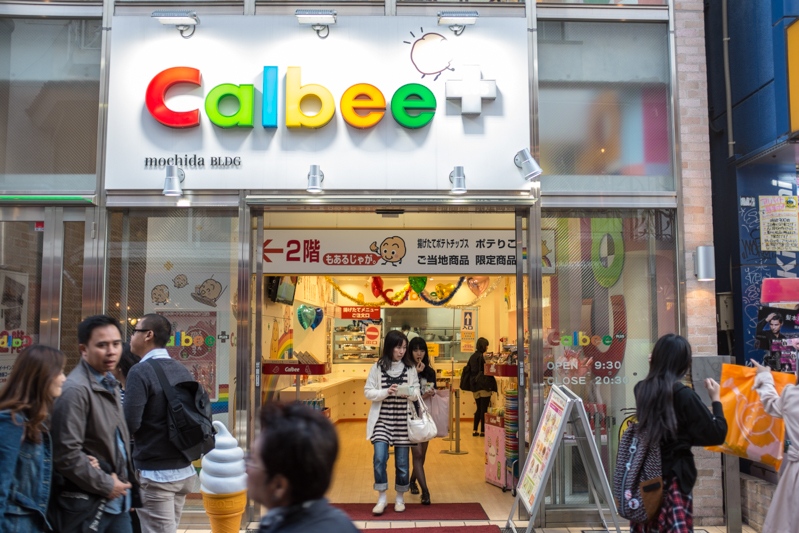
Calbee+
1 Chome-16-8 Jingūmae
Shibuya-ku, Tōkyō-to
Candy Show Time sells rock candy. It’s nothing special on the surface however they have some really interesting flavours. My wife and I bought a packet that had various seasonal Japanese flavours. They have a few stores about, we went to the one in Shibuya.
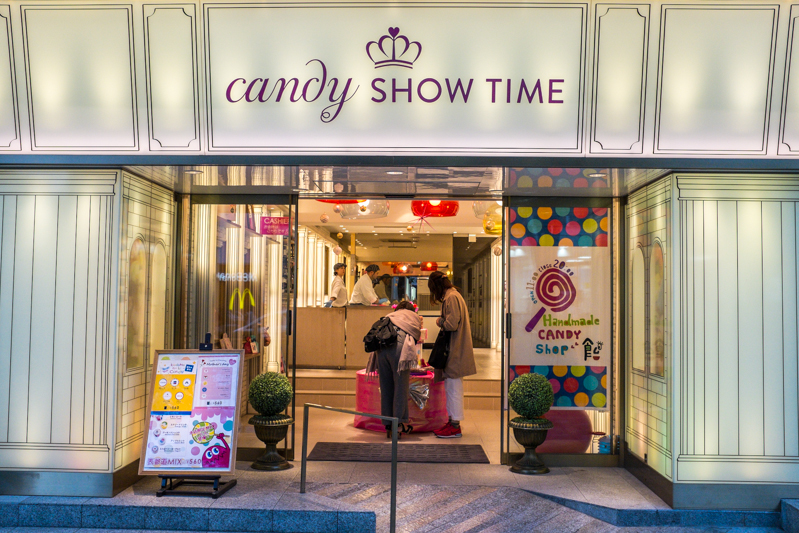
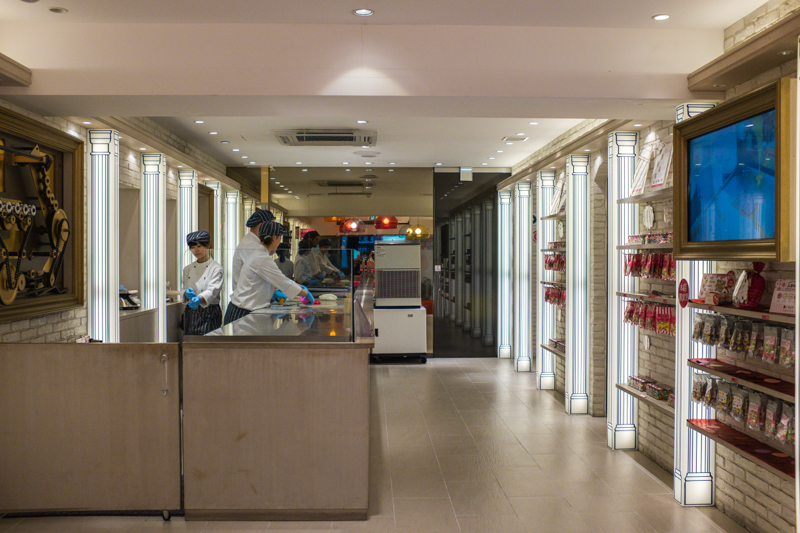
Candy Show Time
6 Chome-31-15 Jingūmae
Shibuya-ku, Tōkyō-to
No addresses for the below places, just a few photos that show the sorts of place you can find all over Tokyo. The shop below sold sweet potato type chips. I got a spicy one that packed a punch.
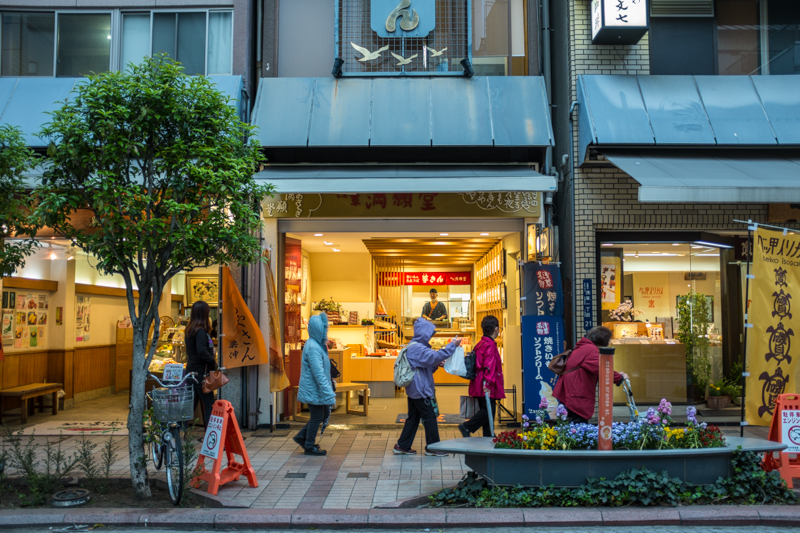
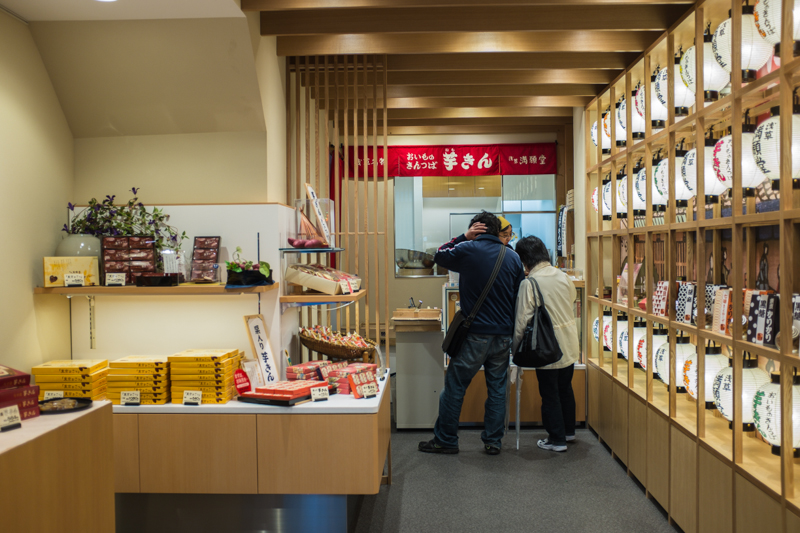
This shop sold a variety of cakes. I got a few with soft fillings that were nice.
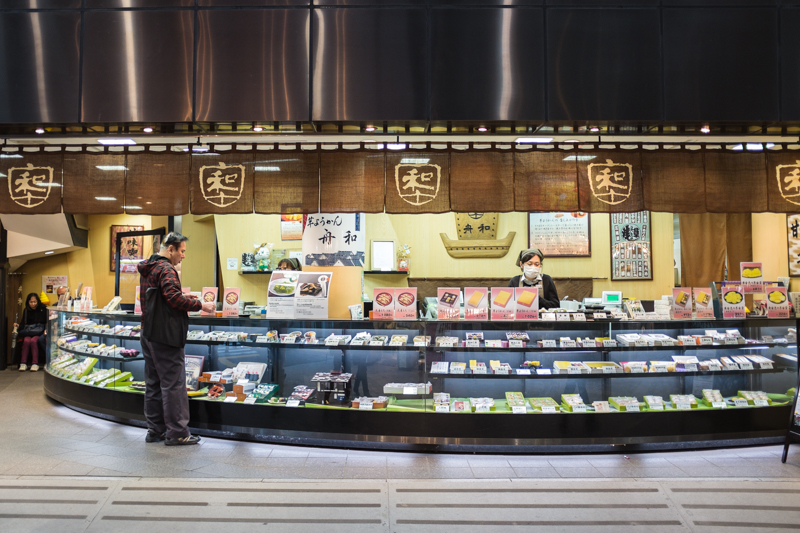
This shop sold rice toppers. I got one each of what appeared to be the most common ones to bring back home.
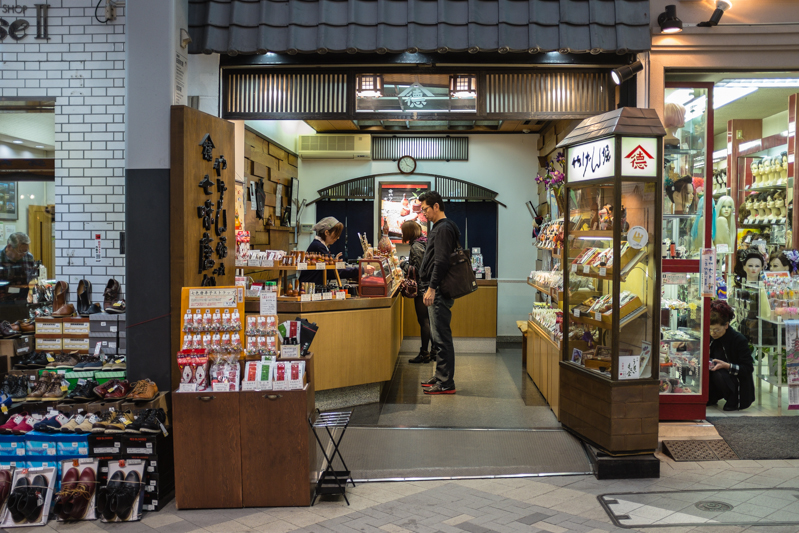
Sake
Sake is actually the Japanese word for alcohol. The drink that we in the West call sake is actually called nihonshu. The term “rice wine” is also quite inaccurate – the brewing process has more in common with beer. Terminology aside, I’m a big fan of the drink.
Hasegawa Saketen
A great place to sample a range of styles and figure out what you like is Hasegawa Saketen. who produce a range of quality sake spanning all budgets. We bought 2 bottles of our favourites to bring back home. They have a few outlets, we went to the one in Tokyo Station.
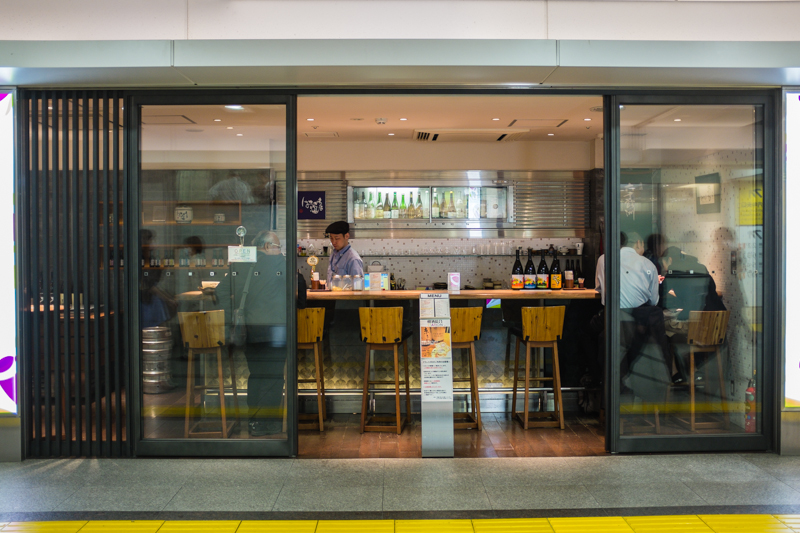
Hasegawa Saketen (Tokyo GranSta Branch)
Tokyo Station
1 Chome-9-1 Marunouchi
Chiyoda-ku, Tōkyō-to
Maishin
I wasn’t sure where to slot this place in when writing this post but, as I did come here for the sake, here it is. There is a very extensive selection of sake at Maishin and, despite no English being spoken by anyone in the venue, manager Takeuchi-san was still able to take us on a journey from our original request of “dry sake”, through to some very tailored and tasty drinks. There are some extremely rare and seasonal brews on offer at Maishin. One of the ones we tried was one of only 350 bottles produced in fact.
As a bonus, the food was excellent too. We had sashimi followed by a mixed vegetable and seafood tempura.
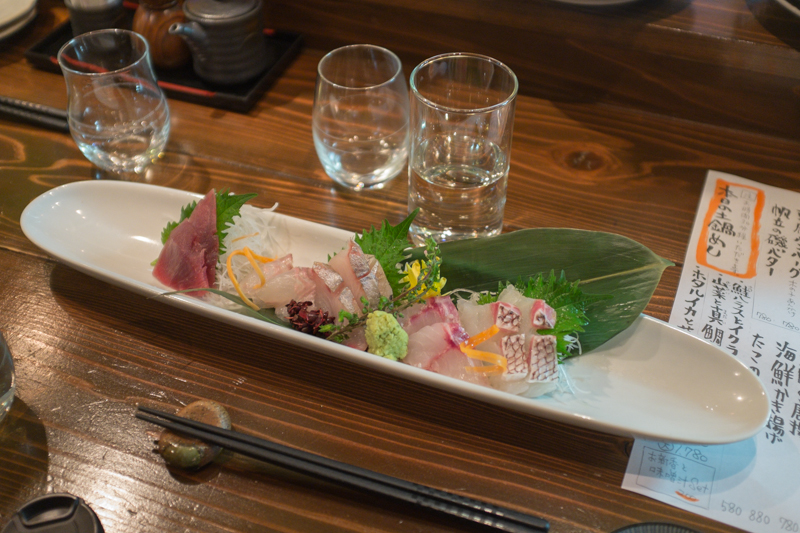
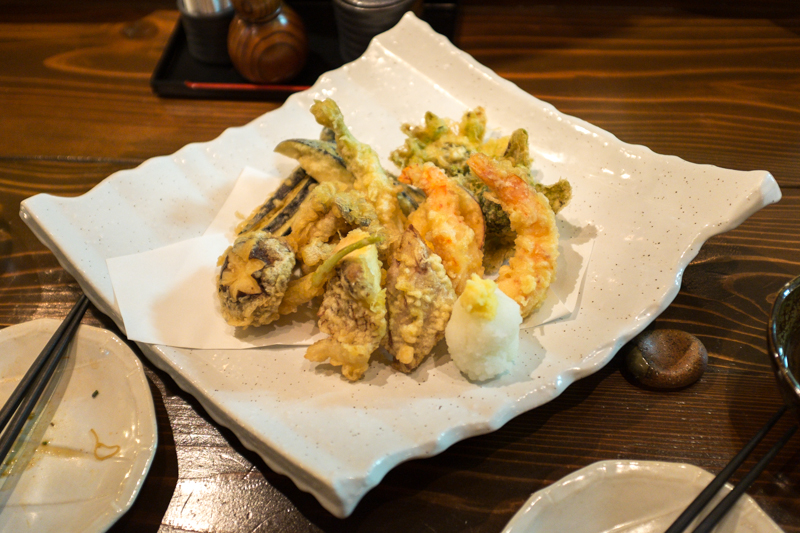
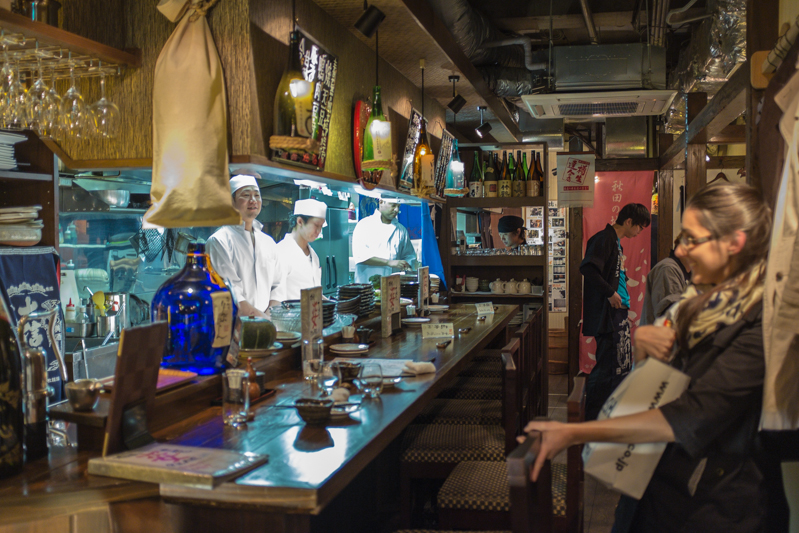
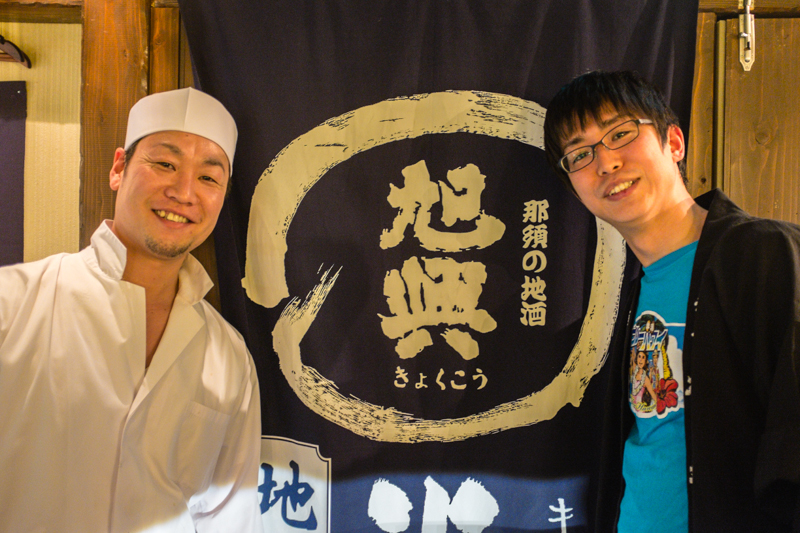
I never knew that sake could be this good until I tried some of the drinks that Takeuchi-san selected for us. Maishin is hard to find but your patience will be rewarded if you’re willing to make the effort. Walk down the street until you spot the NTT Docomo store. Next to it is a little walkway. Go down the walkway and down the stairs, then duck under the half sized door on your left and you’re there.
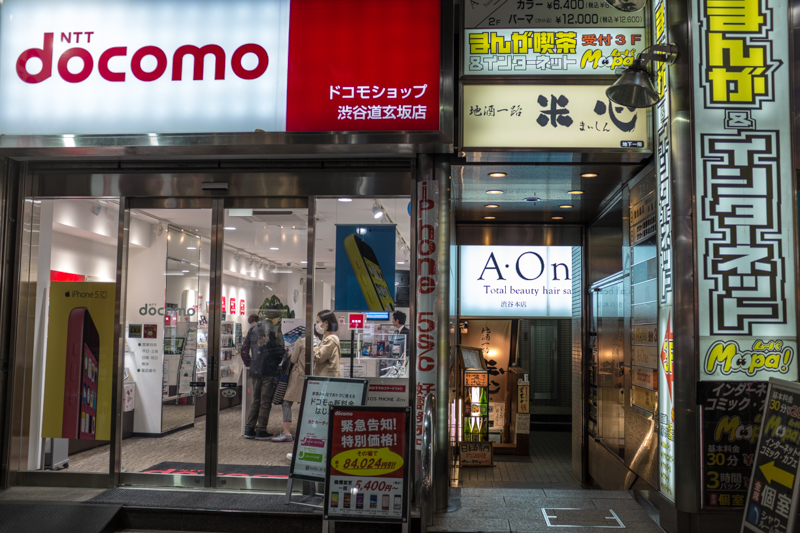
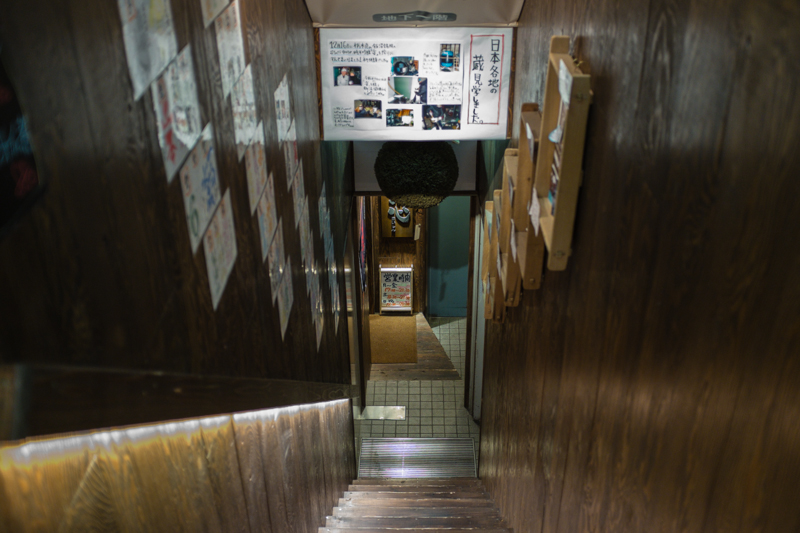
Maishin
B1F, Suyama Building
2 Chome-10-12 Dōgenzaka
Shibuya-ku, Tōkyō-to
Non-Japanese
Japan isn’t just about Japanese food. I ate primarily Japanese food however there is food from all over the world to be found.
Butcher Brothers
After almost 2 weeks in Japan I was craving something that wasn’t Japanese and was keen to go to Butcher Brothers, which is known for its very well priced, excellent quality steaks. The vibe is casual and fun, the fit out is very modern and the whole place feels like it wouldn’t be out of place in Brooklyn, Shoreditch or Fitzroy (insert your city’s on-trend “hipster” suburb here).
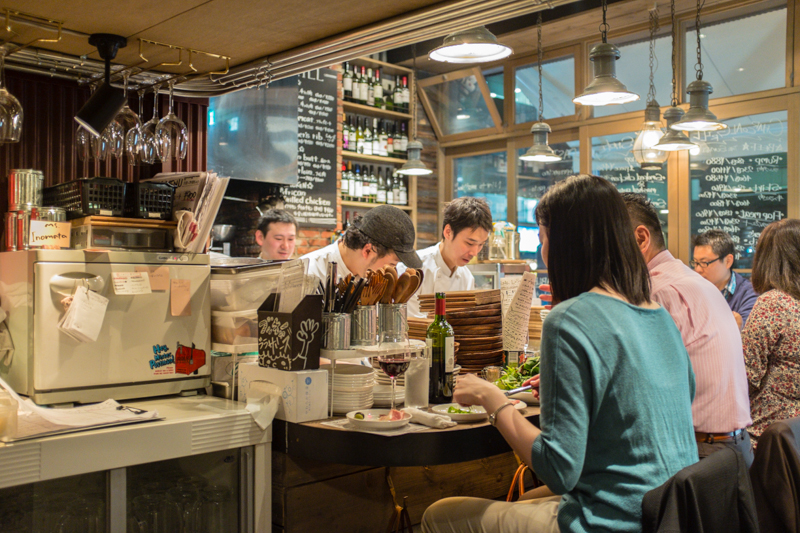
Olives and prosciutto.
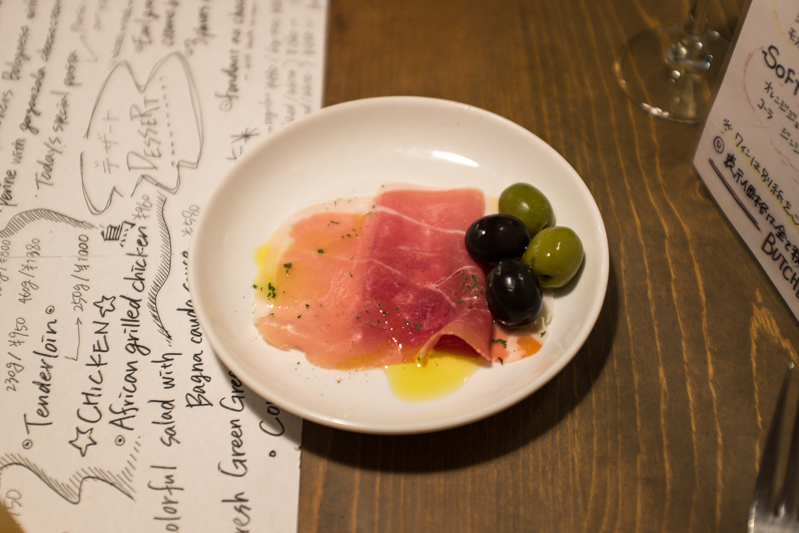
Pickles.
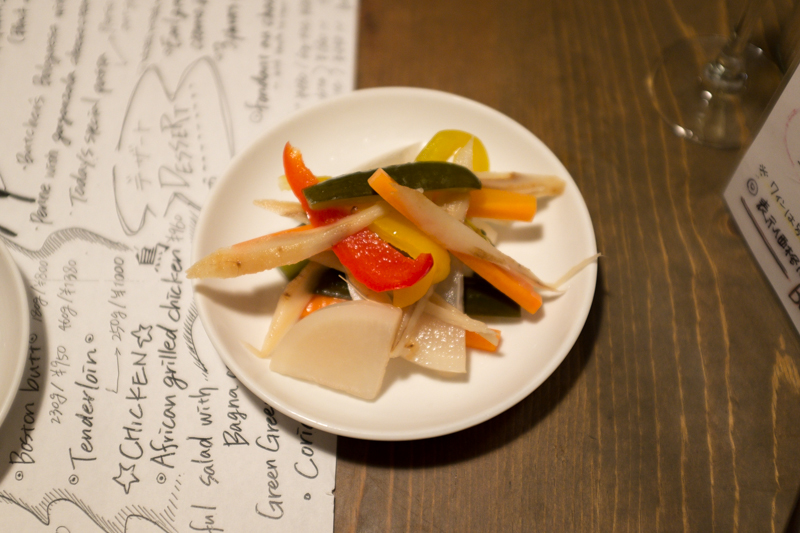
Duck liver pate and bread.
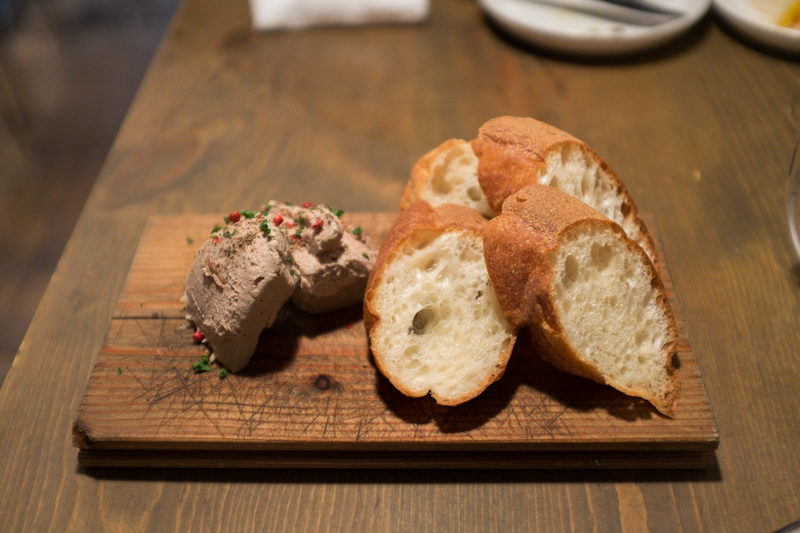
A green green salad which was ordered to get some token vegetables into our systems.
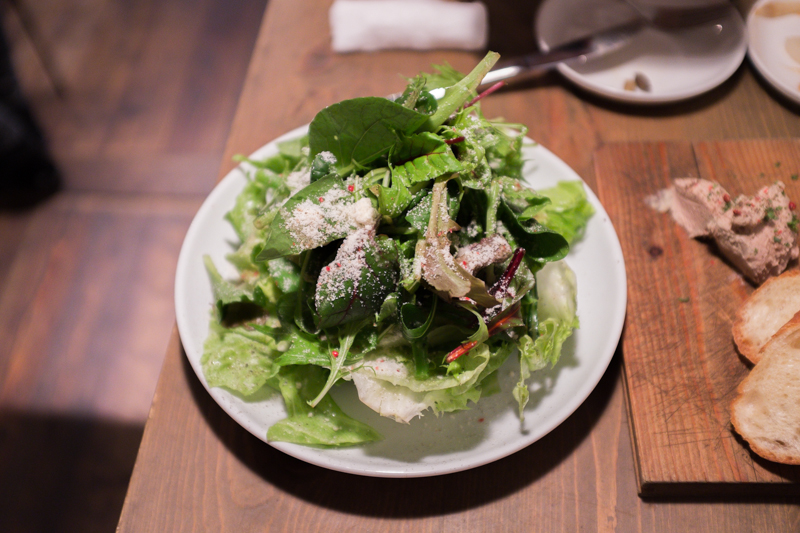
My wife got the roast duck which was sweet and smoky.
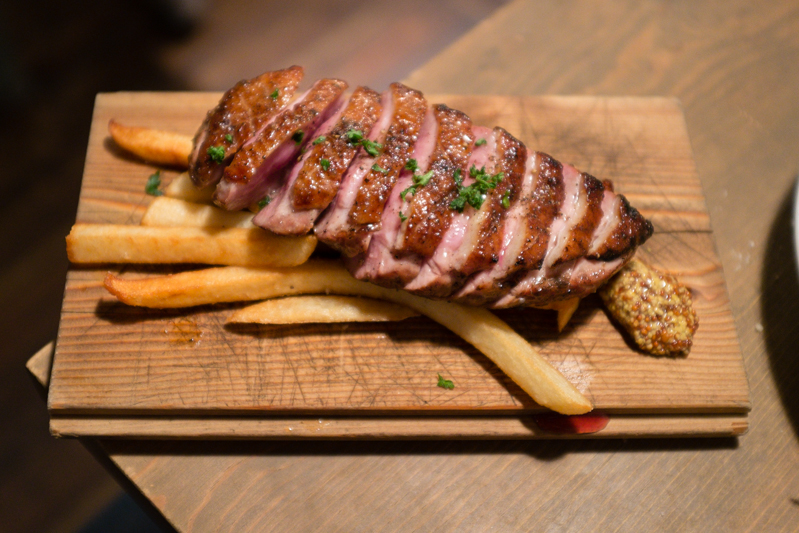
My rump steak was cooked perfectly, tender and, served on a bed of fries, was only ¥840 which represented amazing value.
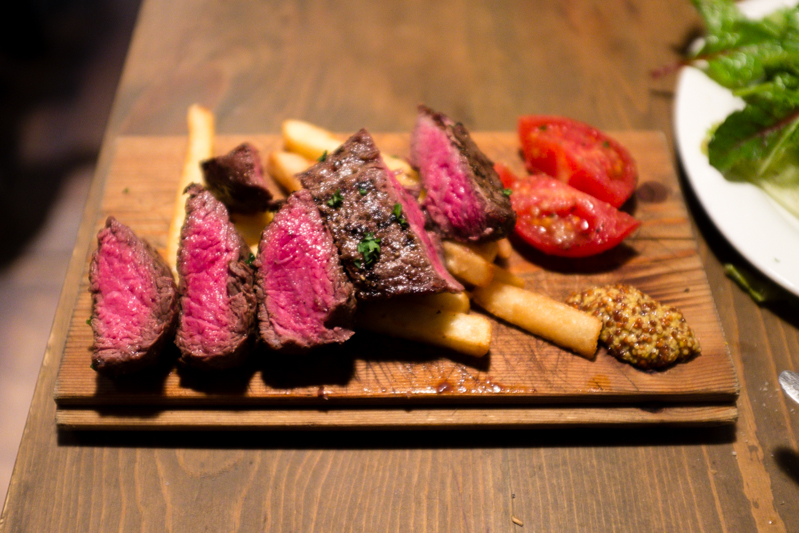
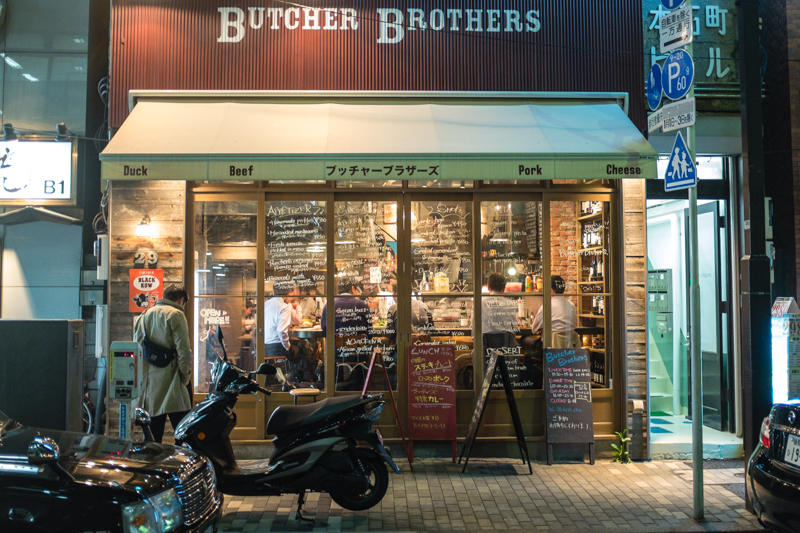
Butcher Brothers
4 Chome-5-10 Nihonbashihongokuchō
Chūō-ku, Tōkyō-to
Two places on my list that I didn’t get an opportunity to eat at were World Breakfast Allday, which focuses on the breakfast of a different culture every 2 months and Kitchen Nakamura, which serves Western inspired dishes using only local ingredients and produce.
World Breakfast Allday
3 Chome-1 Jingūmae
Shibuya-ku, Tōkyō-to
Kitchen Nakamura
B1F, La Porte Aoyama
5 Chome-51-8 Jingūmae
Shibuya-ku, Tōkyō-to
Fast Food
Mos Burger
A post on Tokyo food wouldn’t be complete without me mentioning Mos Burger. When I first went overseas, which was to Sinagpore in 2001, I discovered Mos Burger and was hooked to the taste of both the regular burgers and the rice patty (instead of bread) burgers. Every time I’ve visited a city that has a Mos Burger since, I’ve always paid one of the outlets a visit.
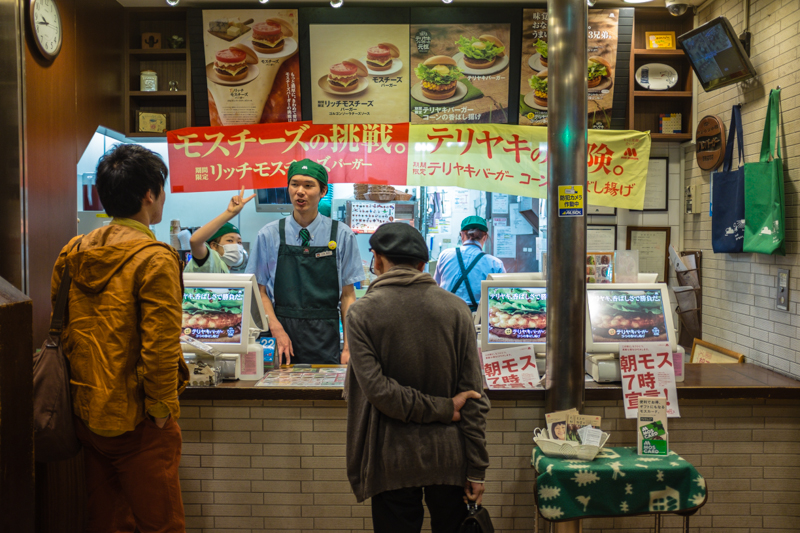
They neither the best nor the worst burgers that you’ve tried but they hit the spot for something junky if you’re in the mood – essentially Japanese McDonald’s. I got this one to get a bit of food in me during a Friday night out in Roppongi after a few (well ok, more than a few) sakes. Hit the spot beautifully, and can be found all over Japan.
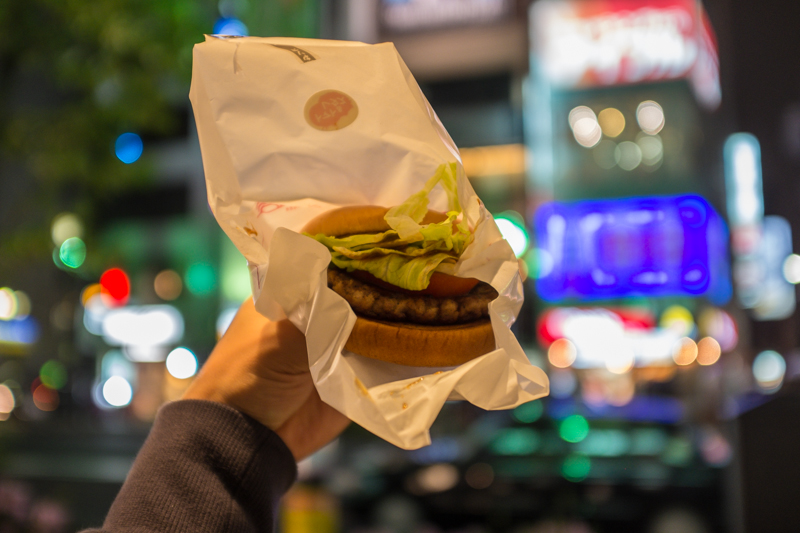
Coffee & Tea
A lot of people aren’t aware that Japan has quite a long history with coffee. Beyond the chains such as Starbucks, options for very good espresso based coffees are limited, with the Japanese preferring filtered coffee. Brands such as Hario and Kalita are based in Japan and make some of the best drip filter, pour over and syphon coffee equipment in the world. While I love my milky espresso based coffees, I also really enjoy filtered coffee as it really allows the flavours of the coffee beans to shine through.
Kappabashi Coffee
If you’re looking to try some coffee in Japan, one of the best places to go to is Kappabashi Coffee. A range of blends and single origin beans are offered and almost every style of coffee brewing that you can think of is available. It’s proper specialist coffee and there’s an English menu too. The food options are very good too, with a range of breakfast and dishes. The fitout is very modern, and there’s a design shop upstairs that’s worth checking out too.
The Japanese parfait was delicious, especially the matcha ice cream.
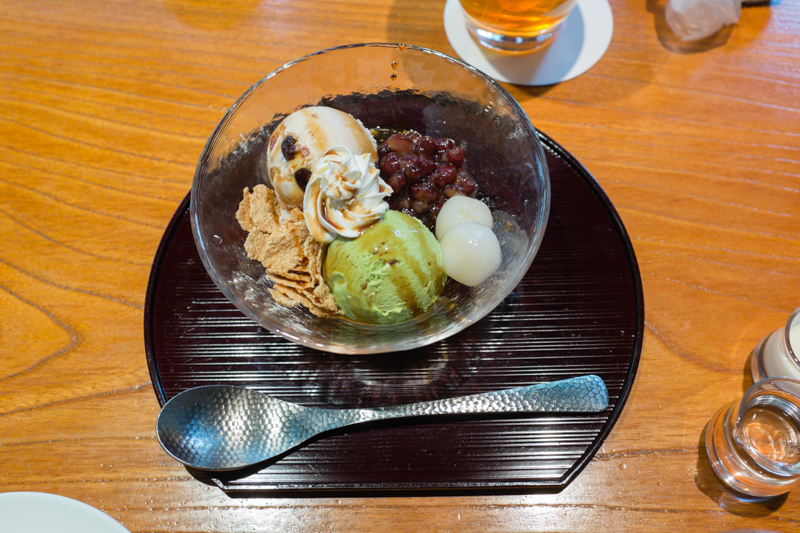
The yuzu cheesecake was also very tasty. With the yuzu giving it even more of a tang than the usual lemon.
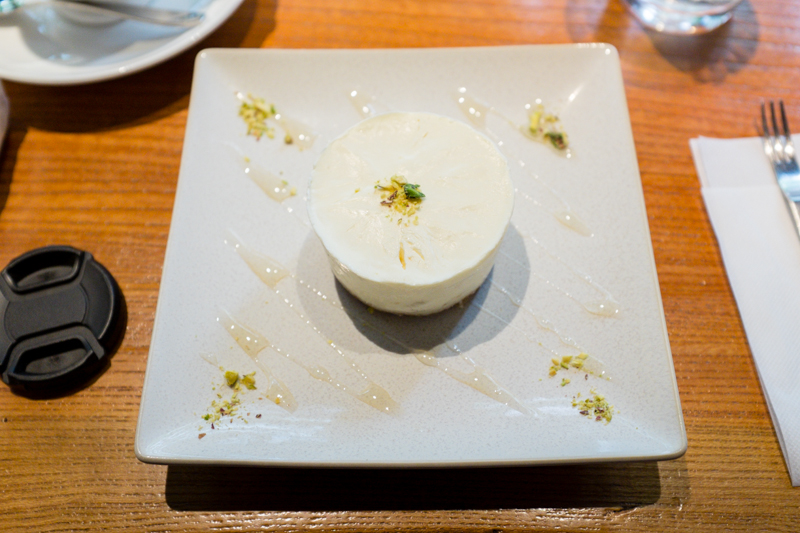
Single origin bean of the day.
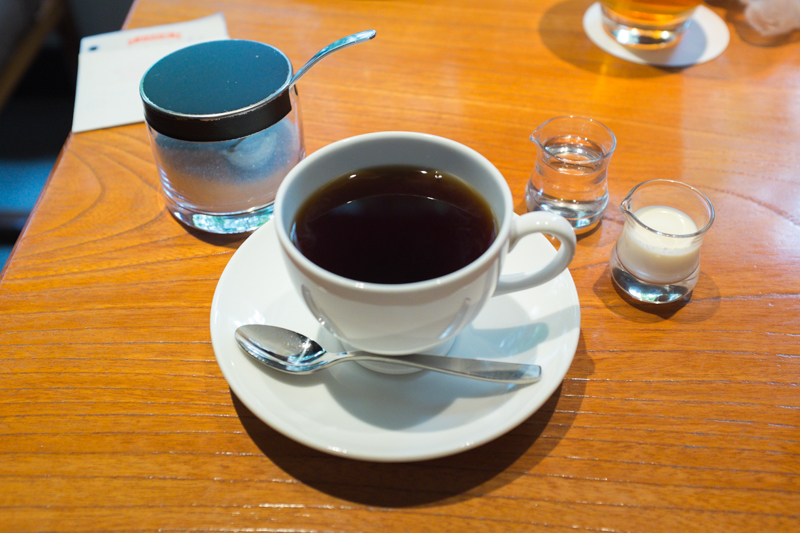
Cassia and cherry iced tea.
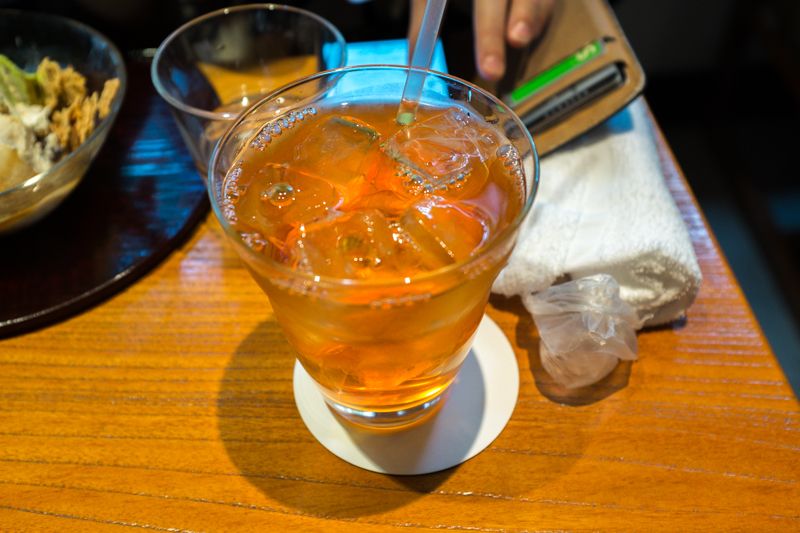
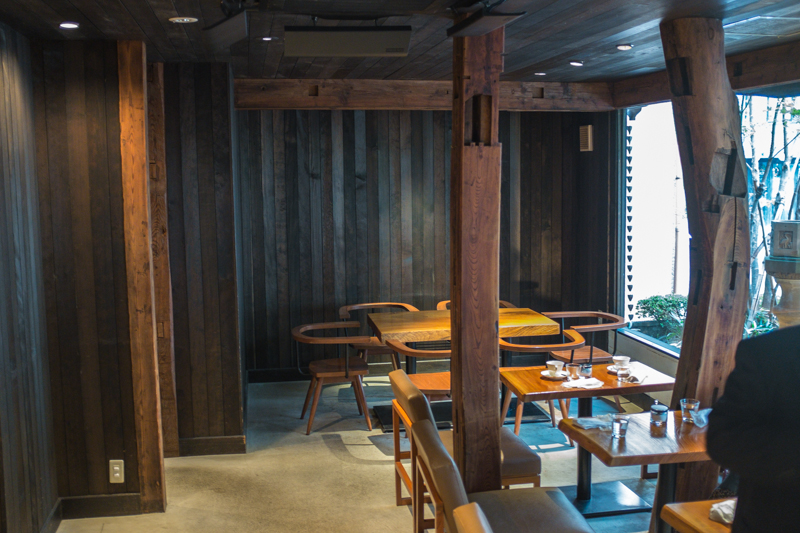
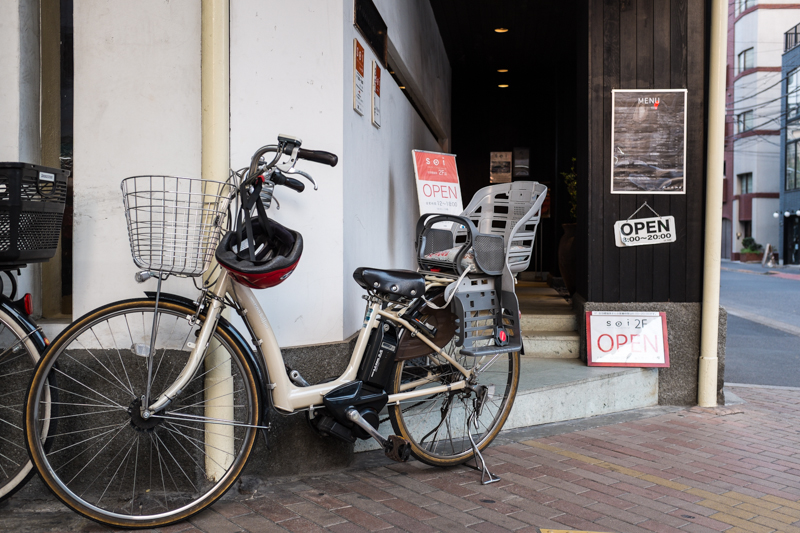
Kappabashi Coffee
3 Chome-25-11 Nishiasakusa
Taitō-ku, Tōkyō-to
Kanda Coffee
Kanda Coffee is a another great spot to grab a coffee. As you can see from the photo below, filter coffee is the speciality here, with either black or milk options being available. There’s a small food menu and it’s open from breakfast right through until late in the evening where it acts as more of a small bar.
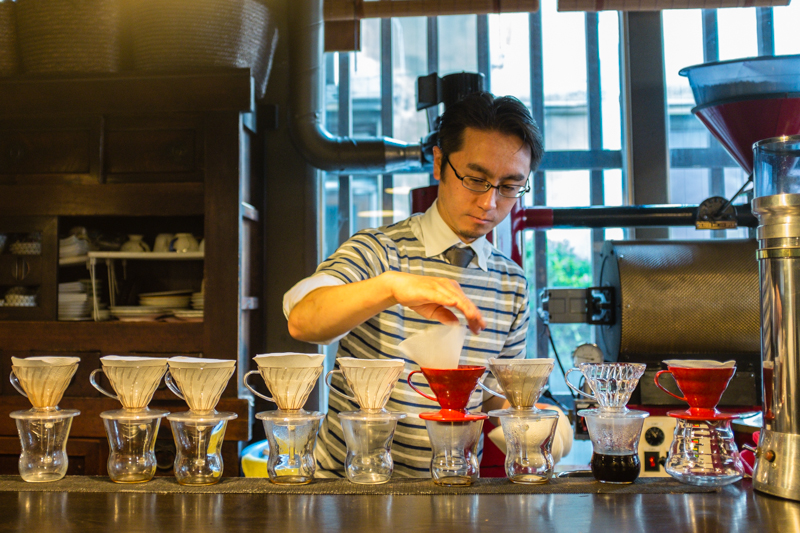

Kanda Coffee
2 Chome-38-10 Kanda Jinbōchō
Chiyoda-ku, Tōkyō-to
Moving on to tea, there’s no question that tea is more popular than coffee in Japan. There are many varieties of green tea in Japan, and further to that there are different grades of each variety, each having different flavours and strengths.
- Sencha is the most popular type of green tea in Japan. It has quite a grassy, sharp taste – the sharpness coming from the high tannin contact which results from its being exposed to direct sunlight during its entire life cycle.
- Gyokuro is shaded for 20 days after the first new season shoots appear. This lack of direct sunlight increases the theanine levels in the tea leaves, resulting in a tea that is rich in umami.
- Hojicha is similar to sencha but rather than using the upper leaves, the leaves closer to the ground are used. The leaves are roasted at a high heat which gives it a milder, toasted flavour.
- Matcha is a powdered green tea that uses the same leaves as Gyokuro. Instead of being rolled/twisted like the other types of green tea, the leaves go through several drying processes and are then ground into a fine powder.
Ippodo Tea
Ippodo Tea is a great place to try Japanese green tea. Originating in Kyoto, Ippodo has been producing and selling tea for almost 300 years. They have every variety imaginable to try and a great tea shop full of different teas and tea related paraphernalia.
I tried the Gyokuro Kanro tea, which was a medium grade Gyokuro. The waitress explained the brewing process to me. First I placed the tea into the kettle and filled it with water. The 4 cups were to get the temperature of the tea down to 60%. Each pour (30 second intervals from memory) reduced temperature by 10 degrees. The tea had a very strong umami content and was very pungent to being with. With subsequent pours the flavour became more mild. It was enjoyable, but personally I prefer sencha.
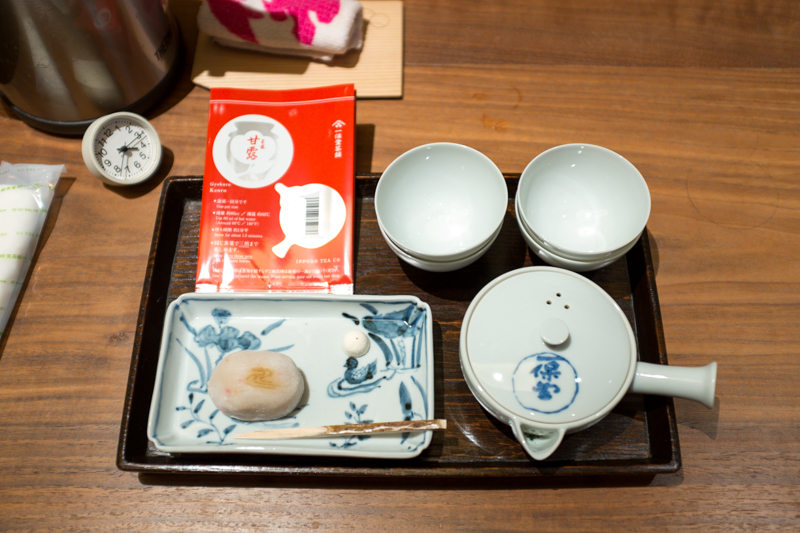
My wife ordered a Matcha tea set which consisted of pure unsweetened matcha, a cup of sencha and a chocolate.
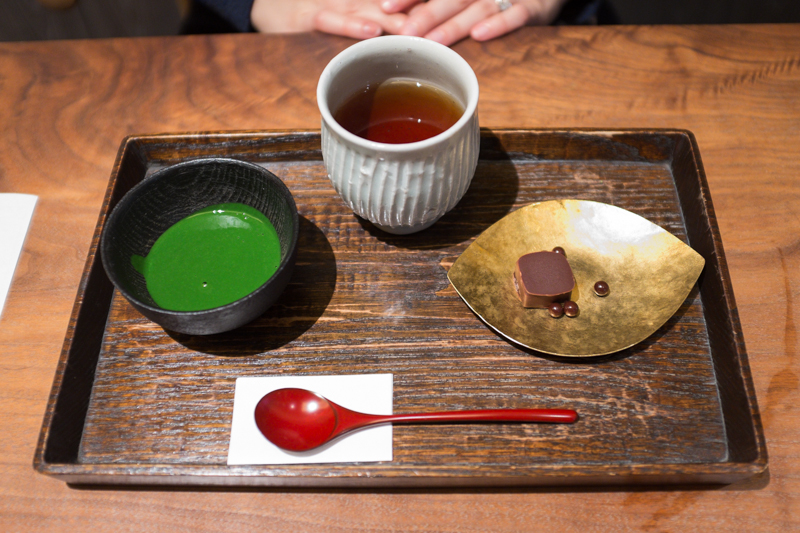
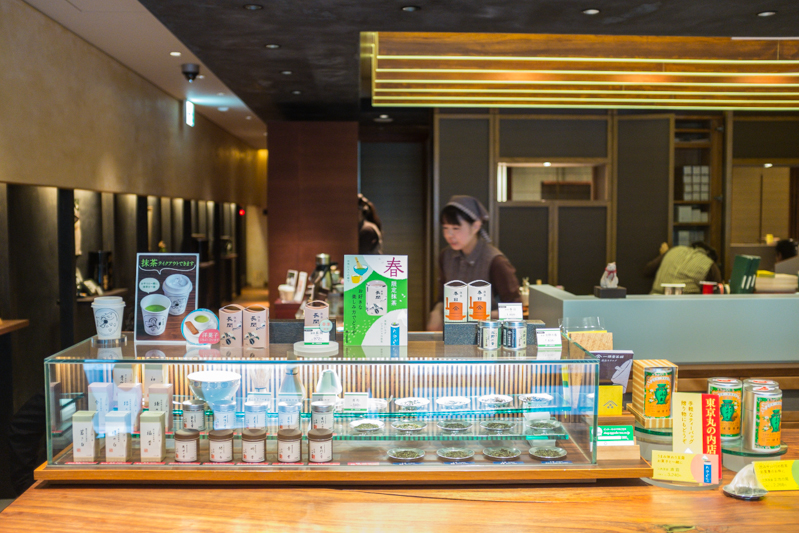
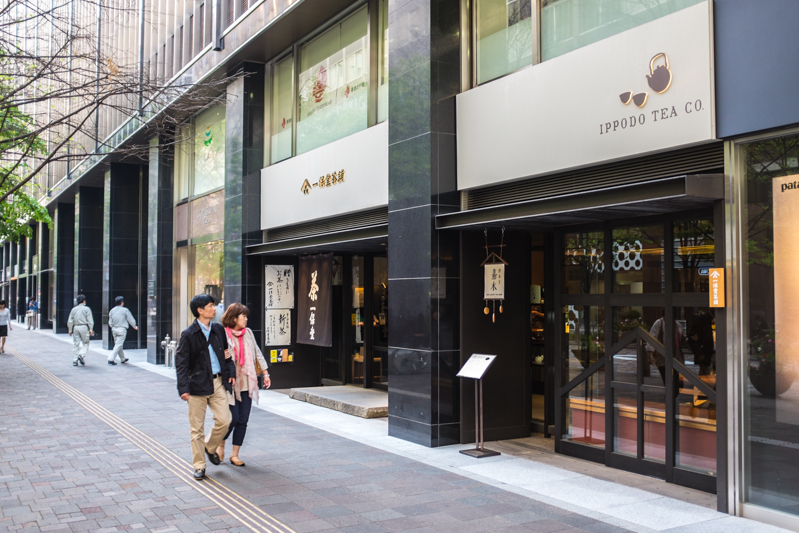
Ippodo Tea
3 Chome-1-1 Marunouchi
Chiyoda-ku, Tōkyō-to
Tea Shop Kenyan
Another nice cafe is Tea Shop Kenyan. They offer a variety of Western and Japanese tea drinks and had what looked like some decent cake and savoury food options. I got myself the specialty, which is a rich iced milk tea. Nothing fancy but it hit the spot. A great place to chill out if you’re looking for a cafe.
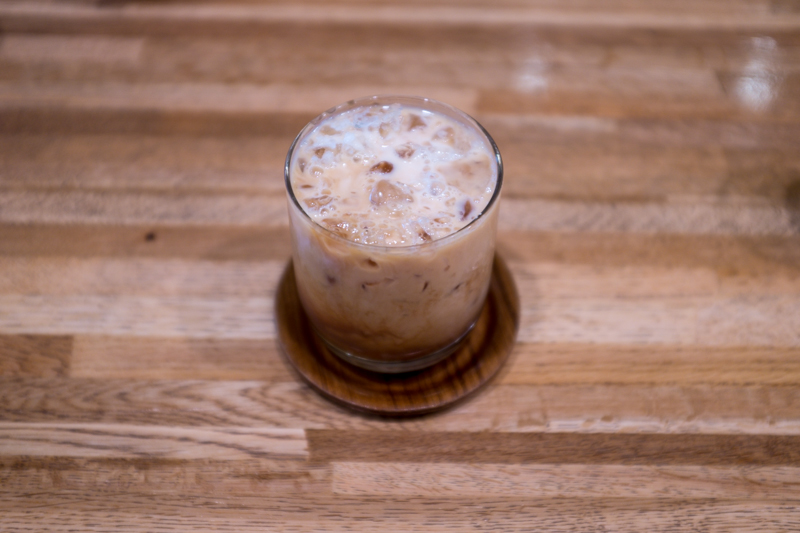
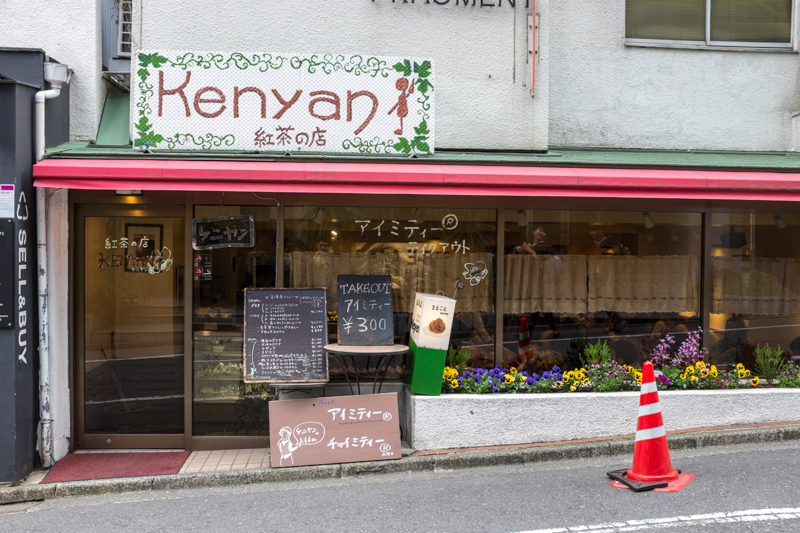
Tea Shop Kenyan
1st Floor Nambu Building
1 Chome-14-8 Jinnan
Shibuya-ku, Tōkyō-to
Trends
Tokyo, just like any other city in the world has its trends and on the food front.
Food Trucks
The every popular food truck has found its way into Tokyo. Outside of this office building there were 4 different food trucks offering a variety of foods.
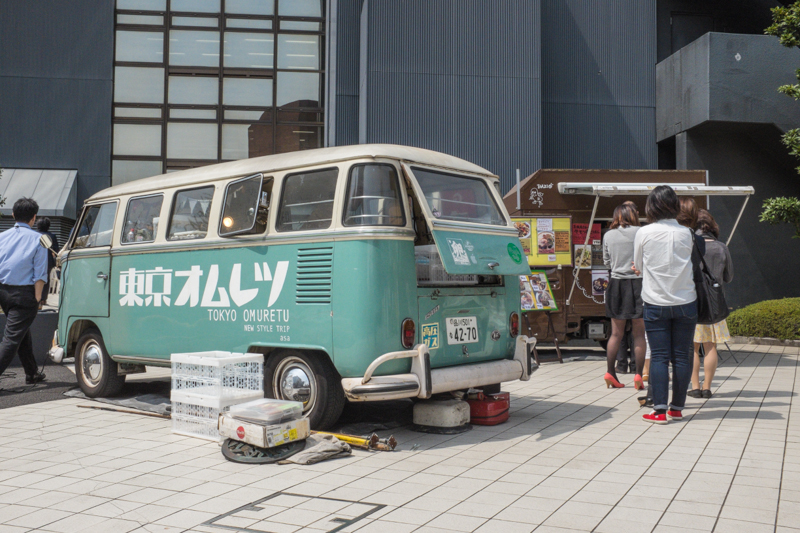
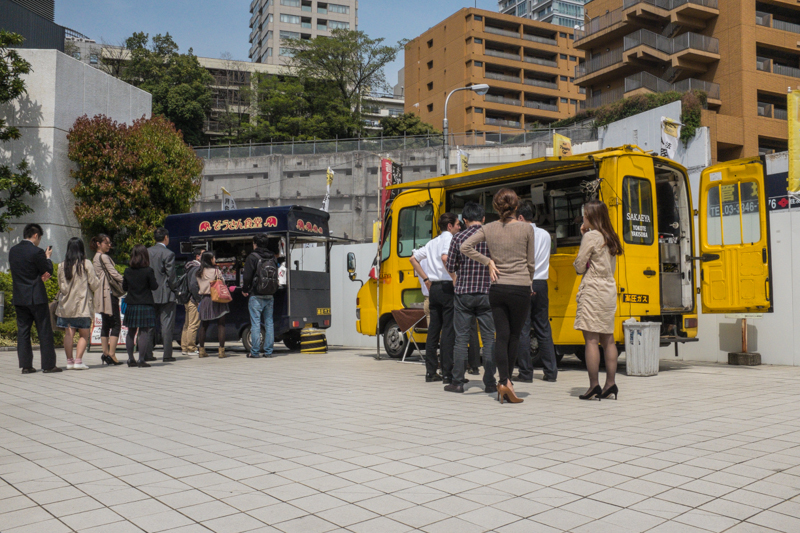
Popcorn
Flavoured popcorn was something else that seemed to be all over the place in Tokyo. Pop’s Popcorn in Harajuku was one of the place that we tried and there were a variety of flavours to choose from. We got the raspberry and the grape flavours which were quite nice.
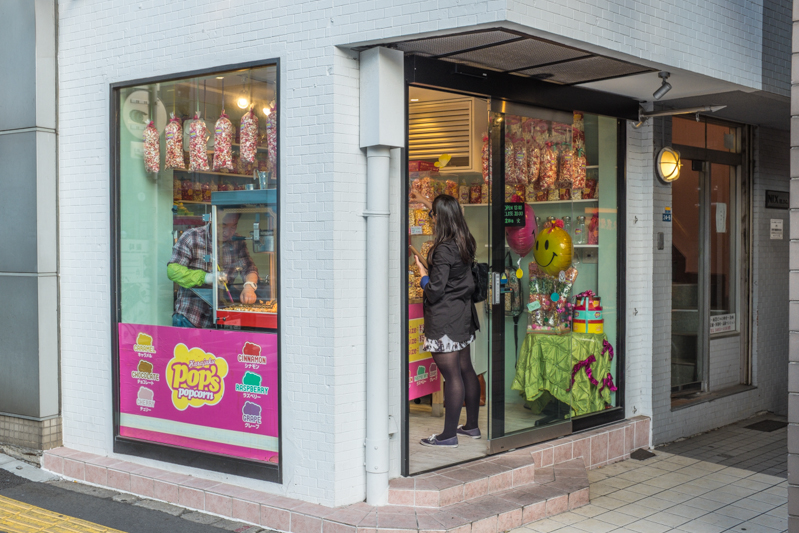
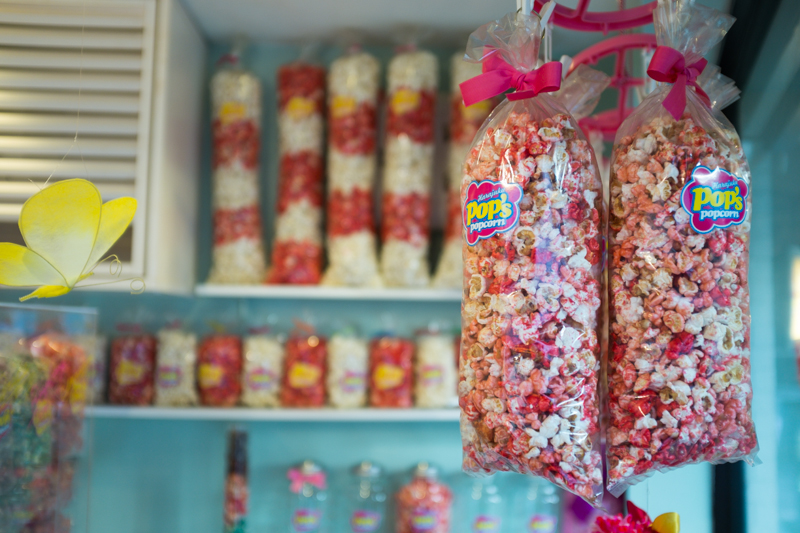
Pop’s Popcorn
3 Chome-24-5 Jingūmae
Shibuya-ku, Tōkyō-to
KuKuRuZa is a Seattle based company that sells gourmet flavoured popcorn. We walked past a few times during our stay in Tokyo and every time there was a big line outside so we figured we’d give it a go and see what all the fuss was about. A variety of interesting flavours are on offer – we tried the raspberry and vanilla, truffle fromage porcini, and cinnamon bun. They were all very tasty and it was obvious that the ingredients were high quality – nothing tasted fake. By far the best of the 3 that we tried was the cinnamon bun, which was had lashes of icing over the popcorn.
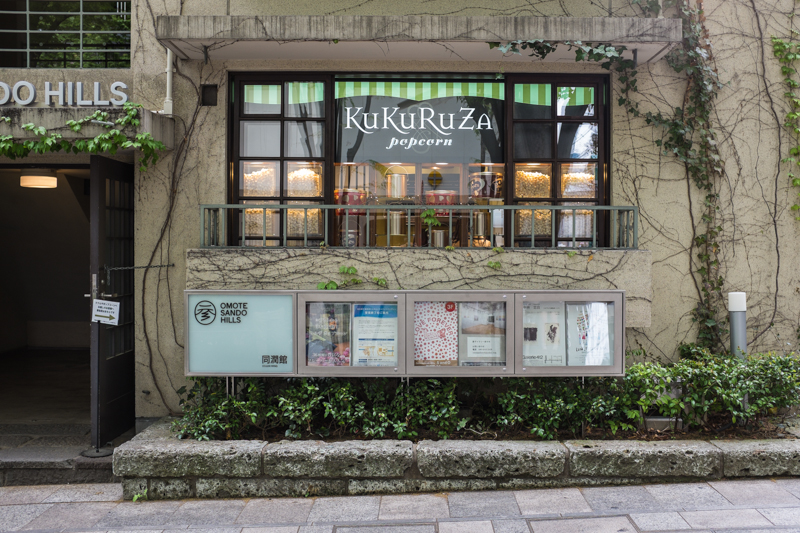
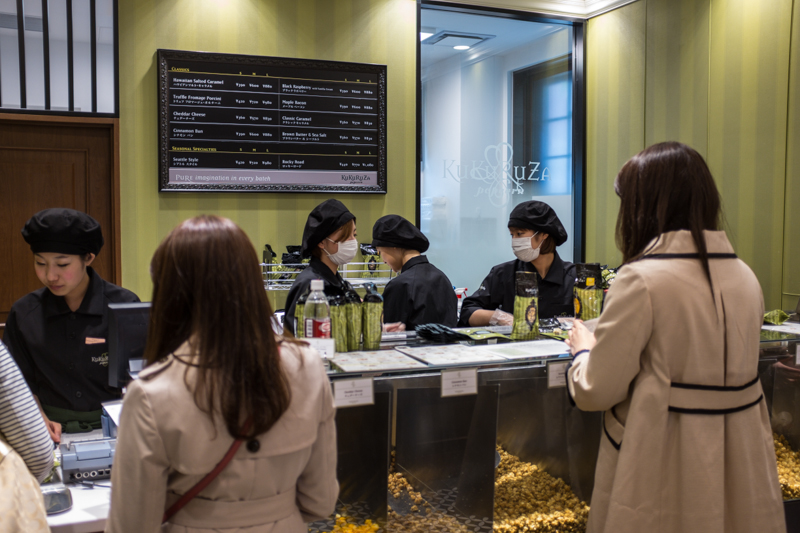
KuKuRuZa
4-12-10 Jingumae
Shibuya-ku, Tōkyō-to
Crepes
Another very popular things that we saw all over Tokyo and had been told about by a restaurant owner back in Kyoto as something “all the young people are eating” were rolled pancakes filled with all kinds of sweet and savoury toppings. We didn’t try any but one of the most consistently popular ones that we saw was Santa Monica Crepes, right in the heart of Harijuku.
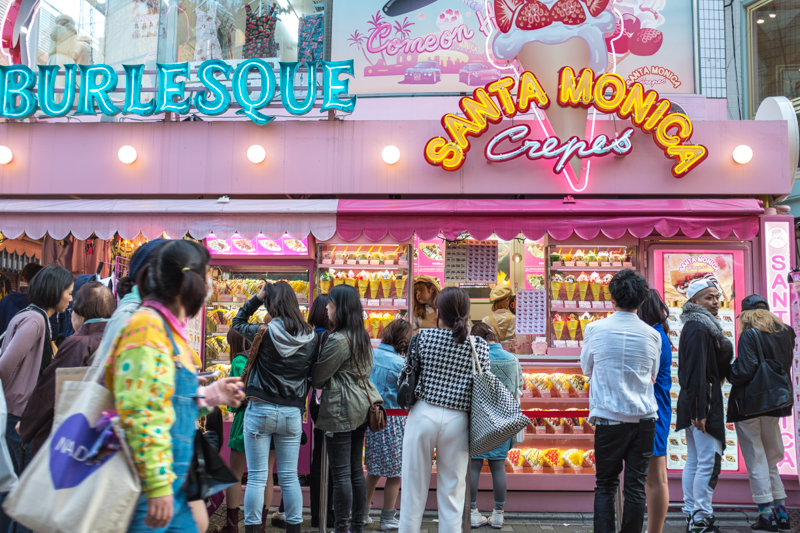
Santa Monica Crepes
1 Chome-9-31 Jingūmae
Shibuya-ku, Tōkyō-to
I hope you’ve enjoyed reading through my Tokyo Food Guide and would love to hear about any Tokyo food recommendations you might have in the comments below. If you’re planning a trip to Osaka or Kyoto, check out my Osaka Food Guide and Kyoto Food Guide.


